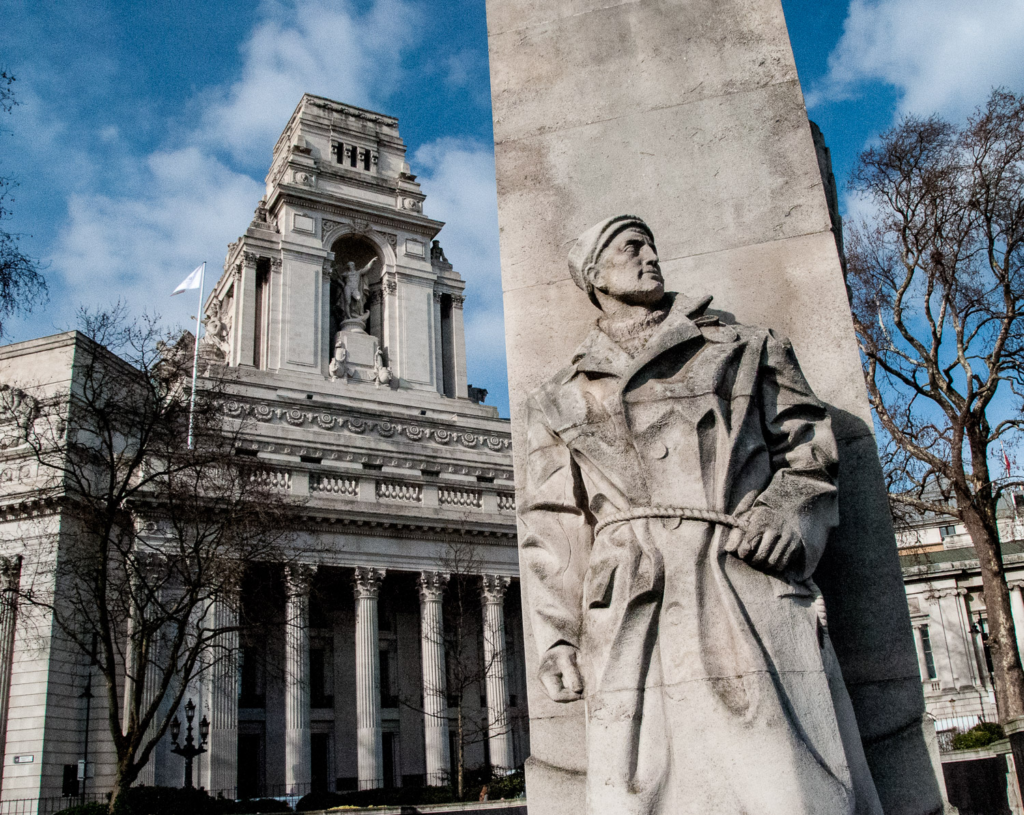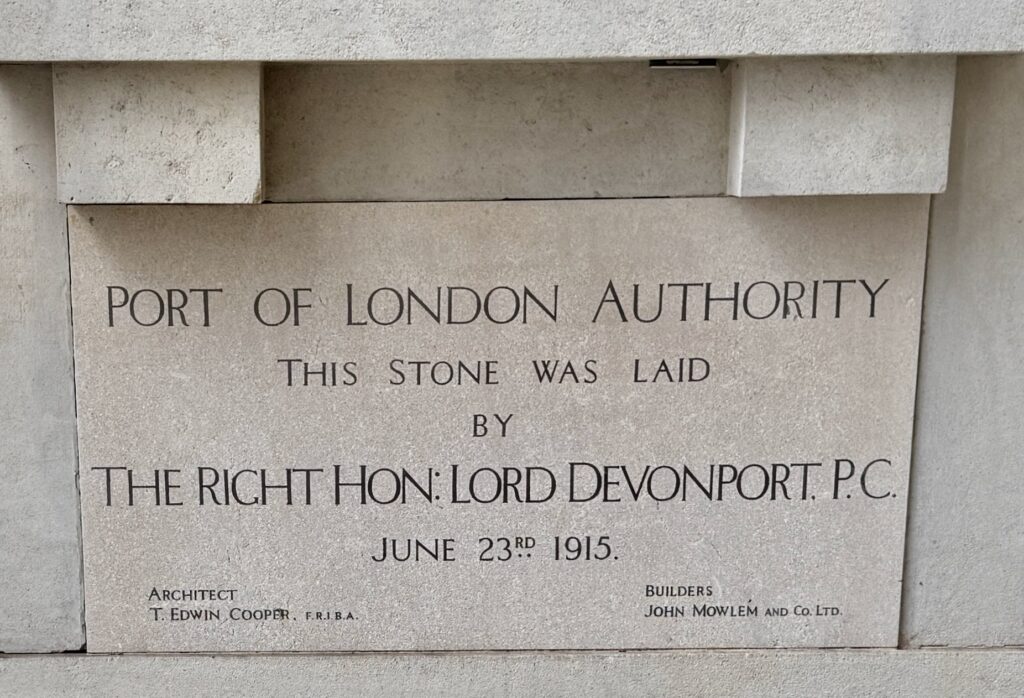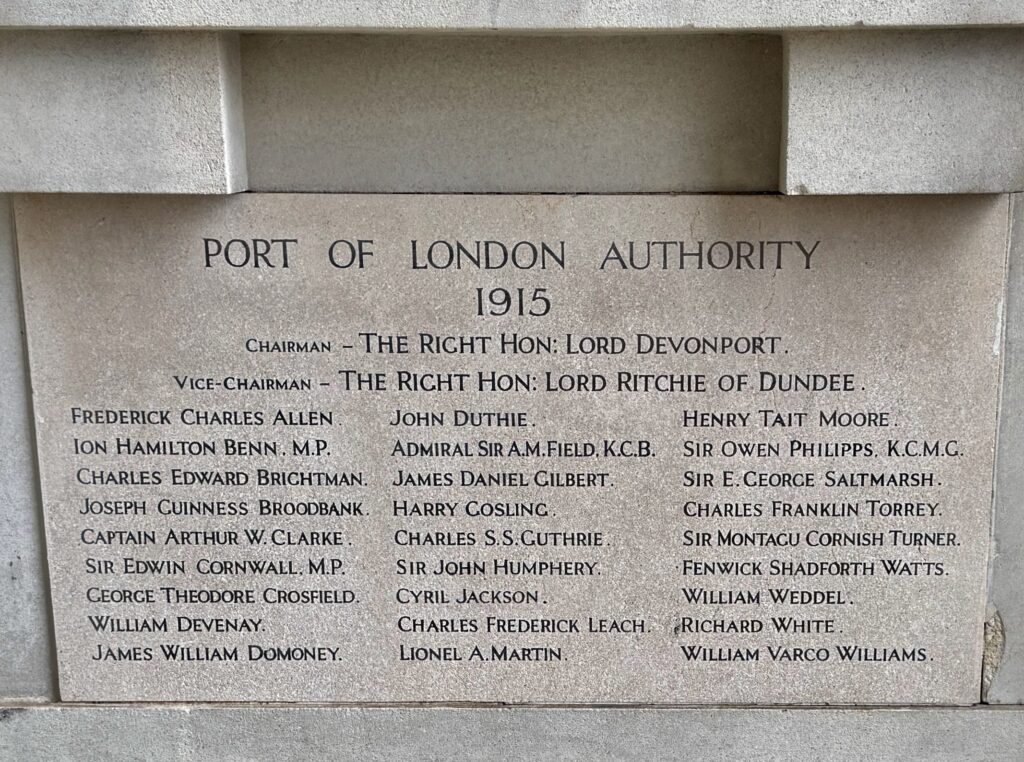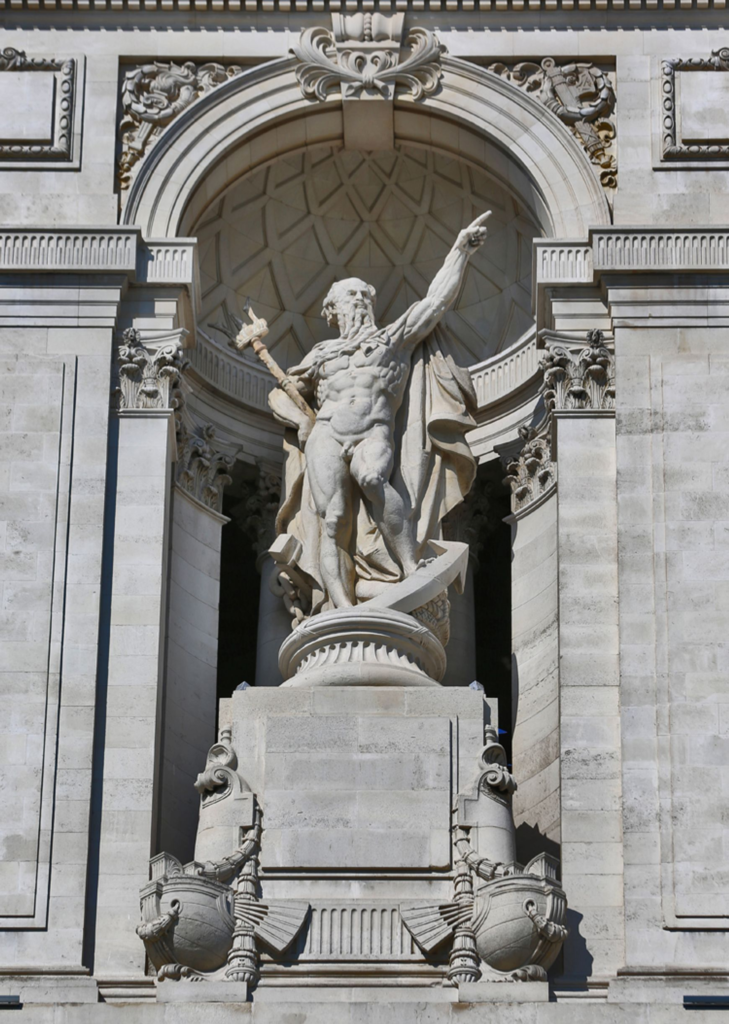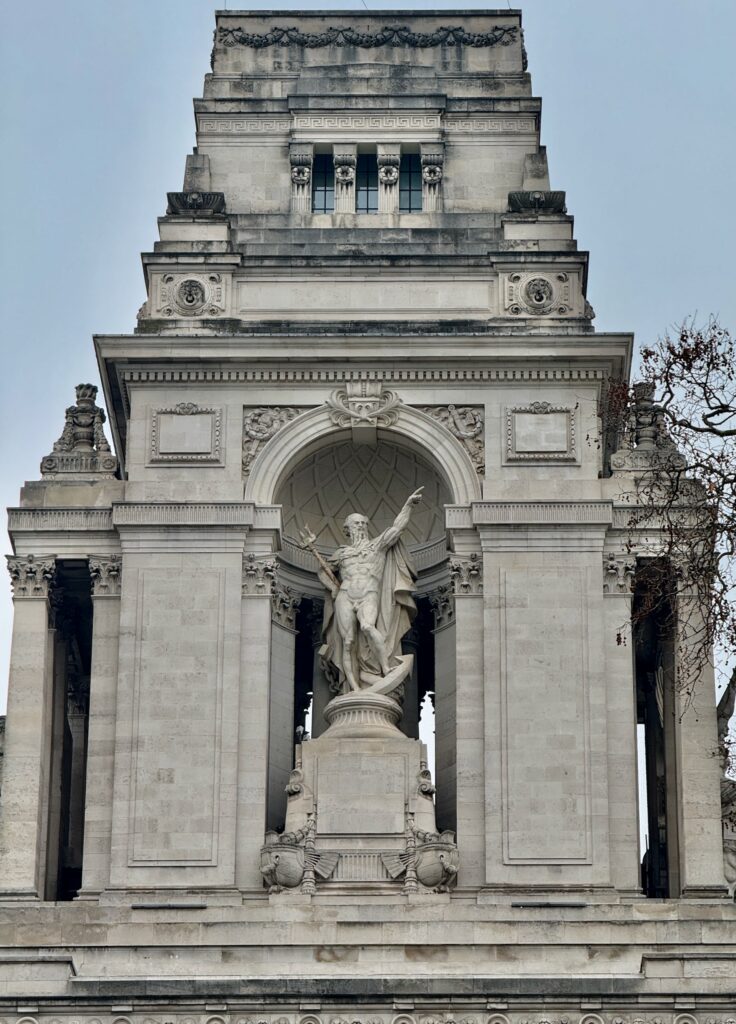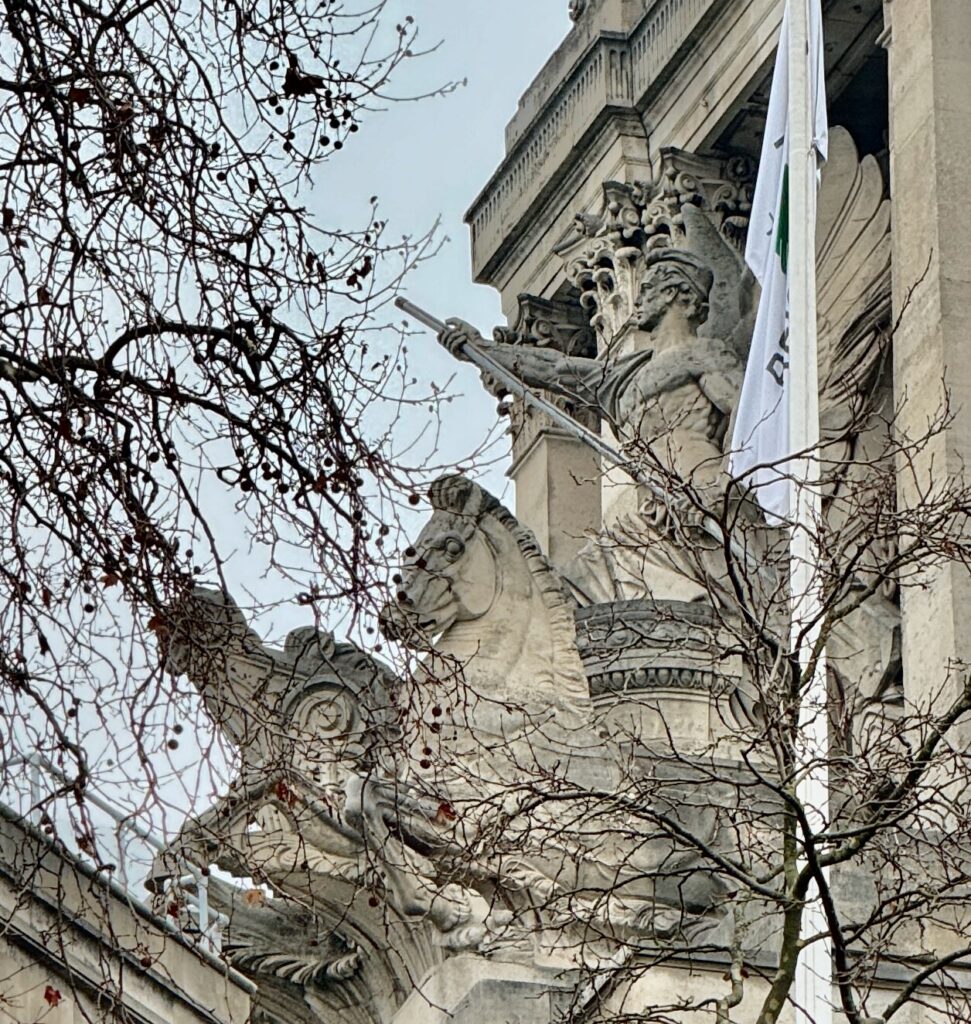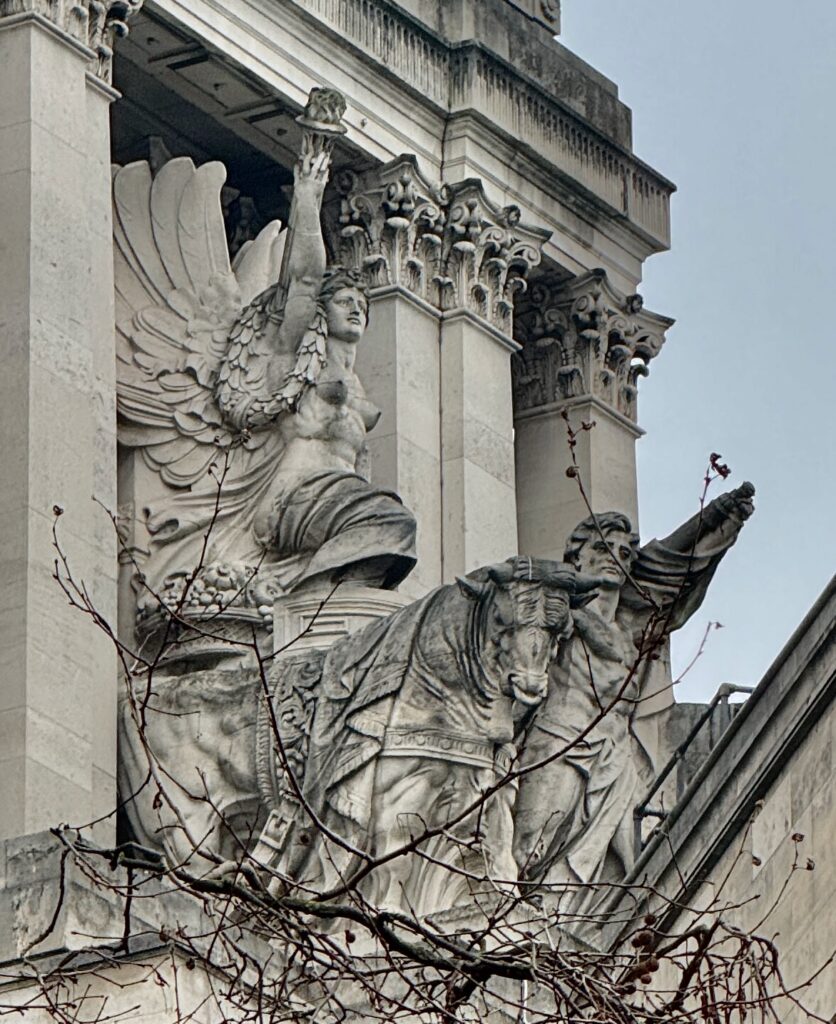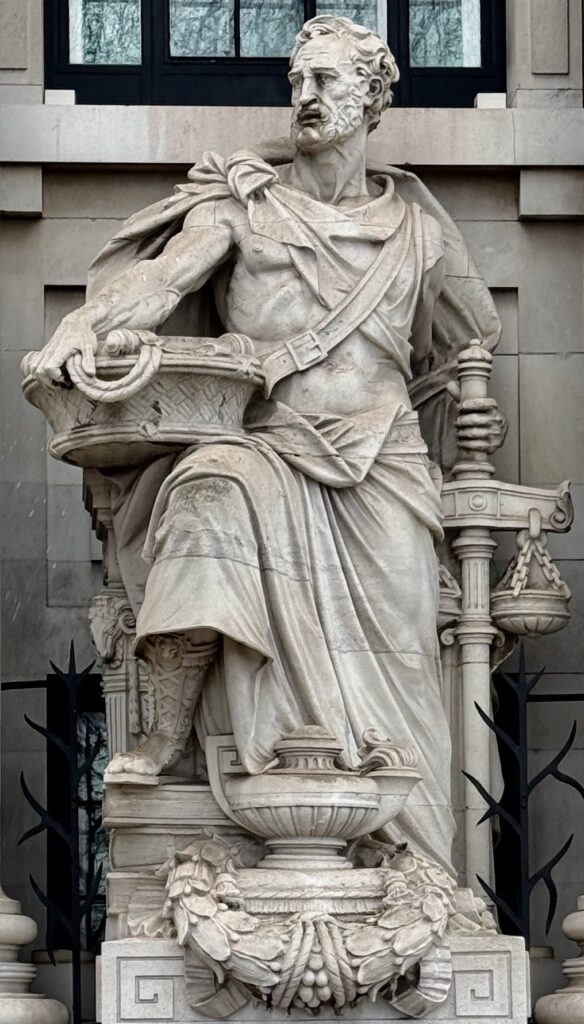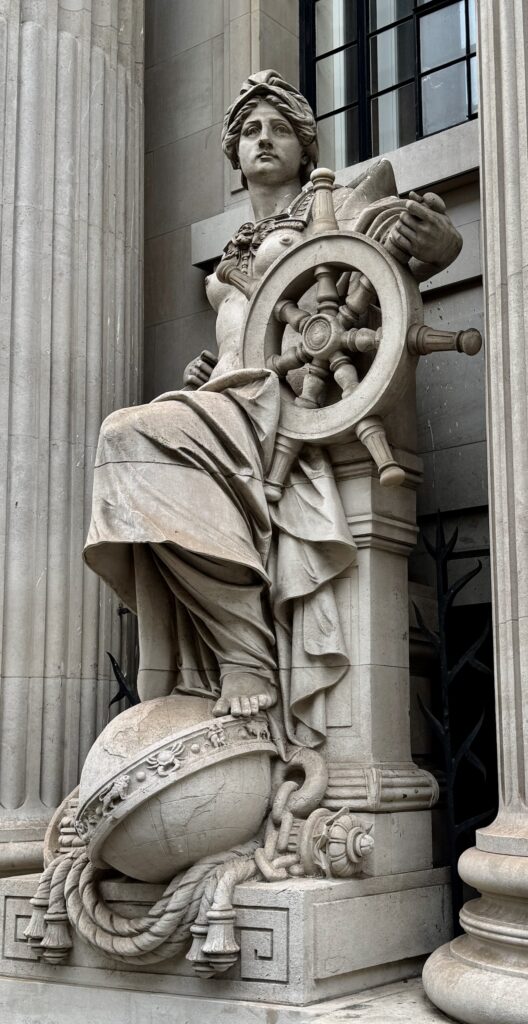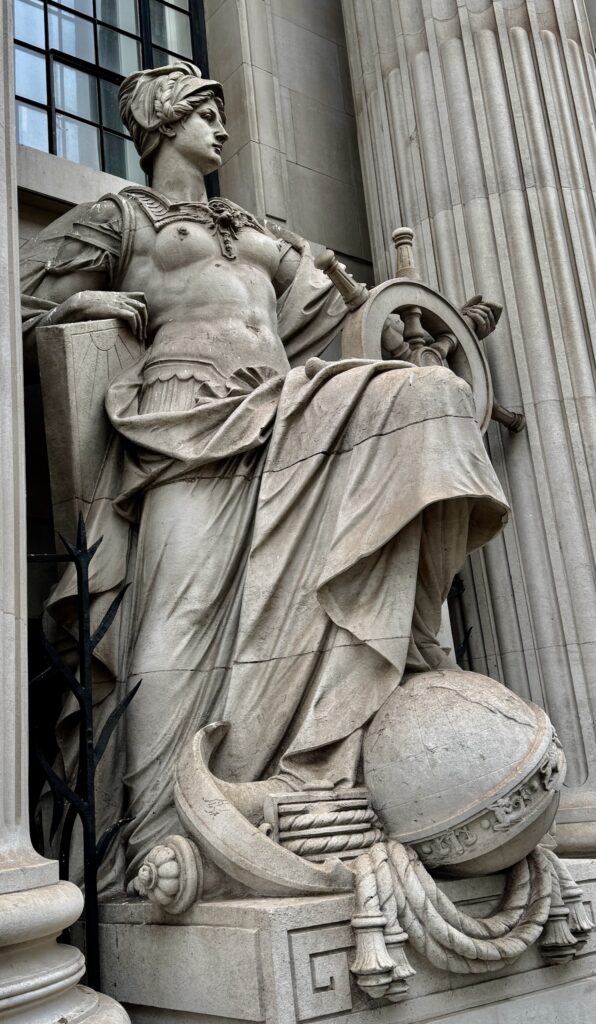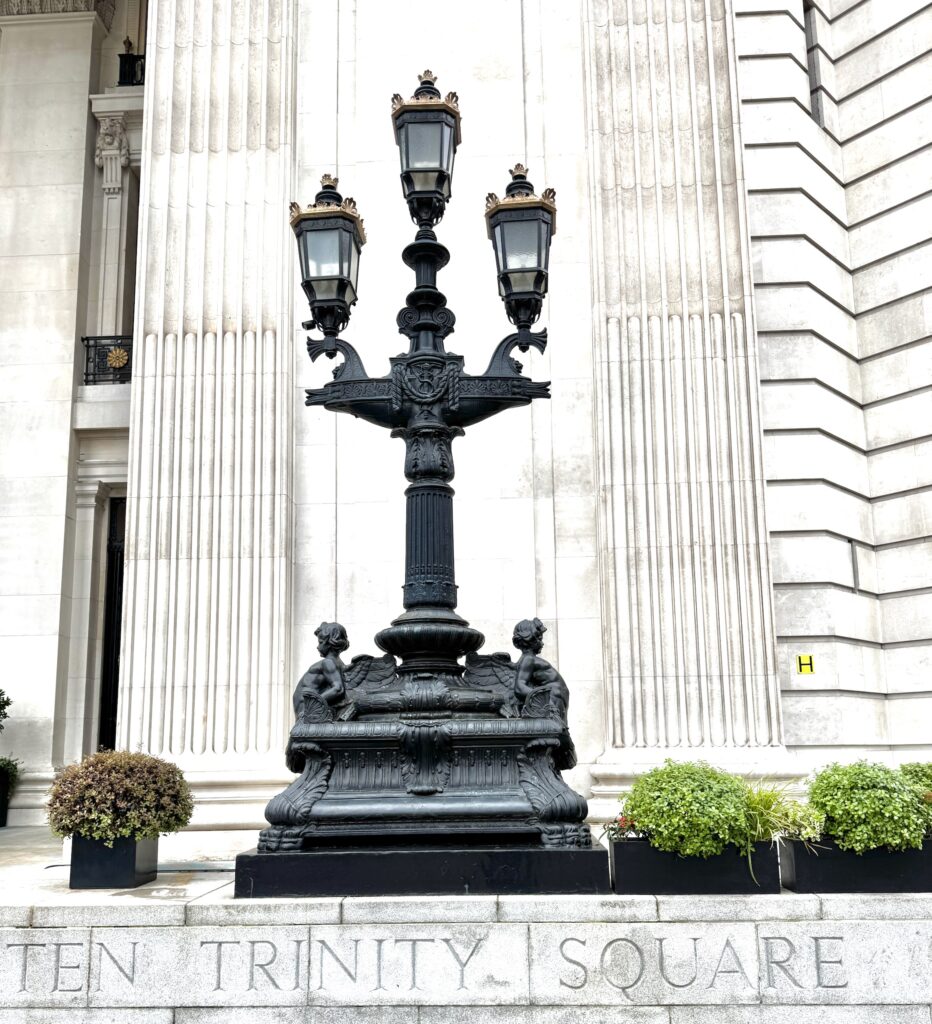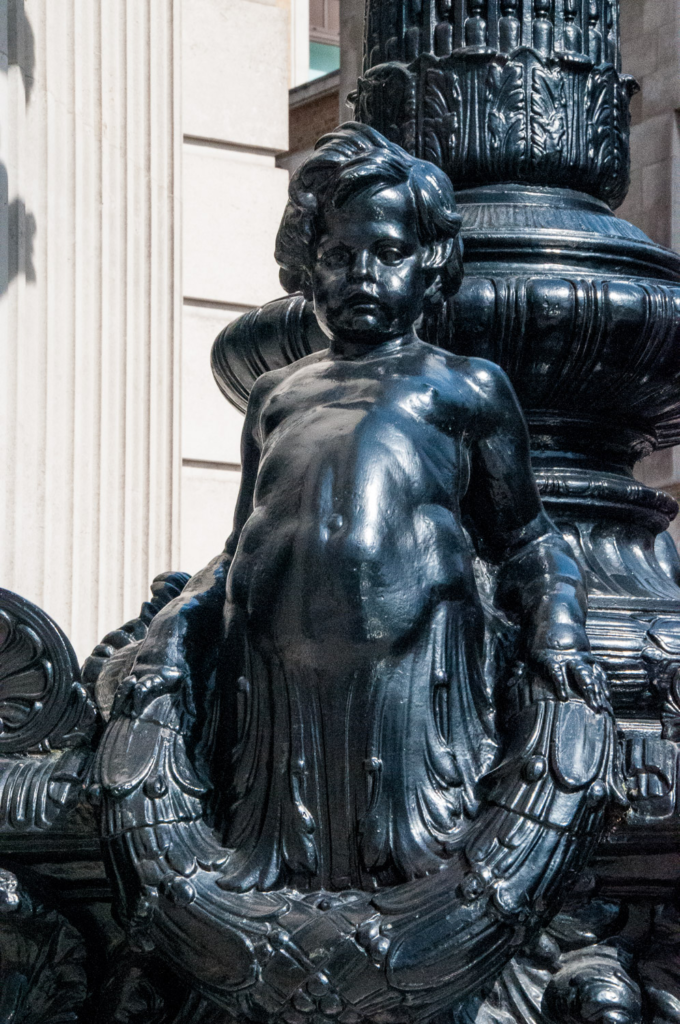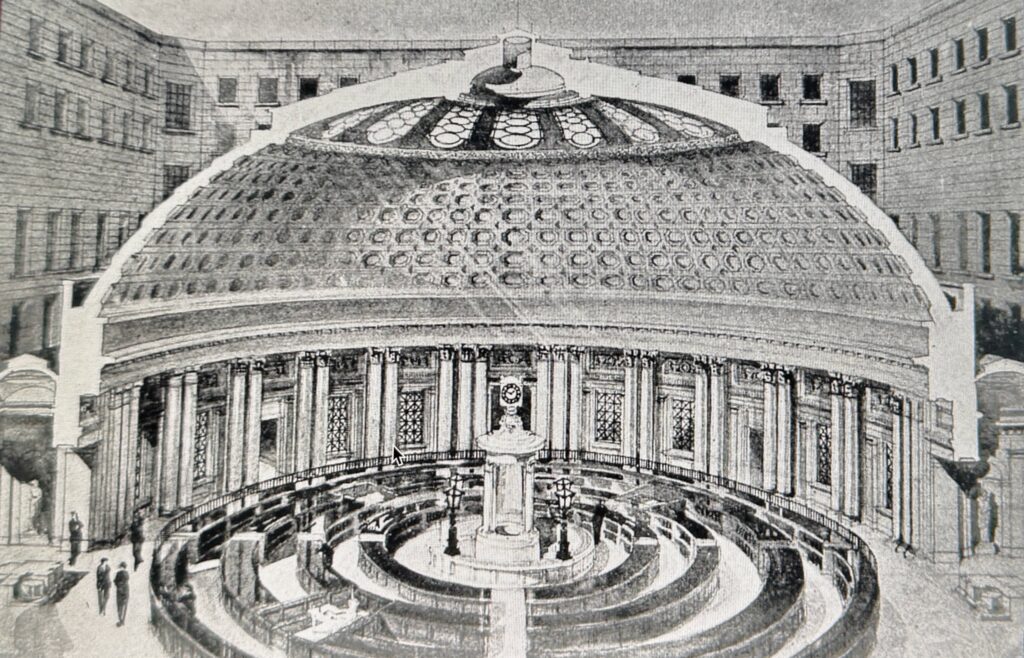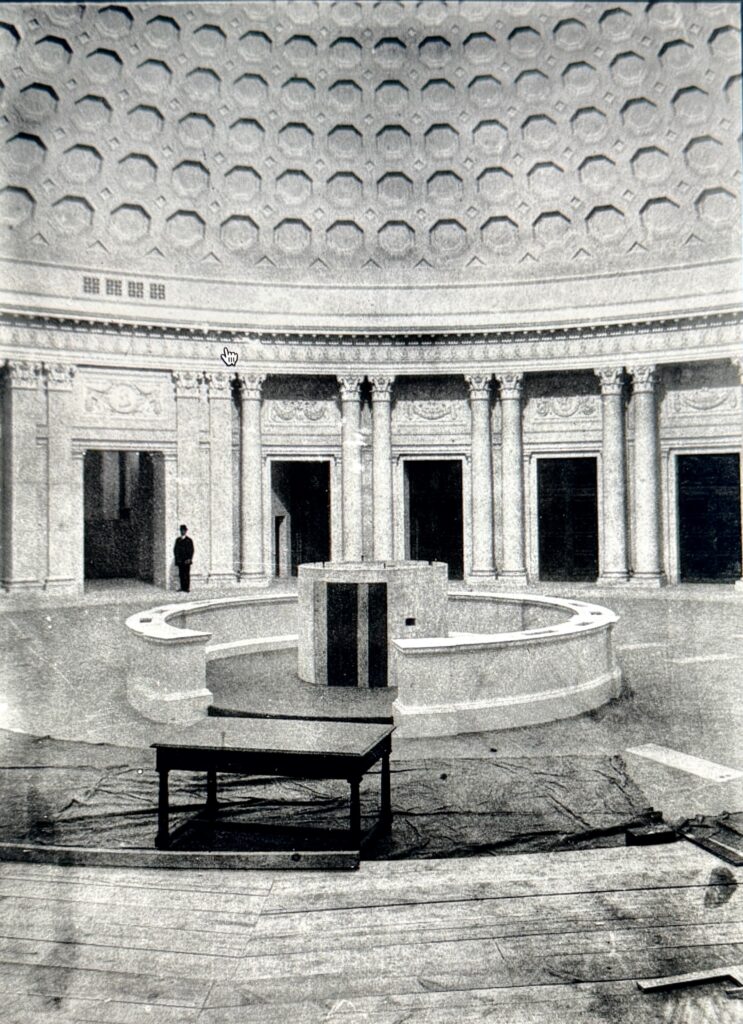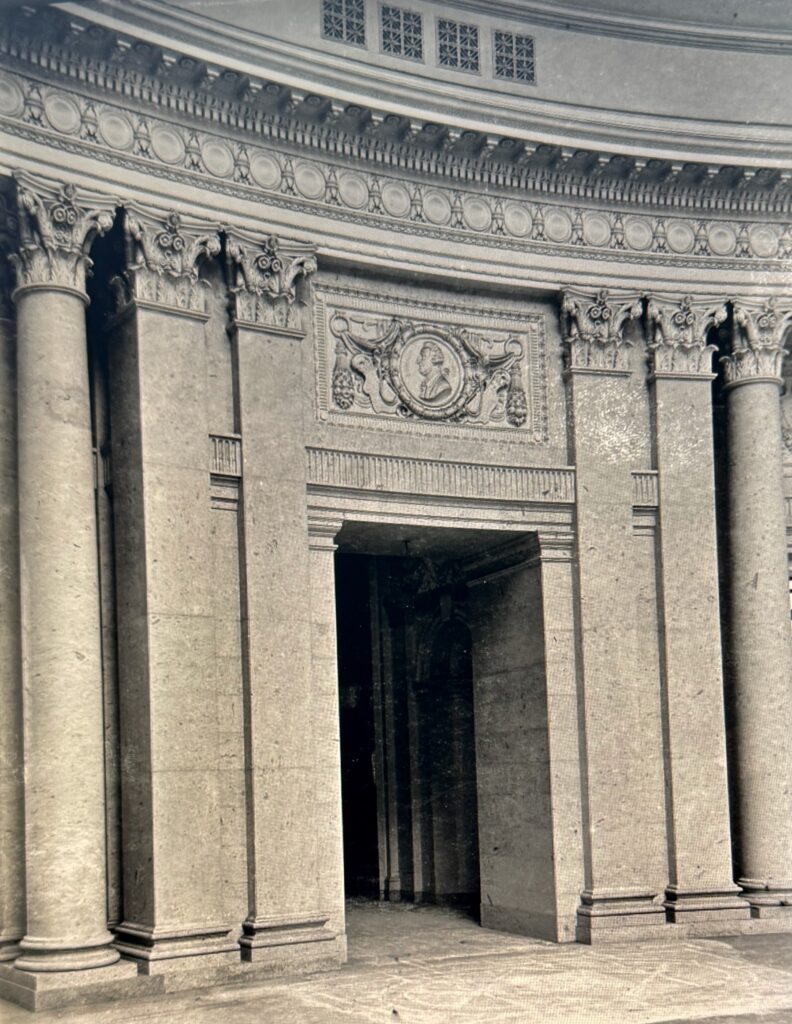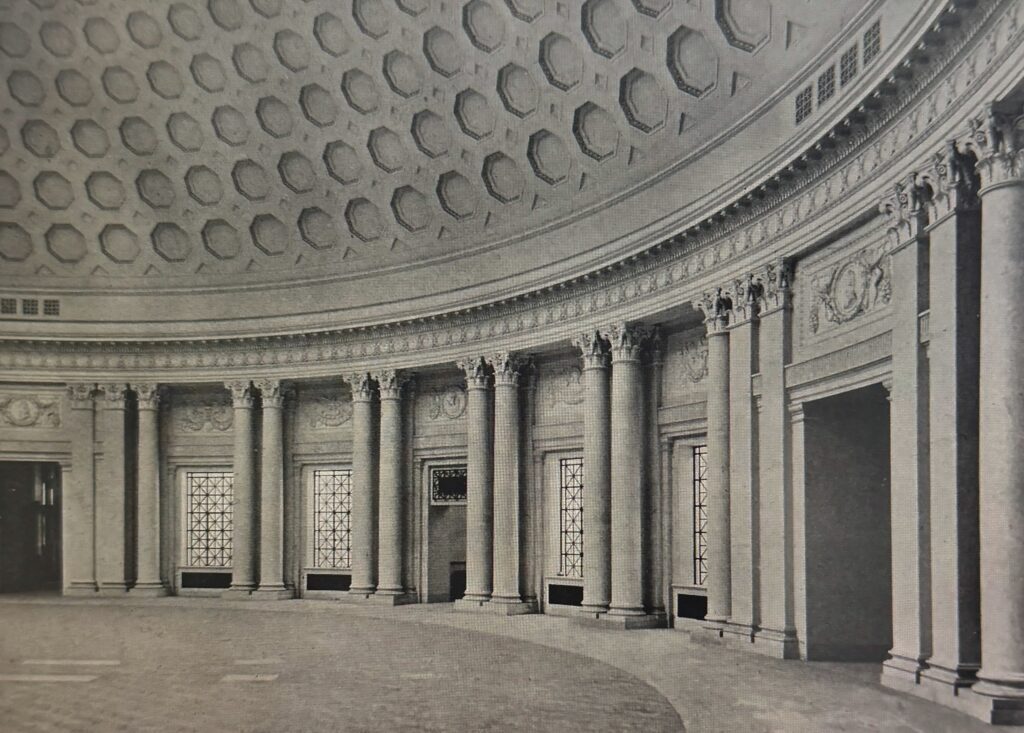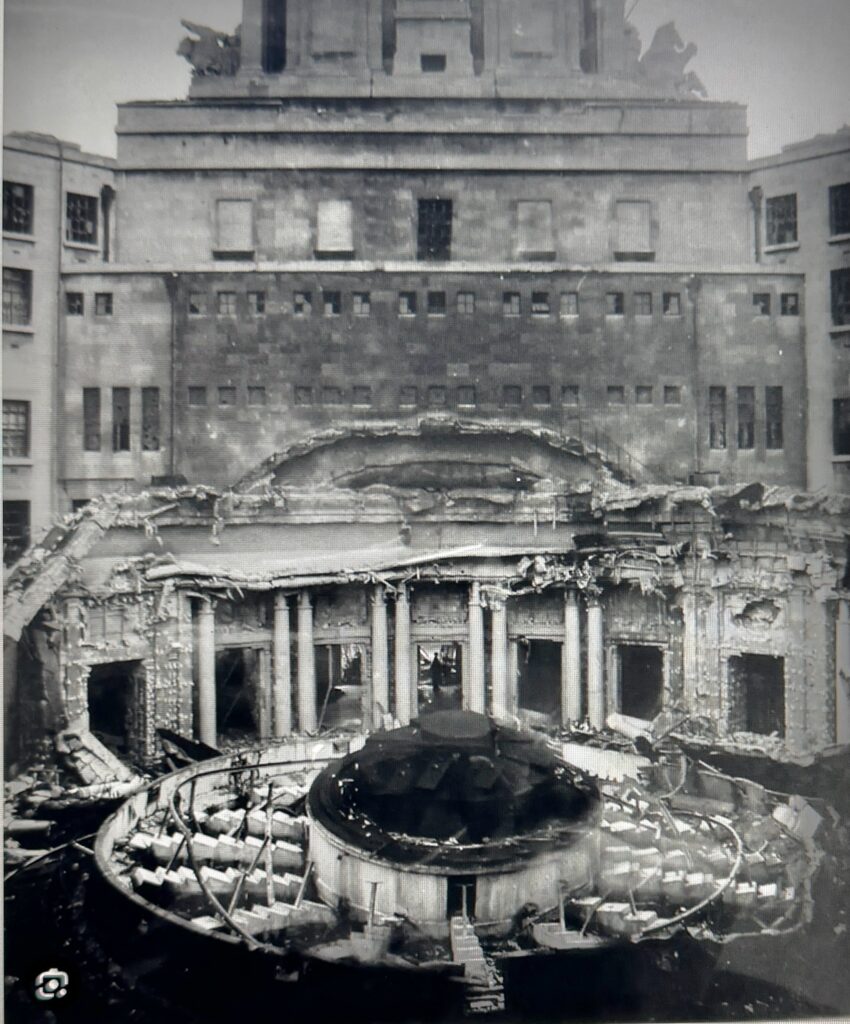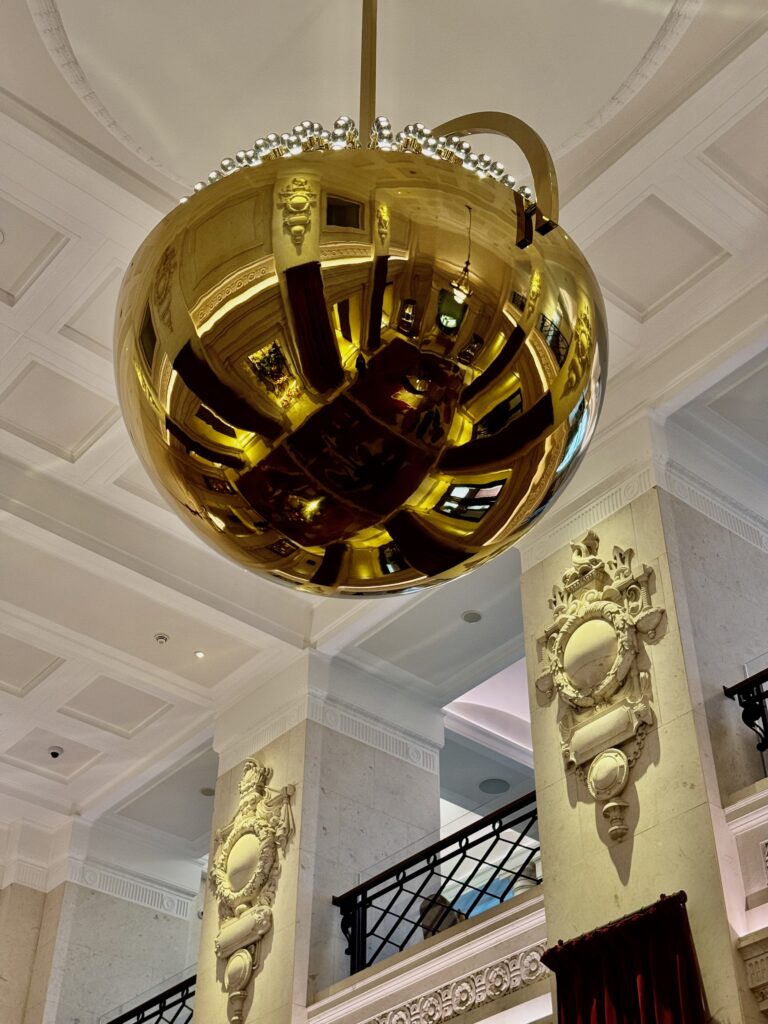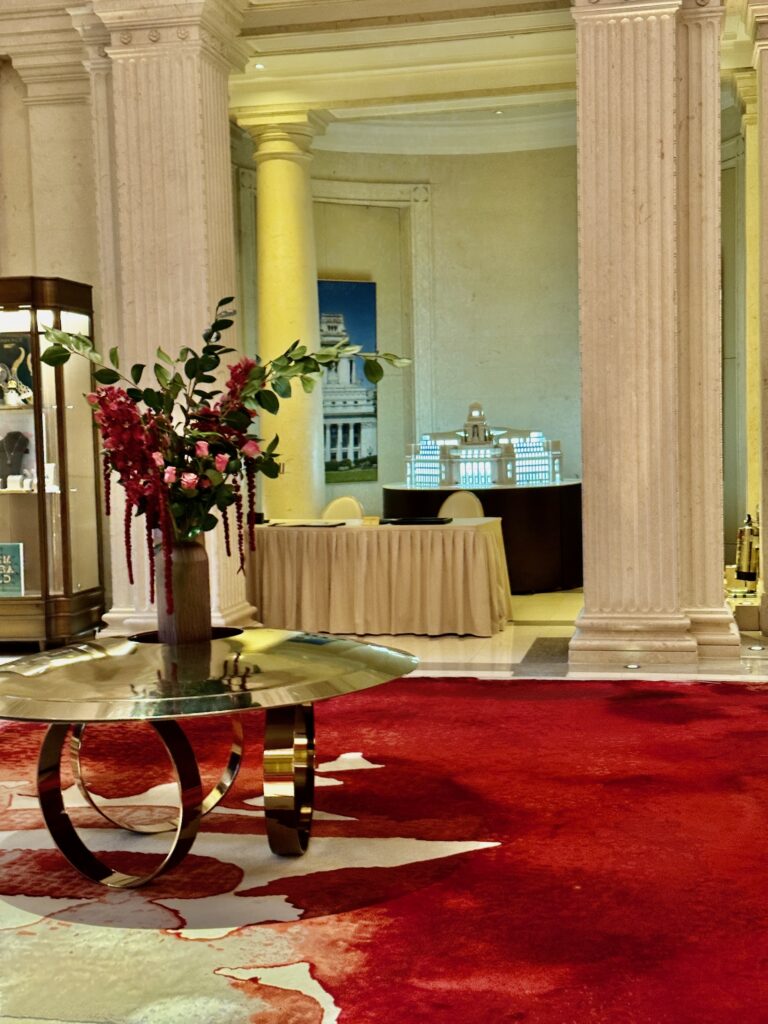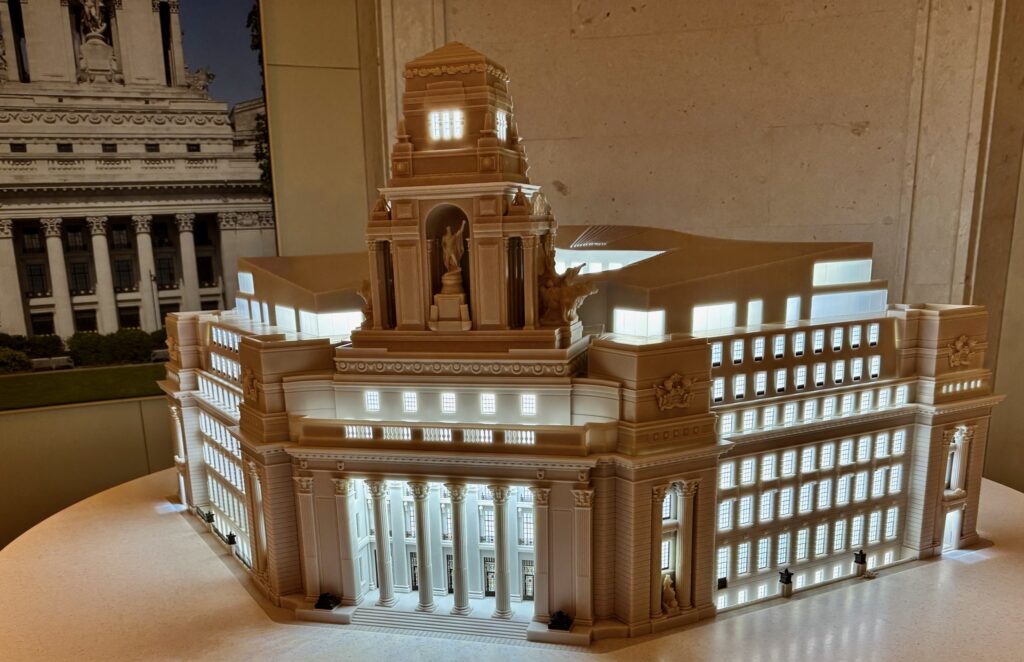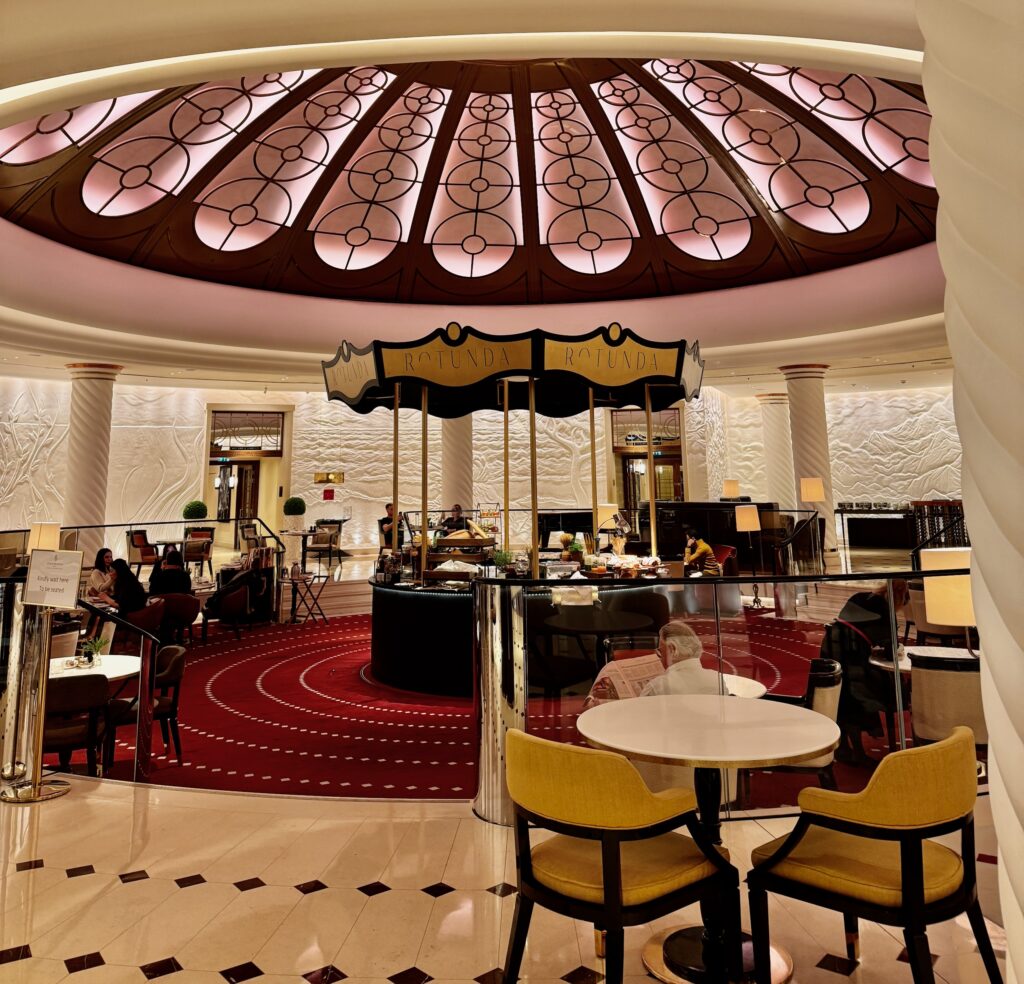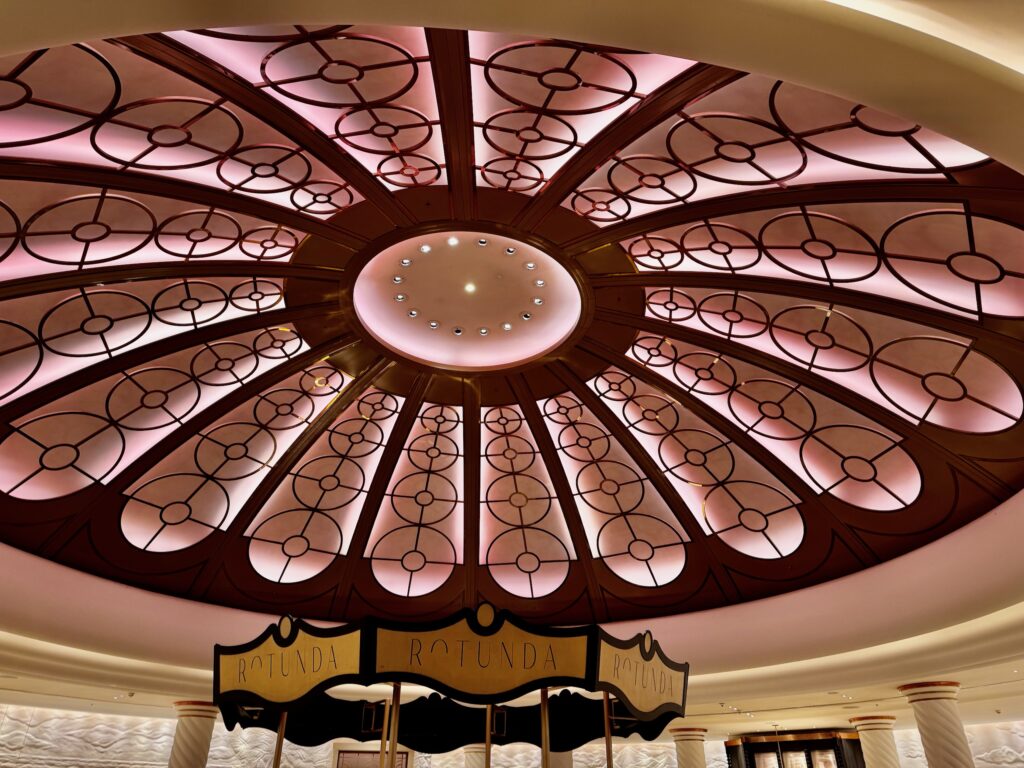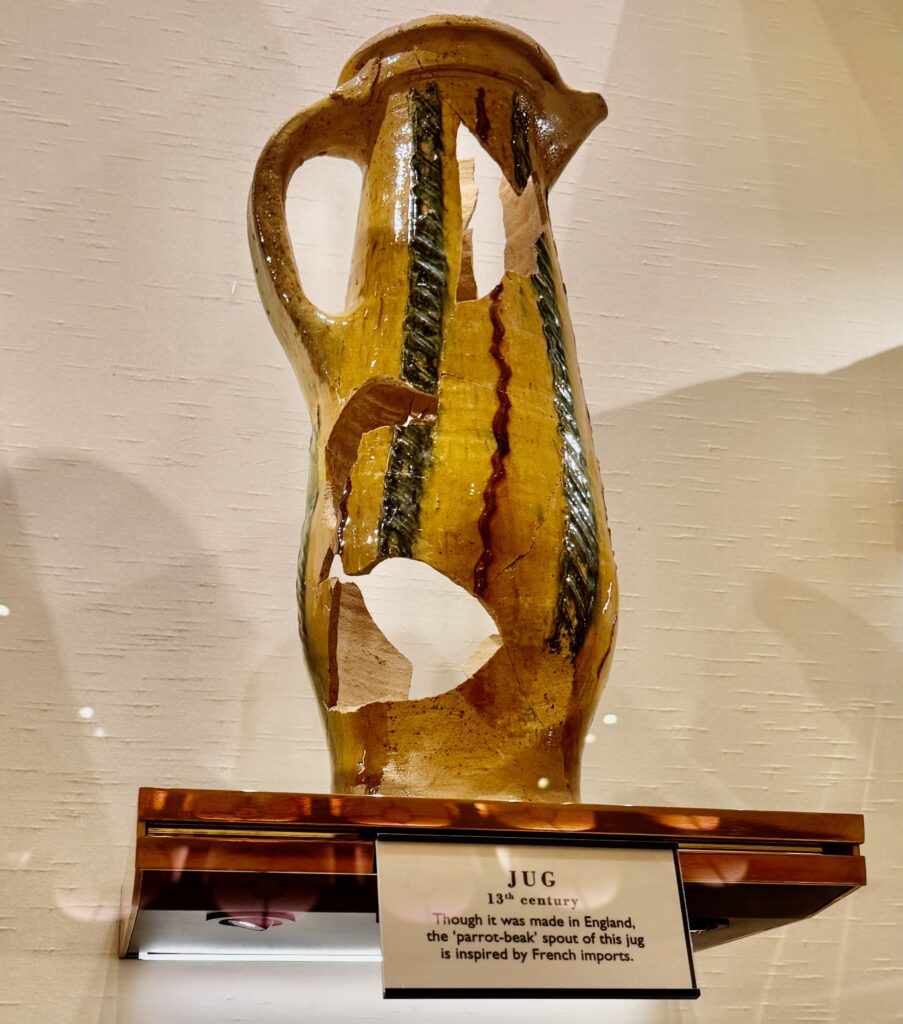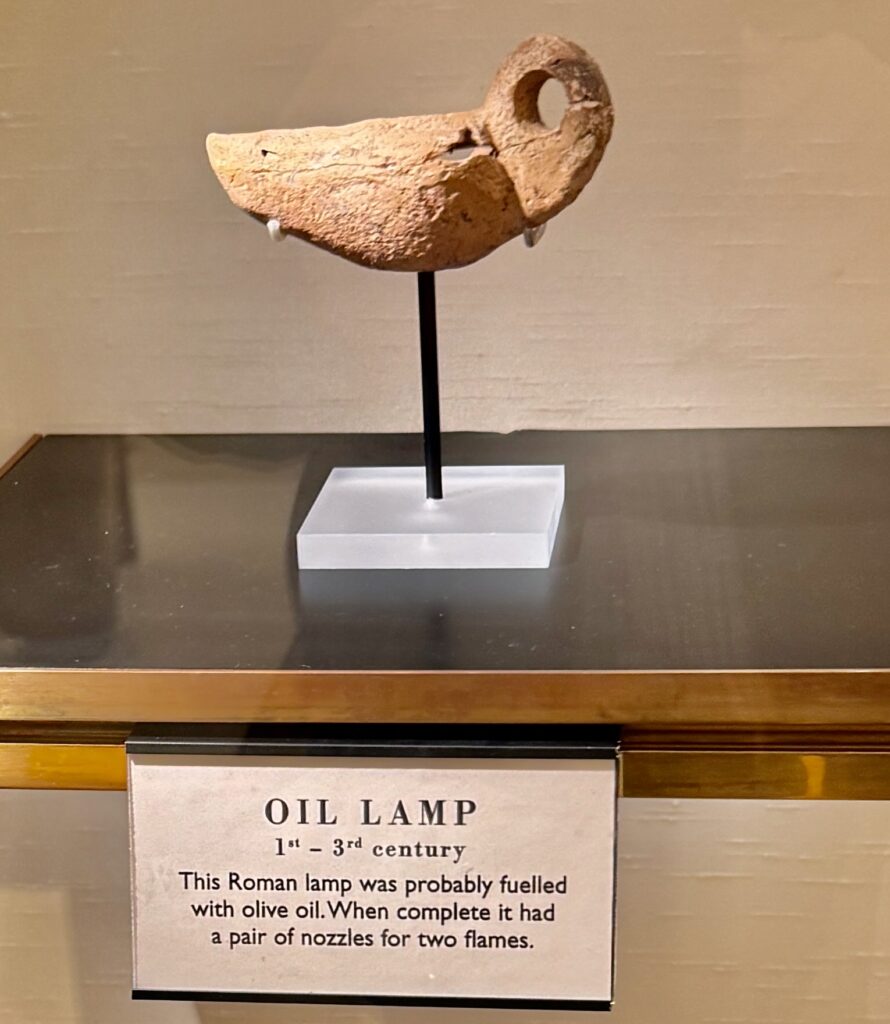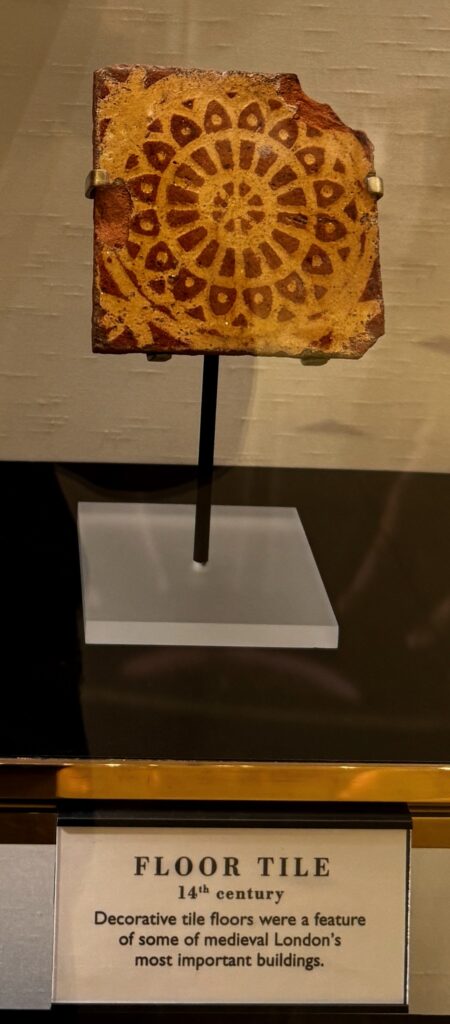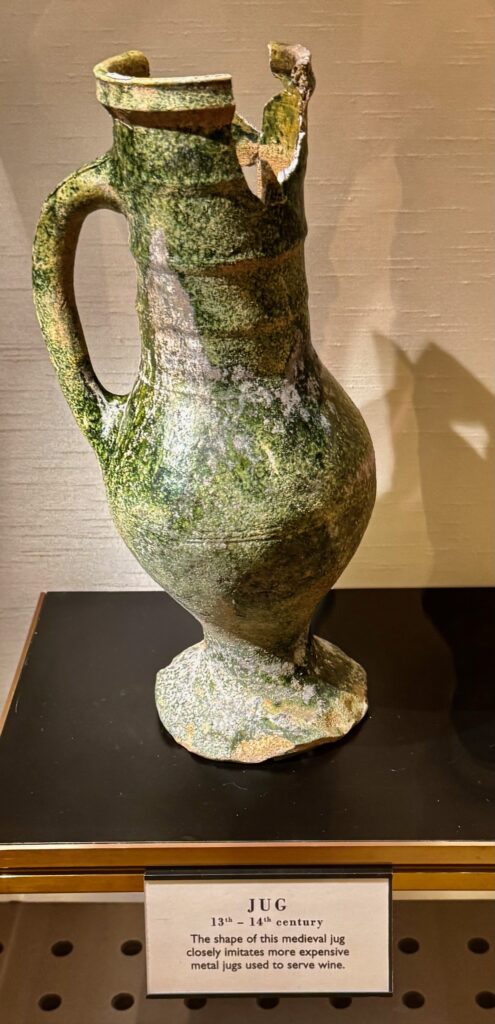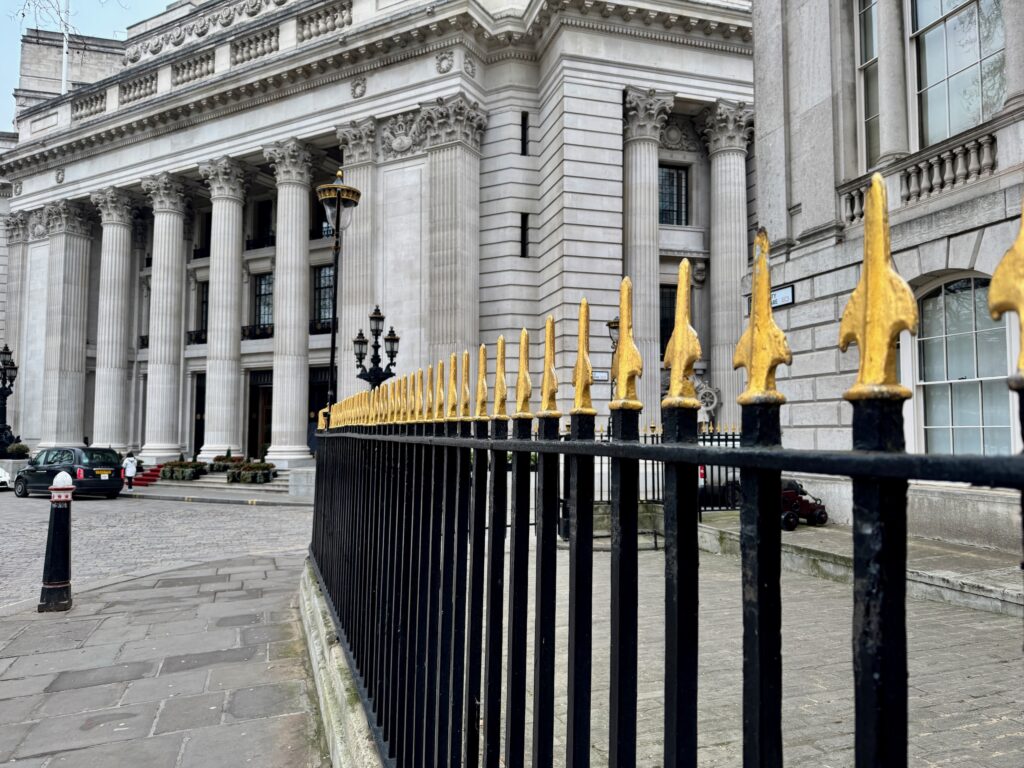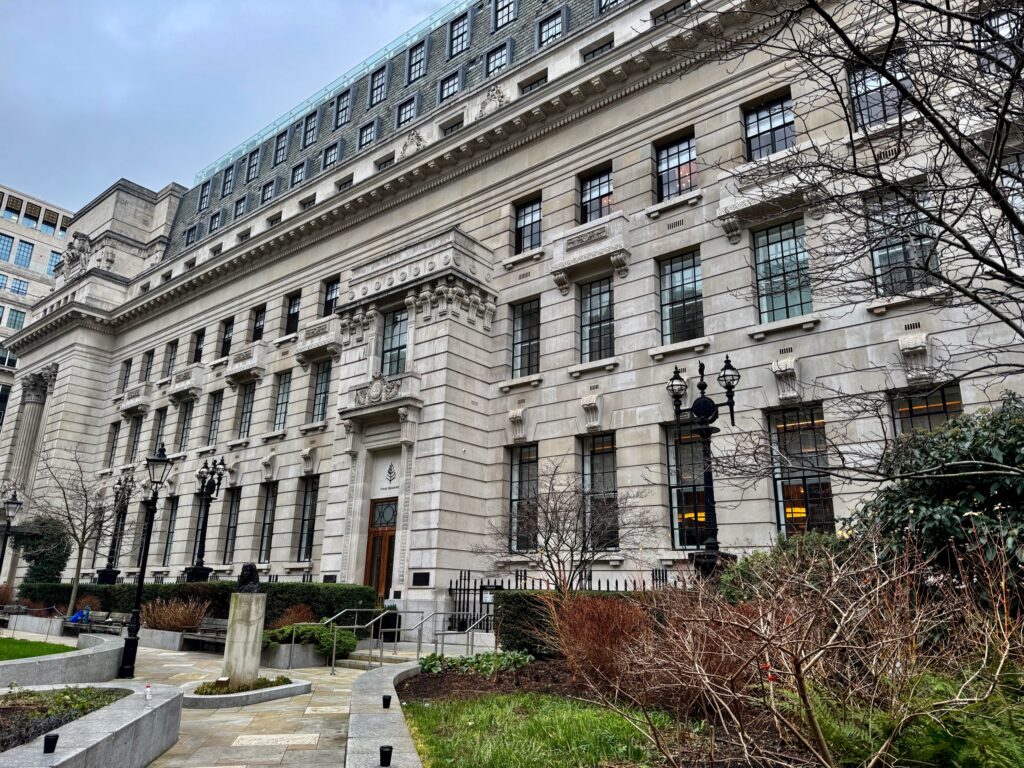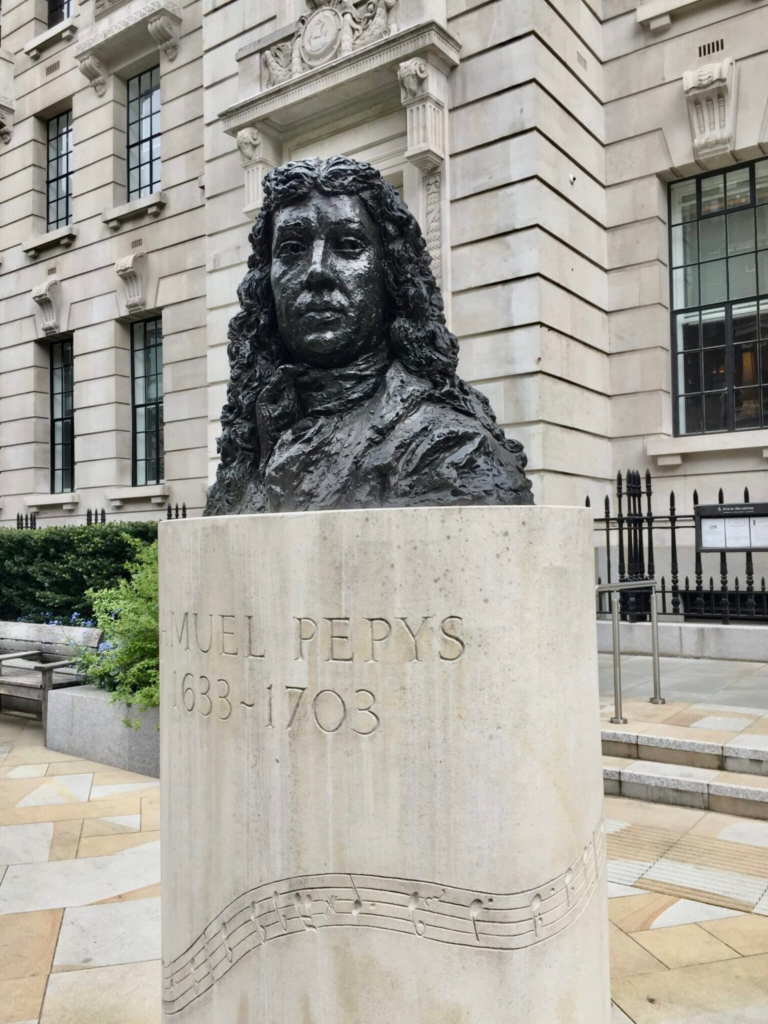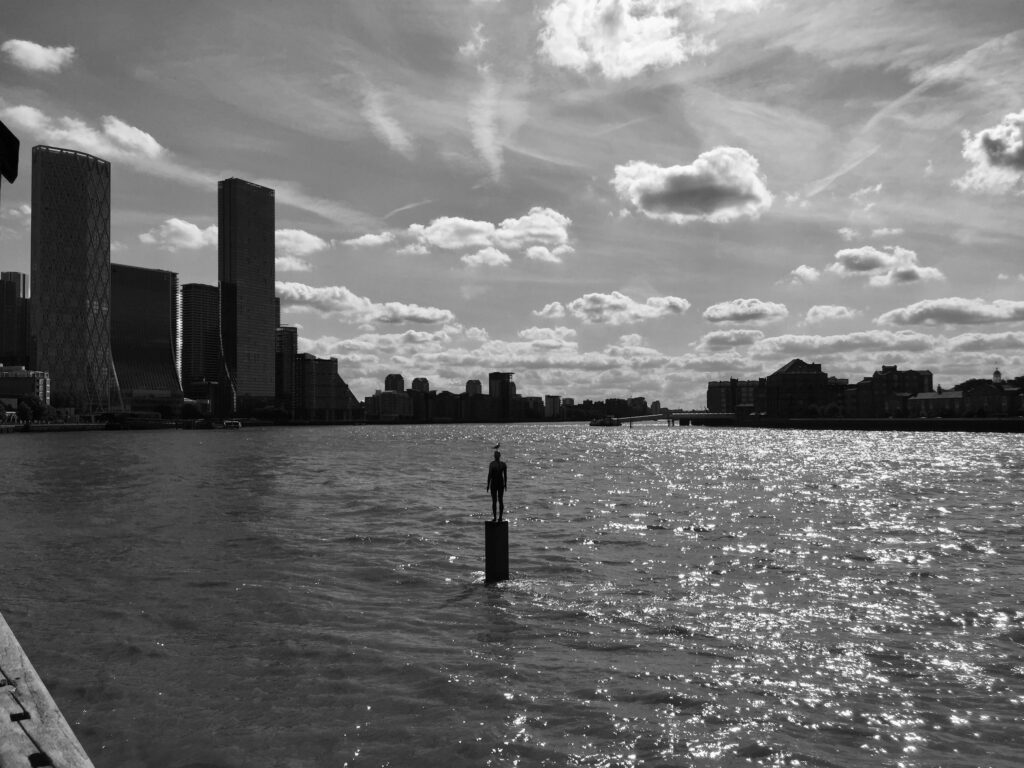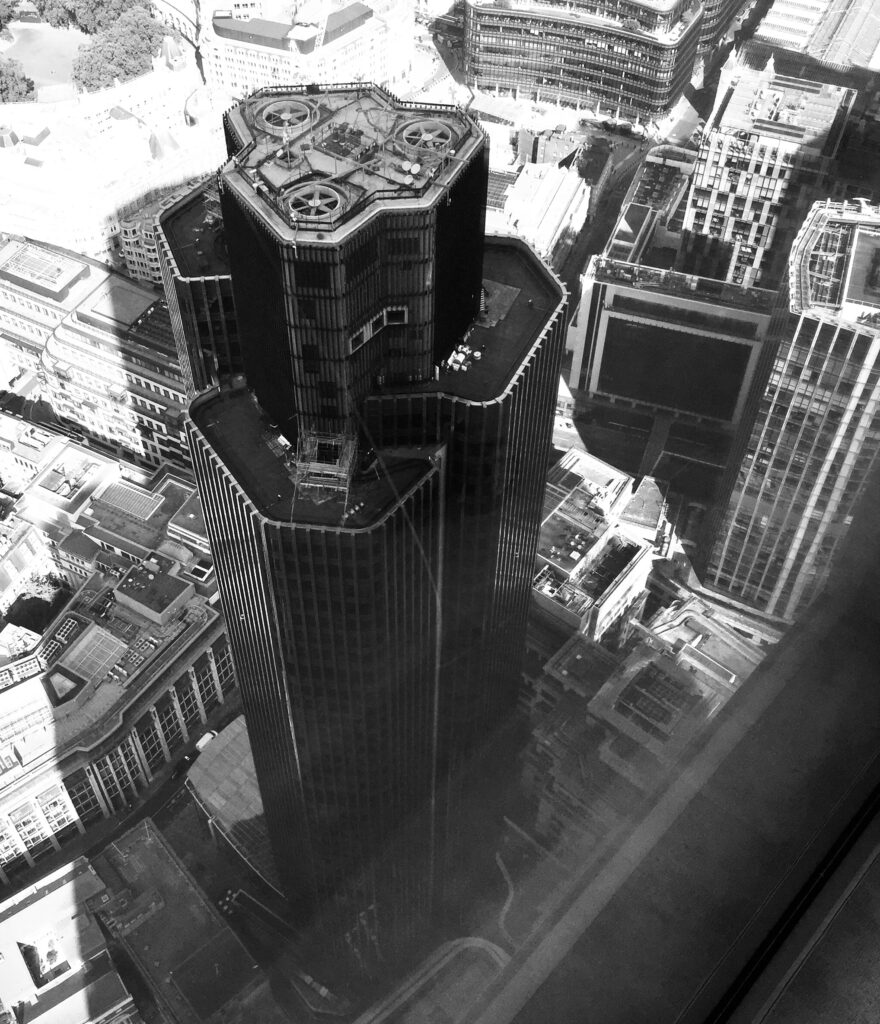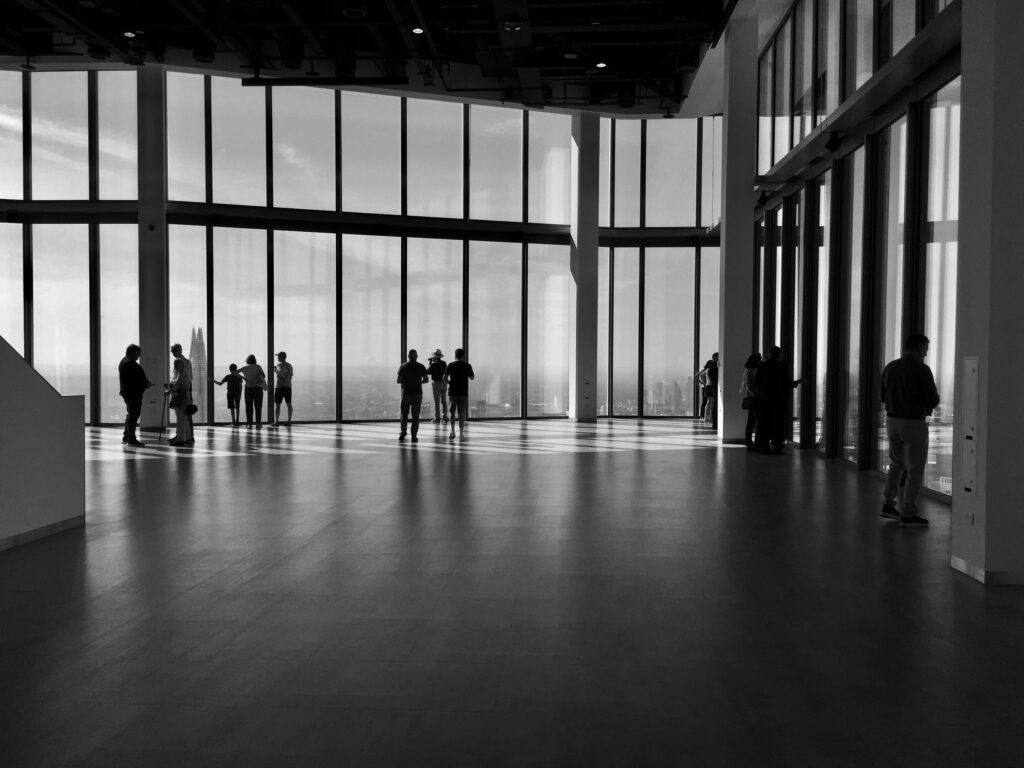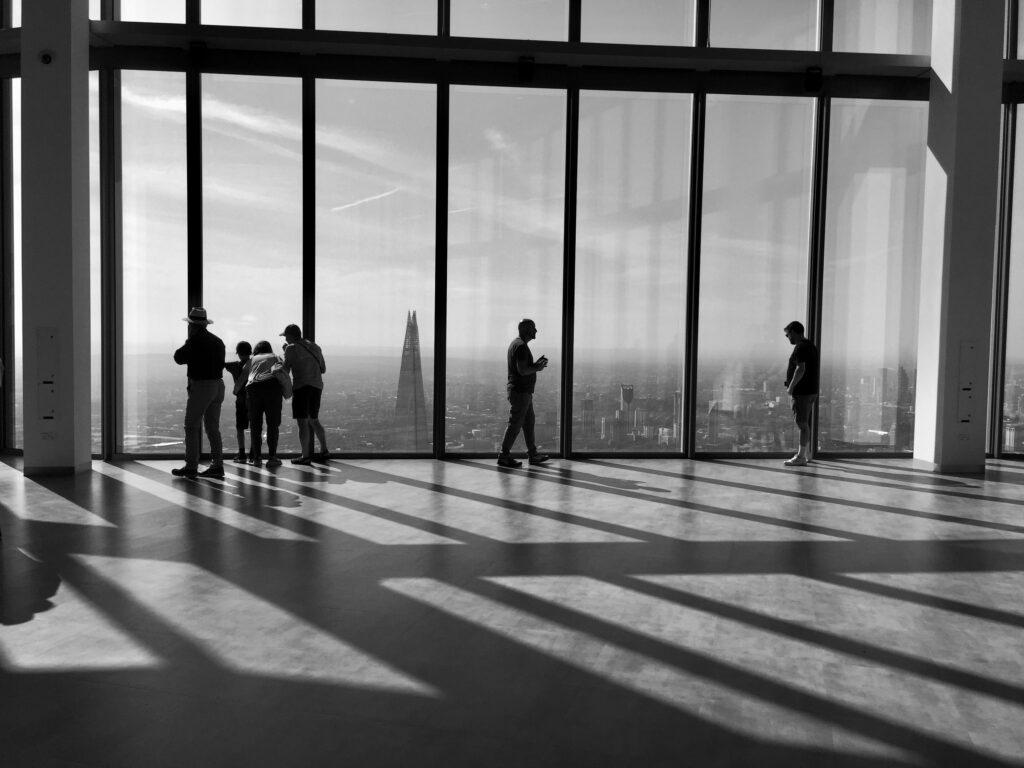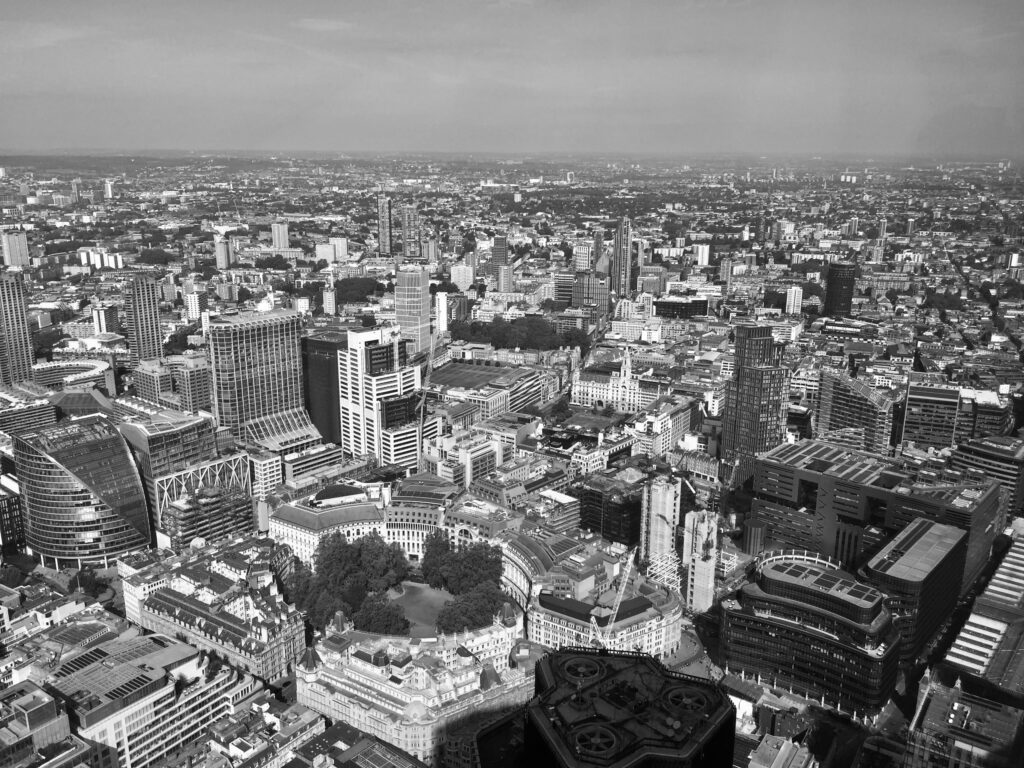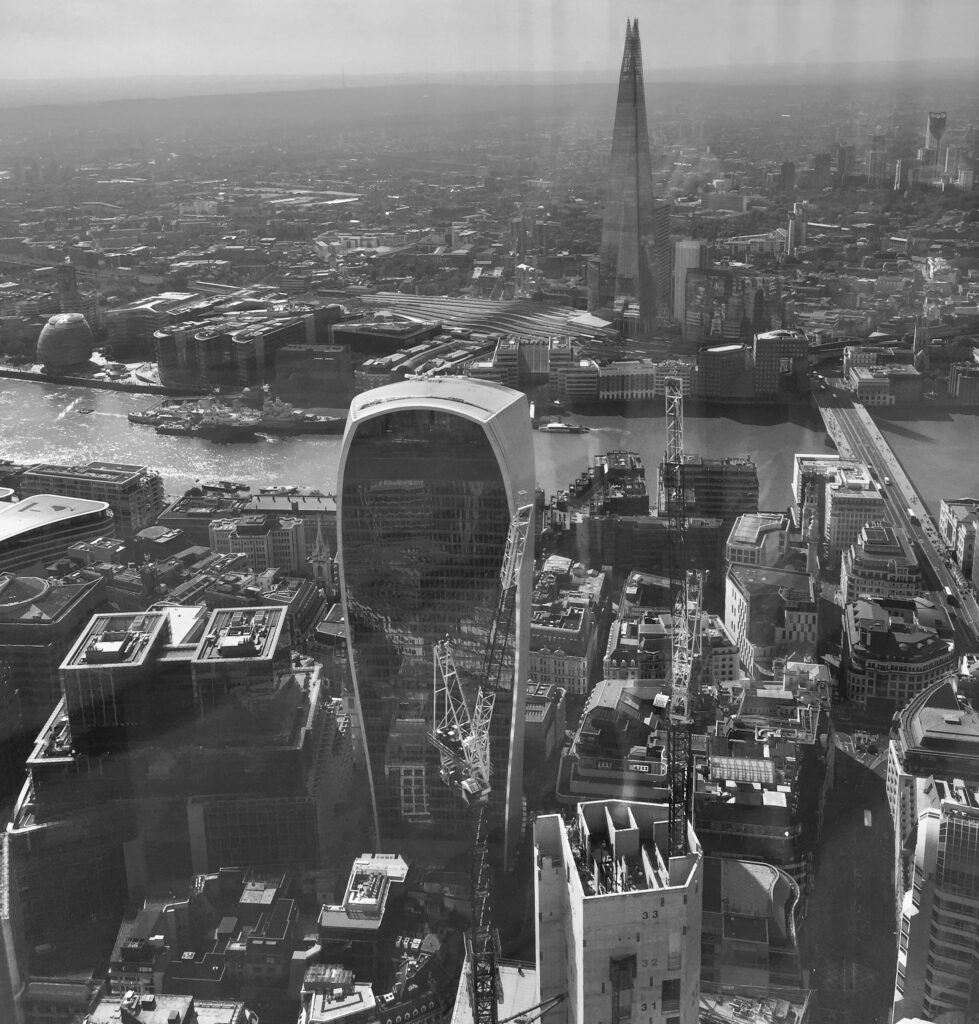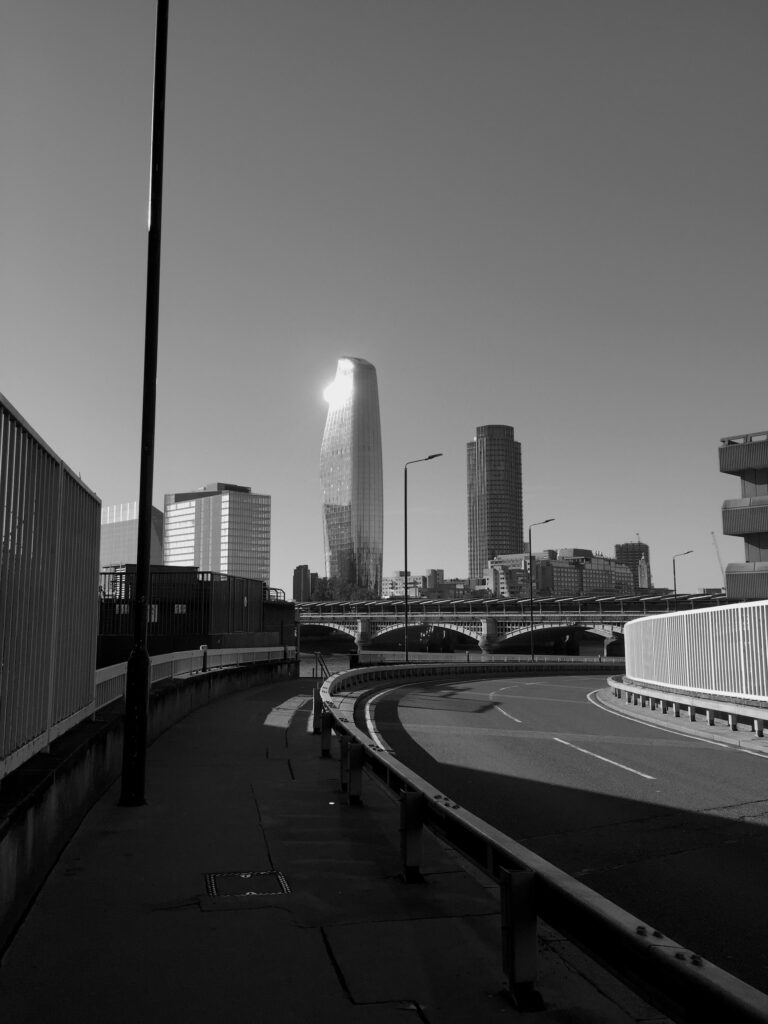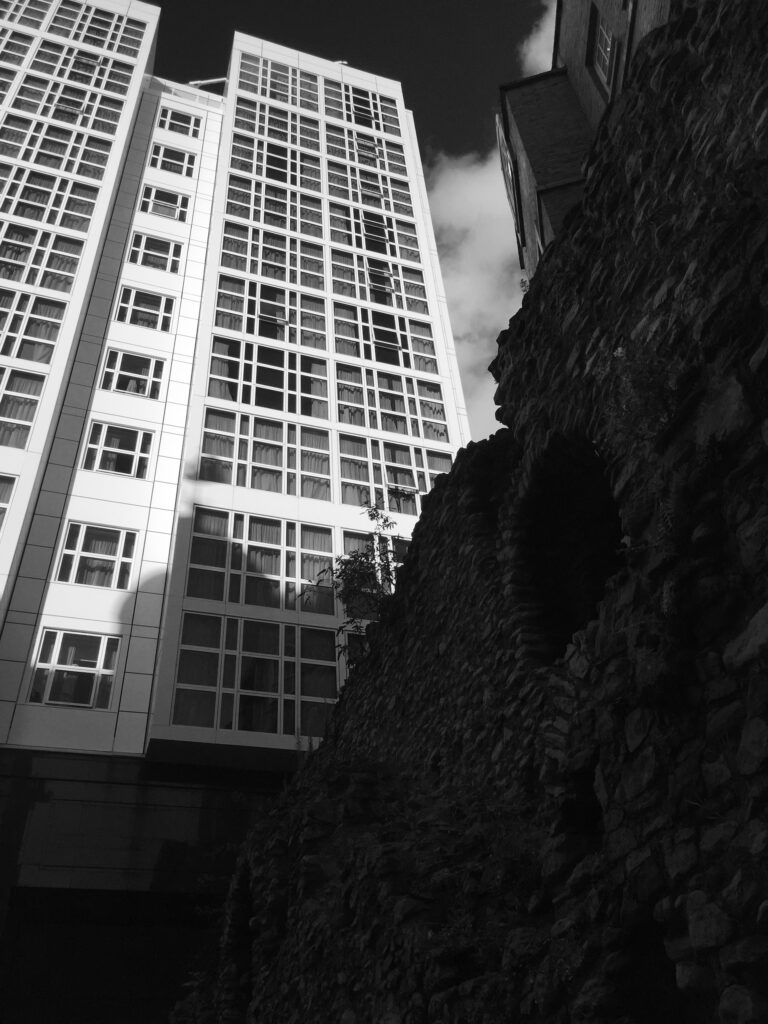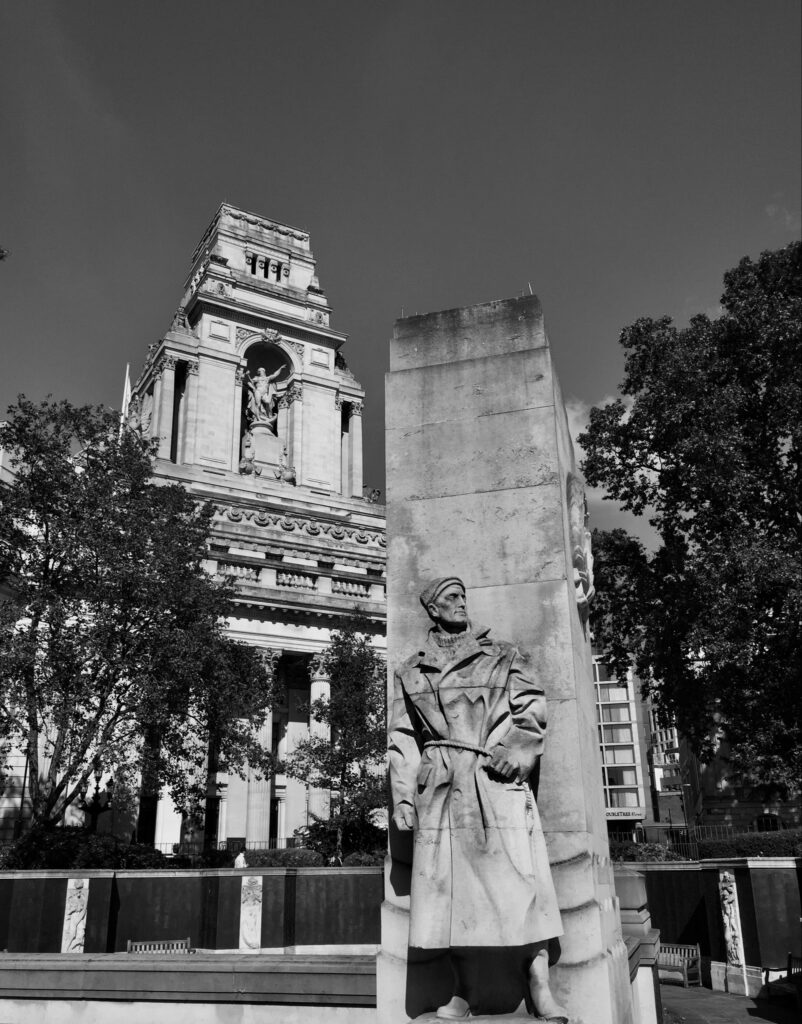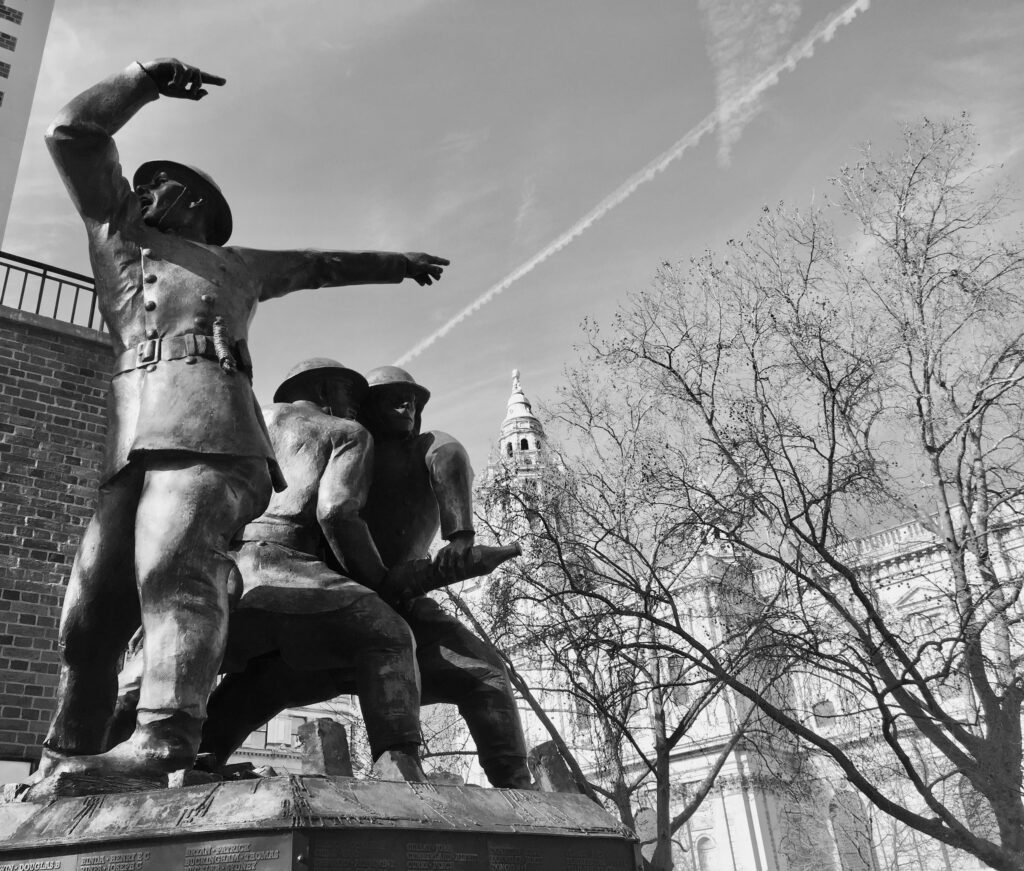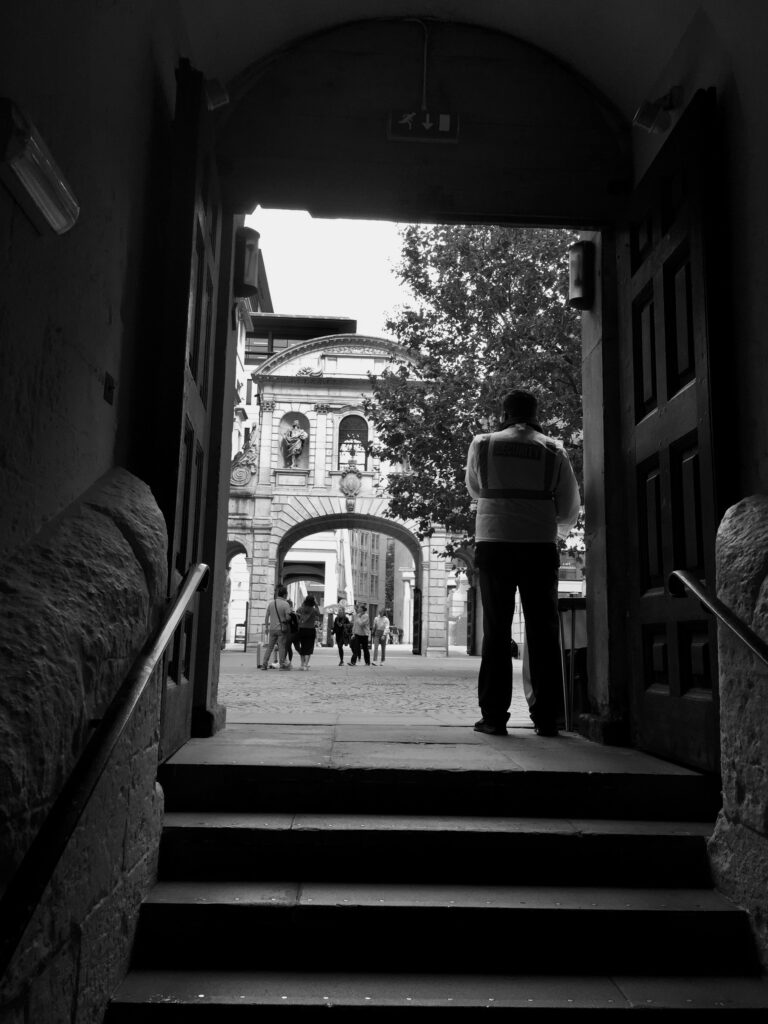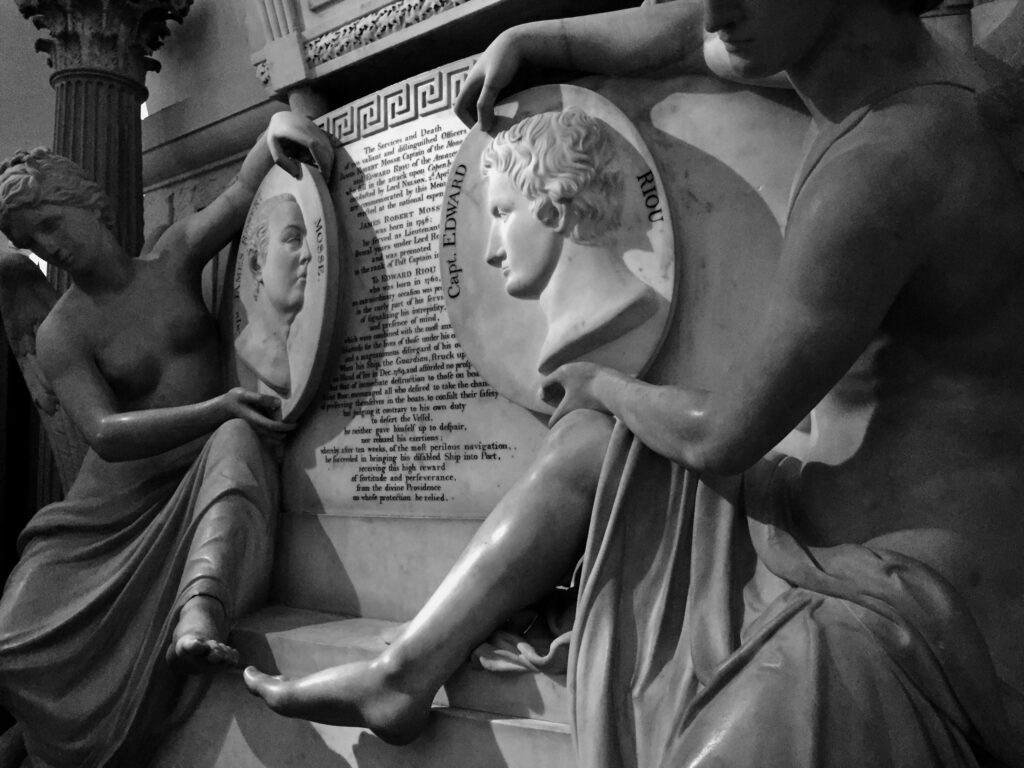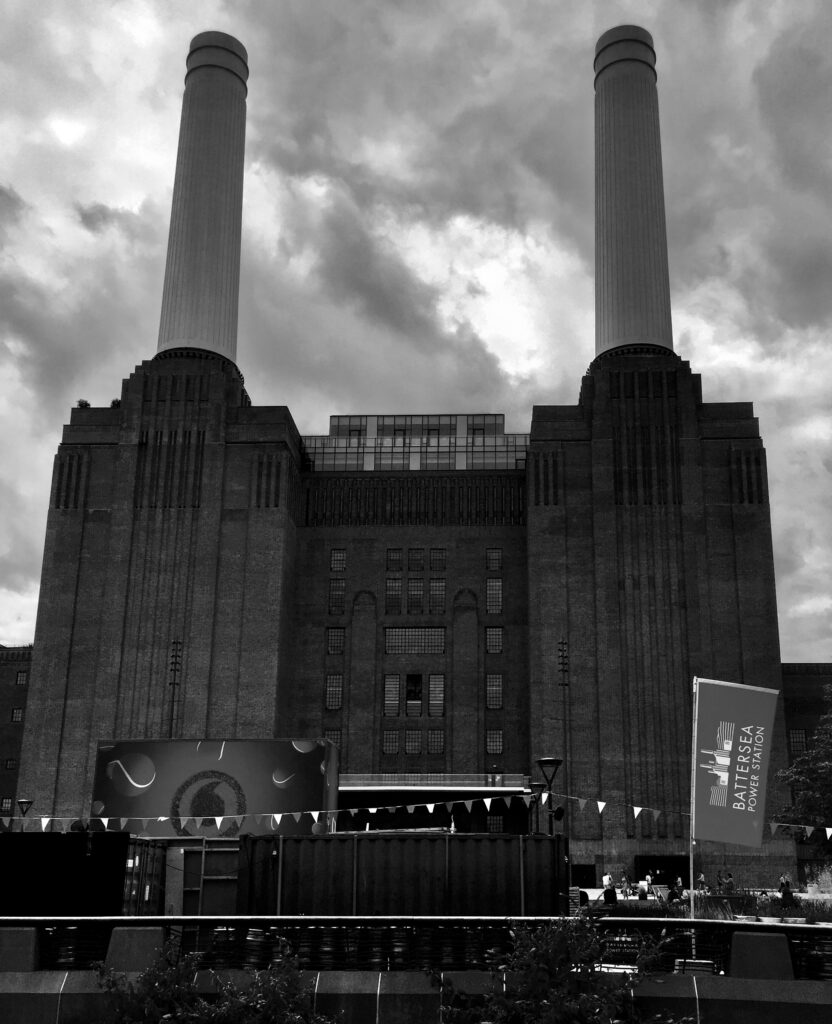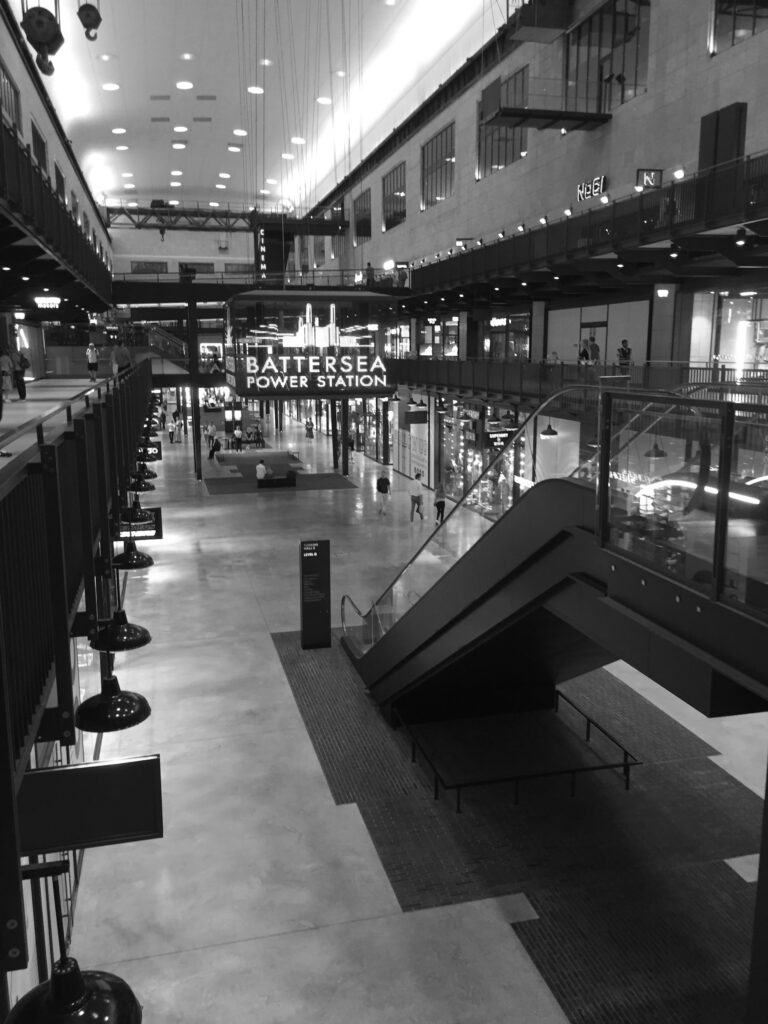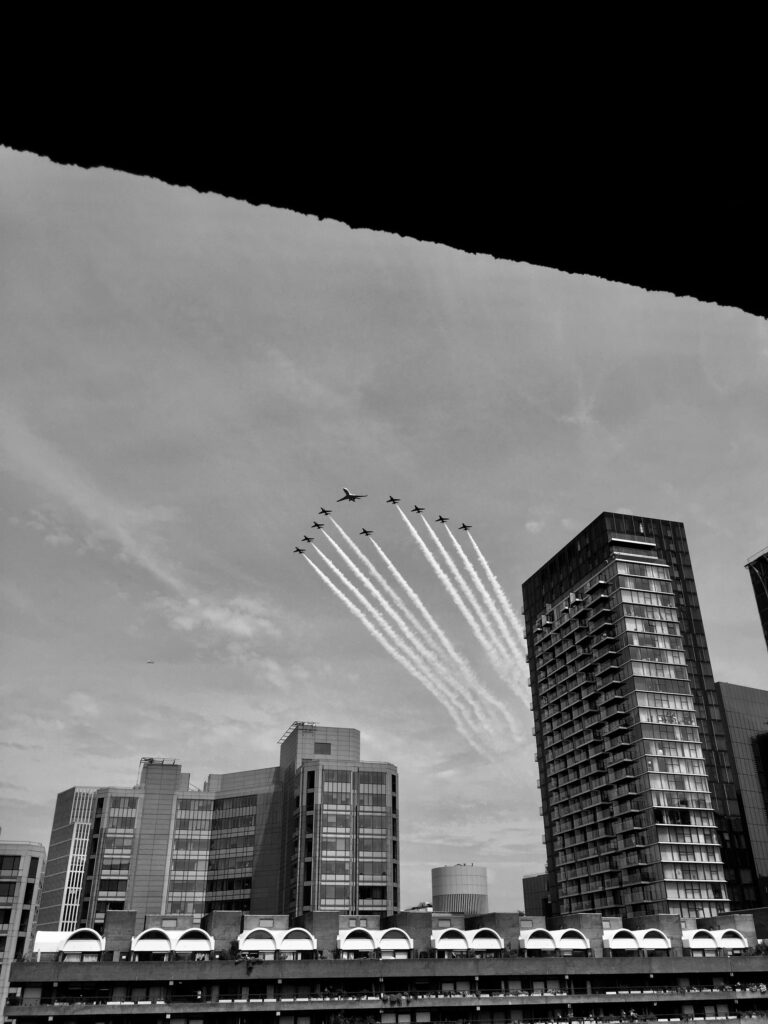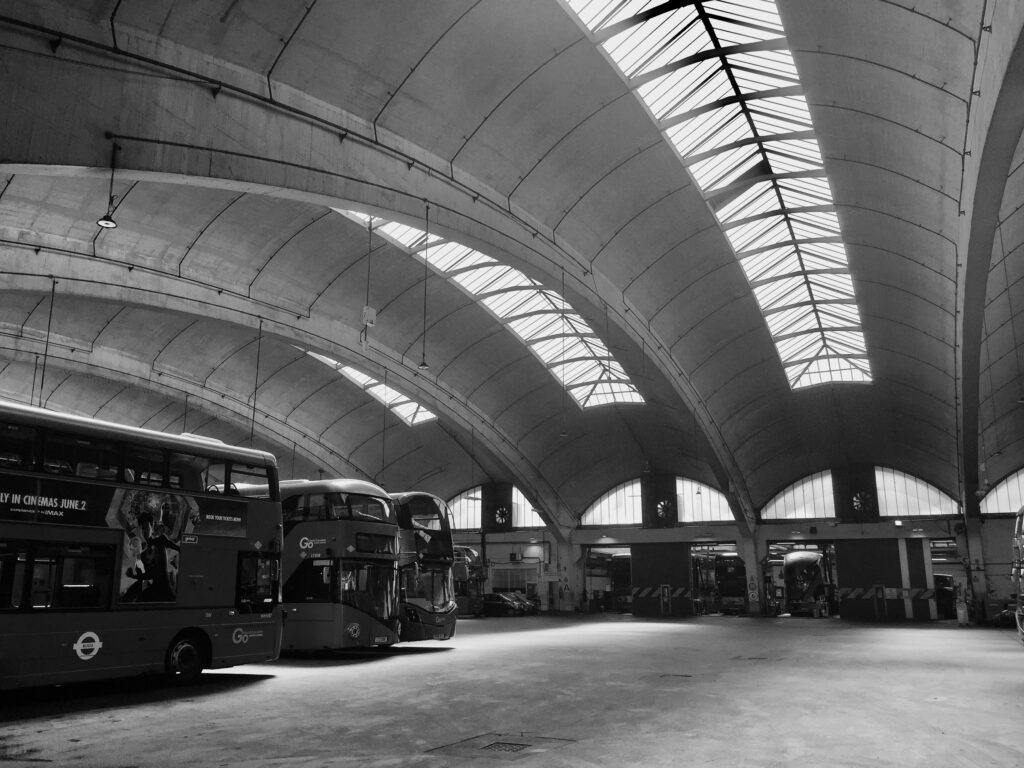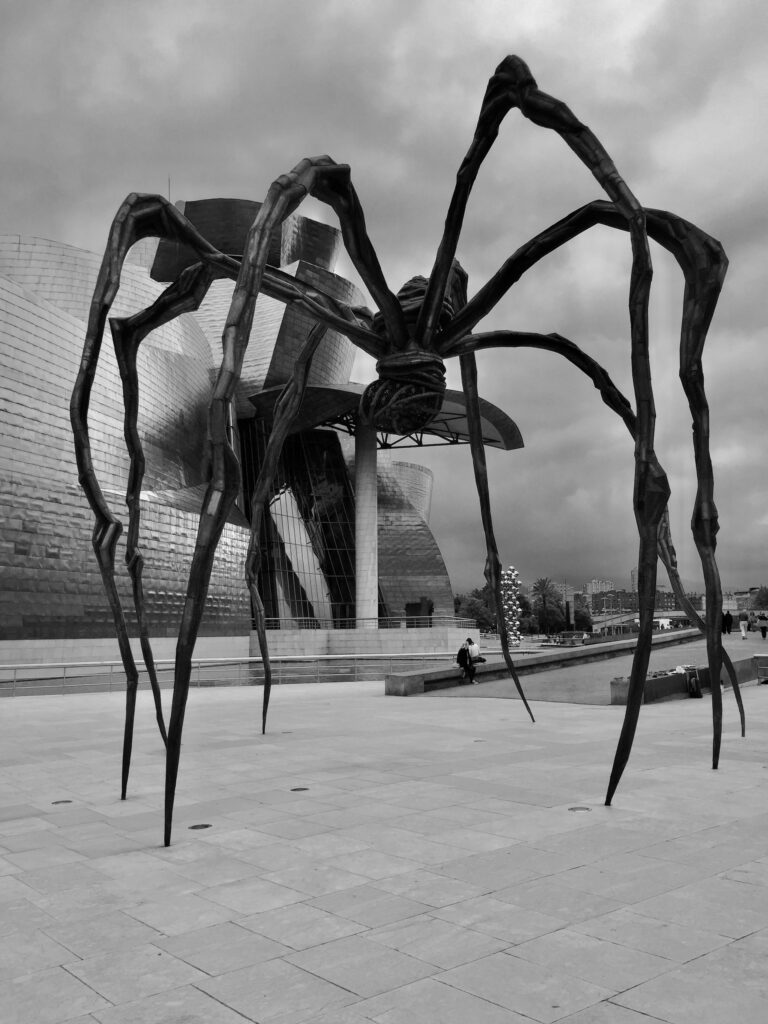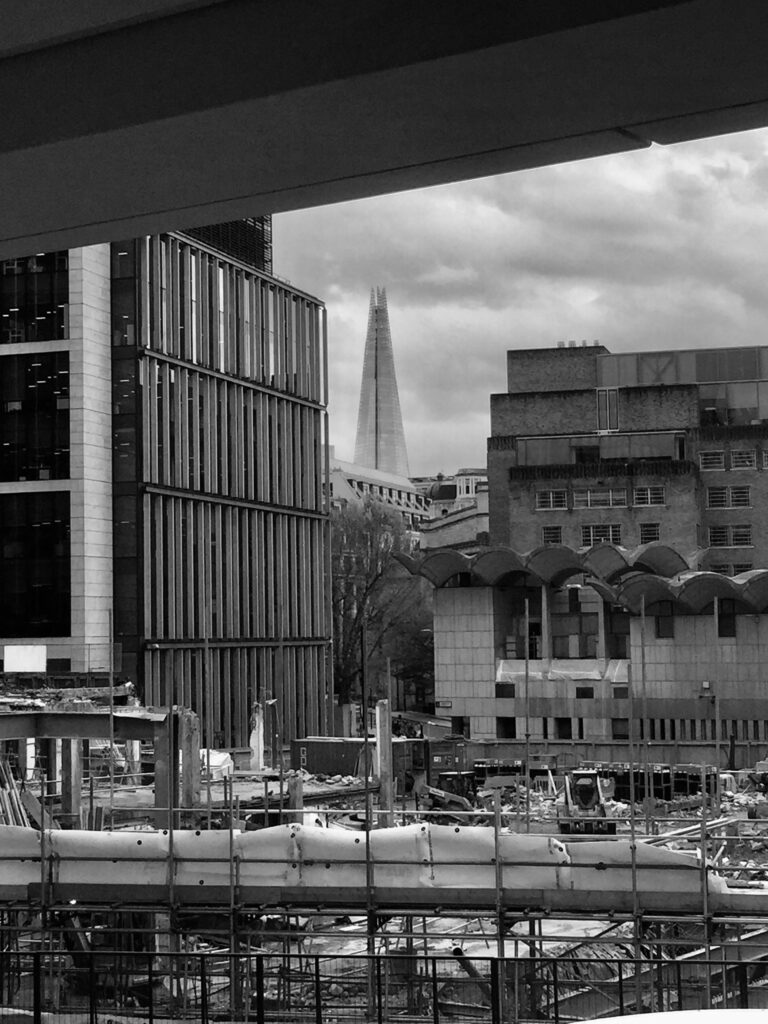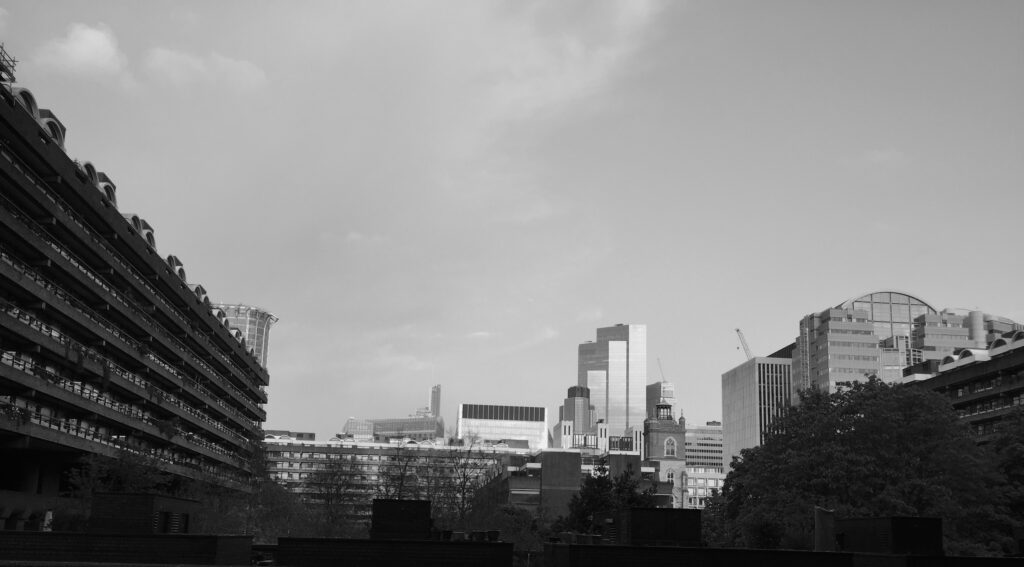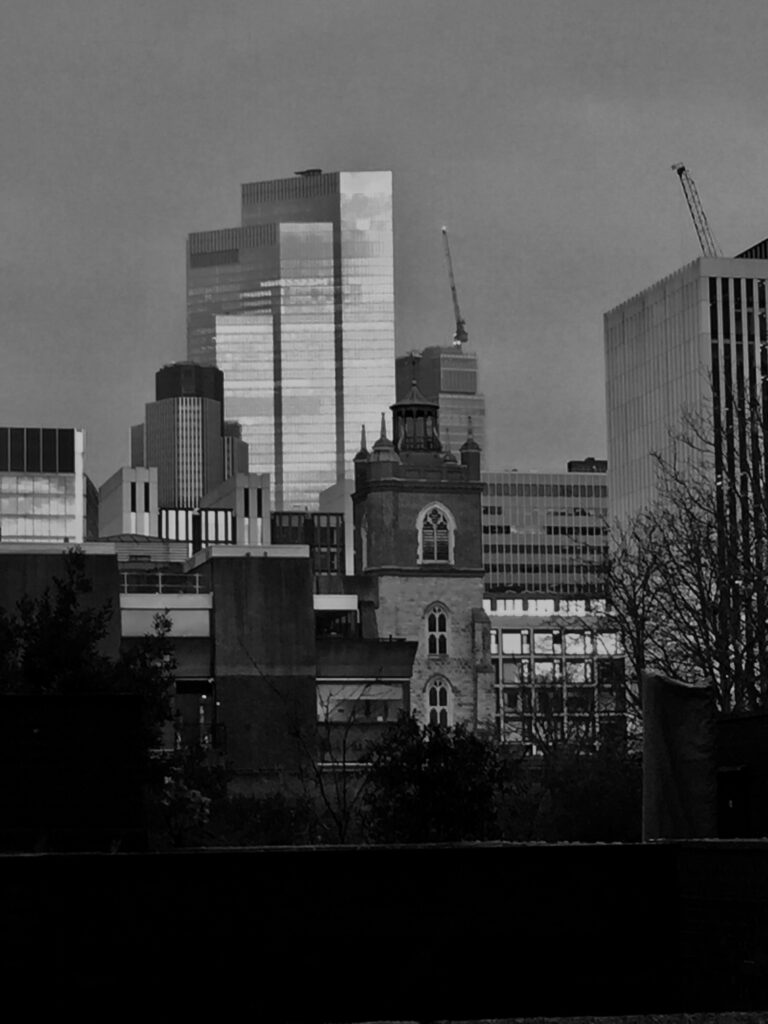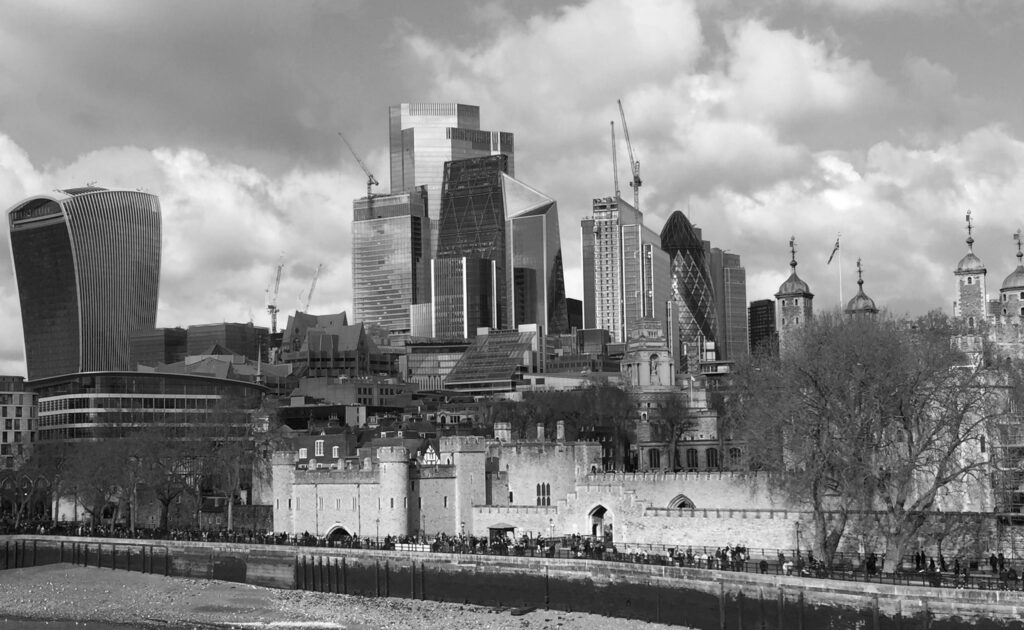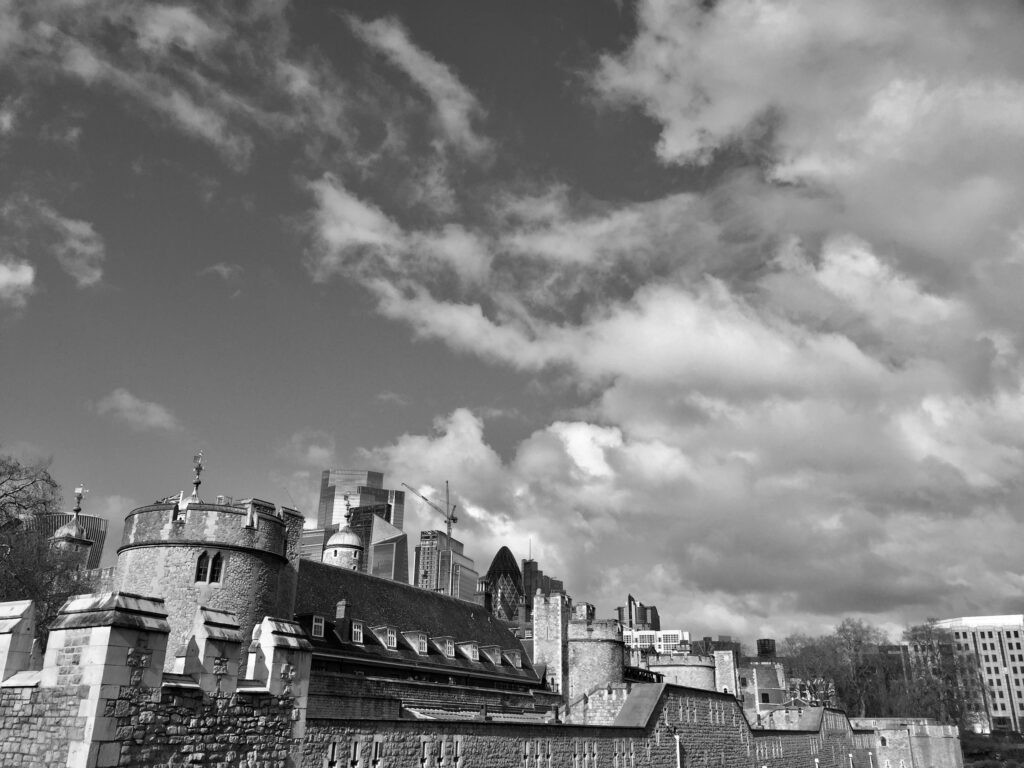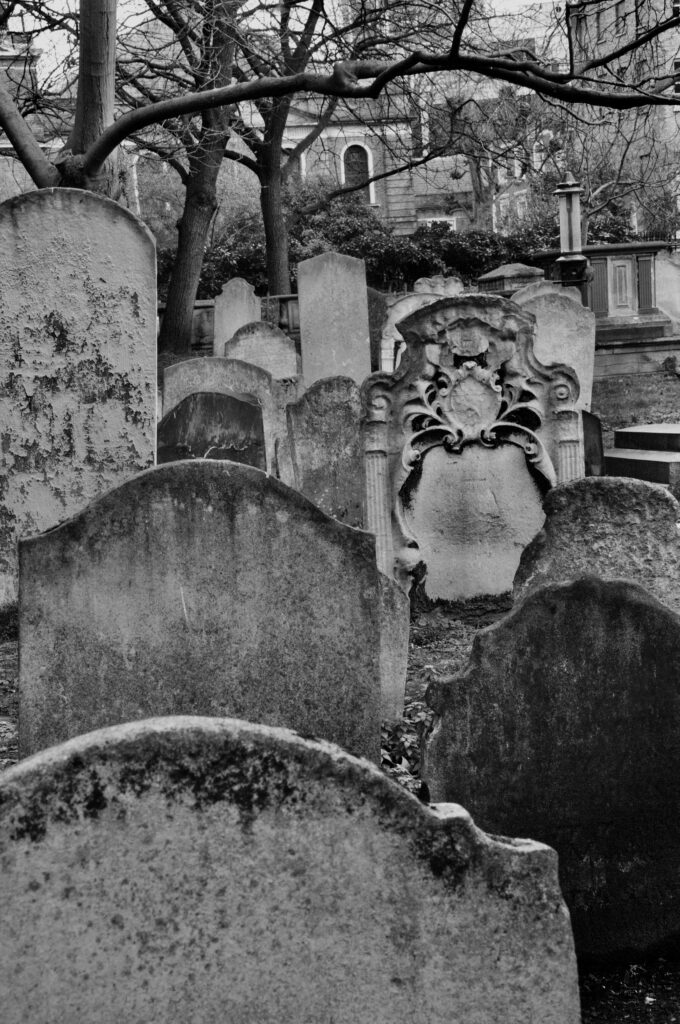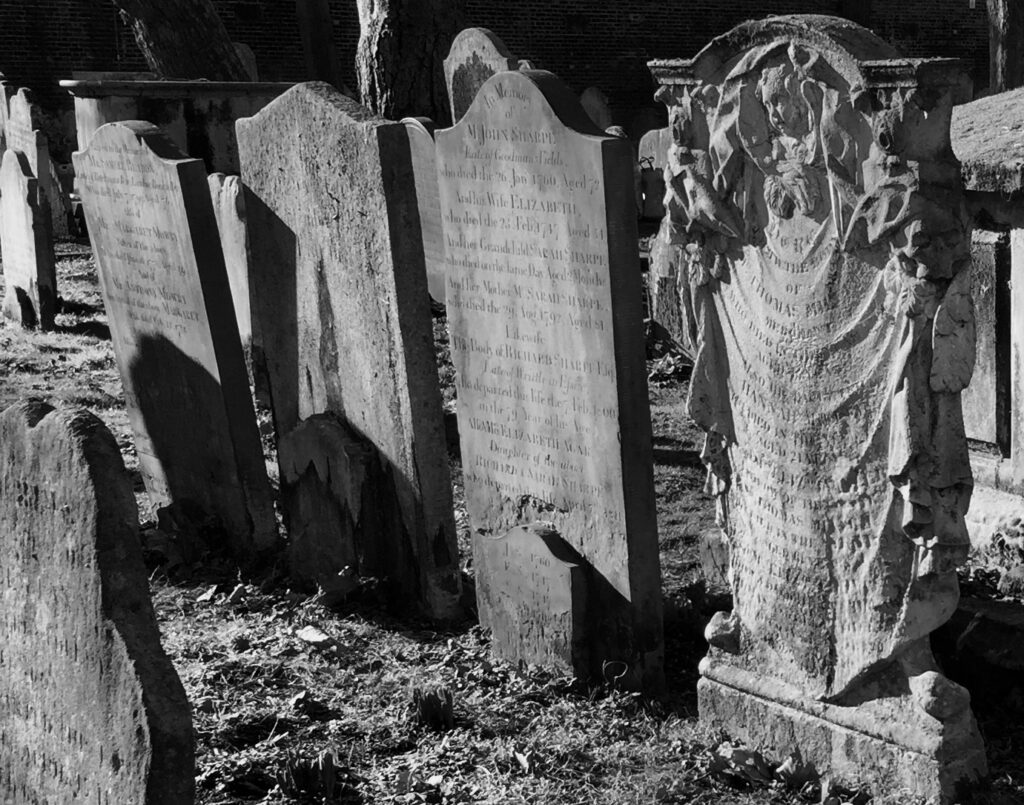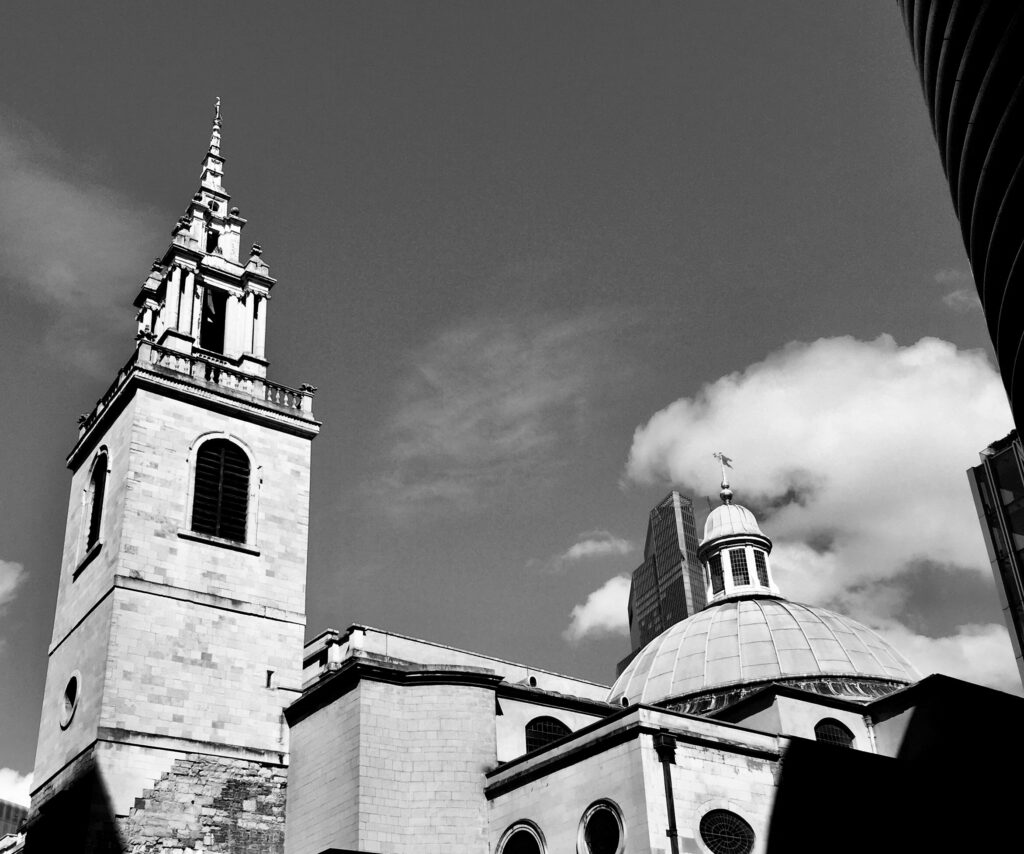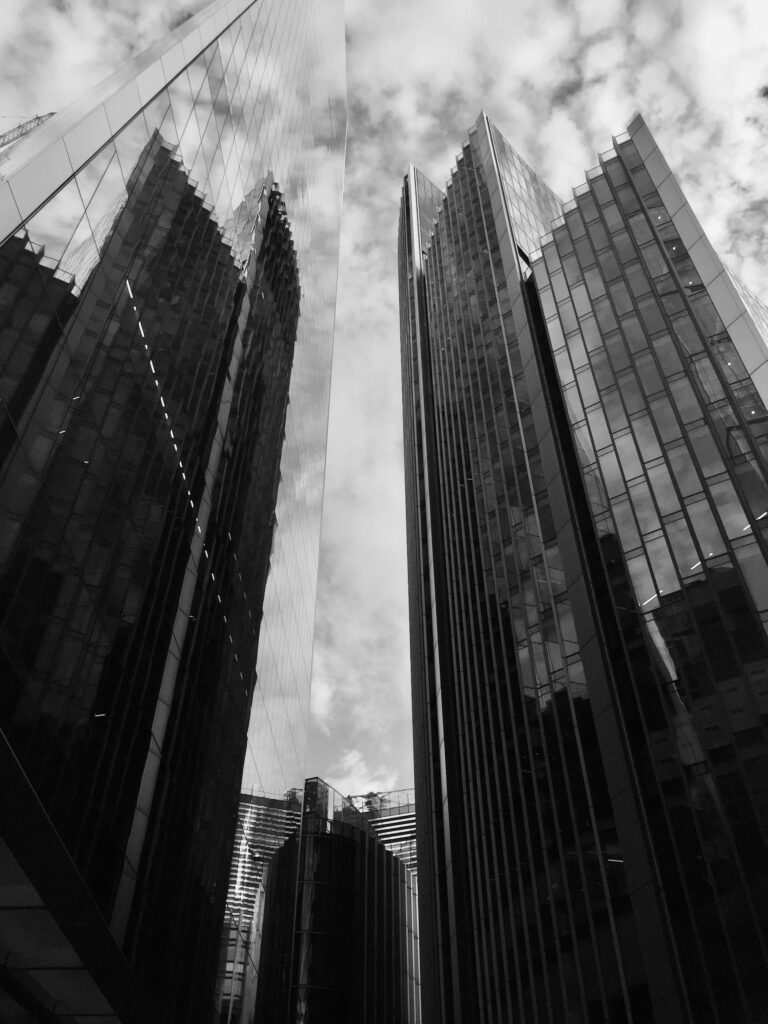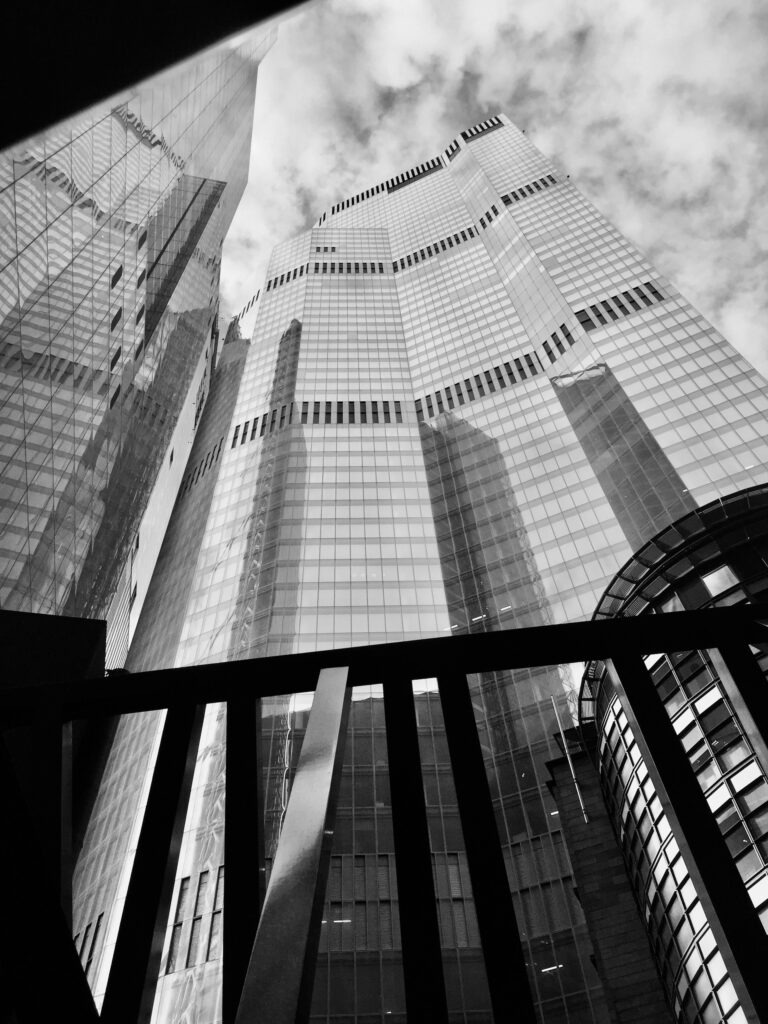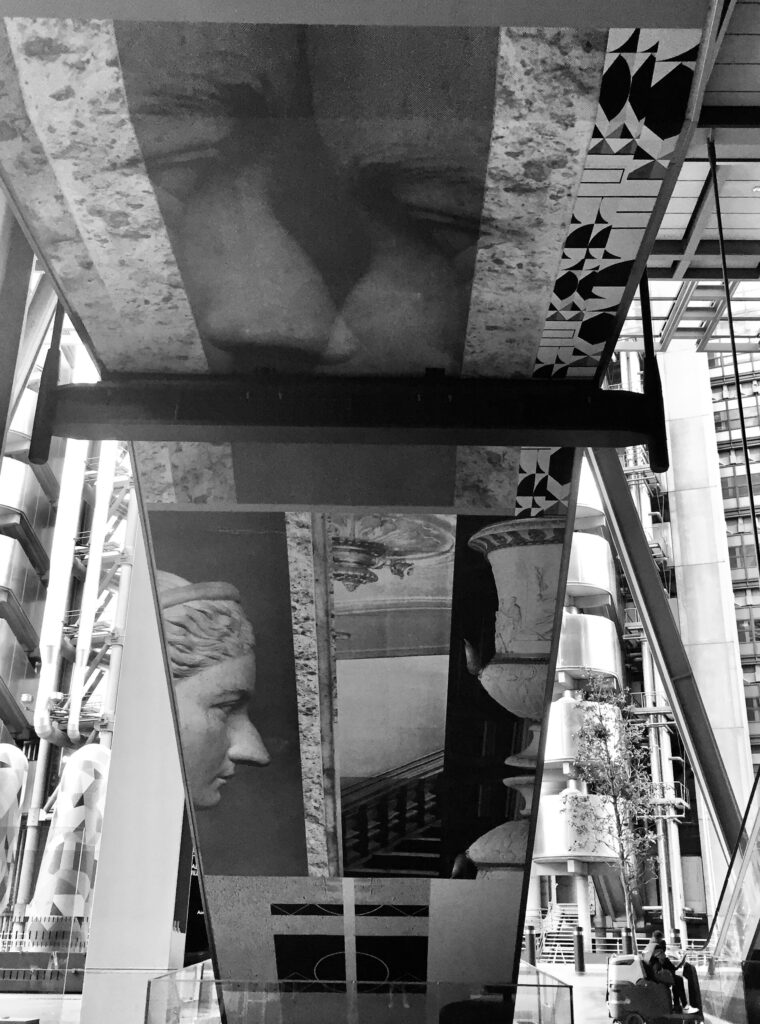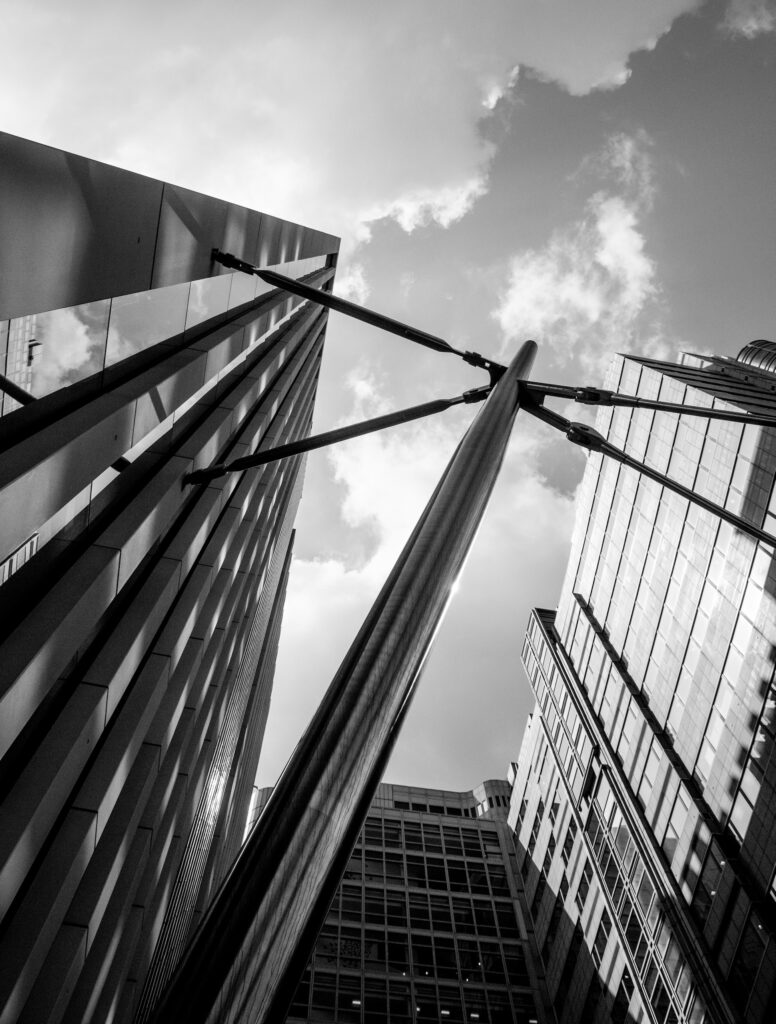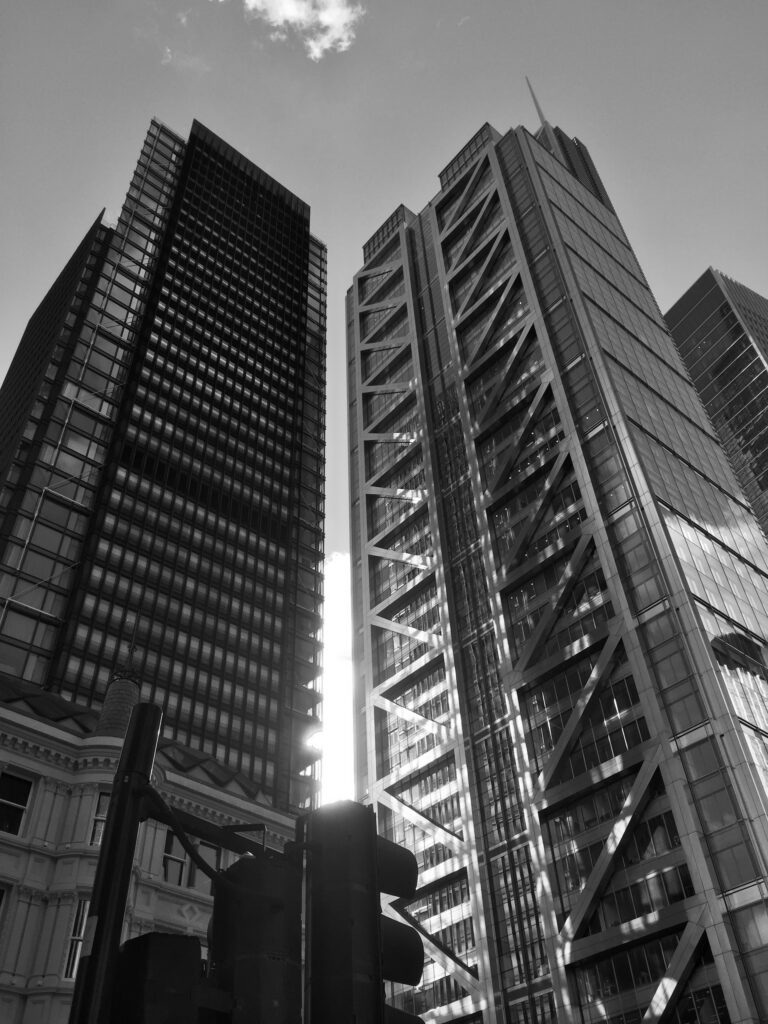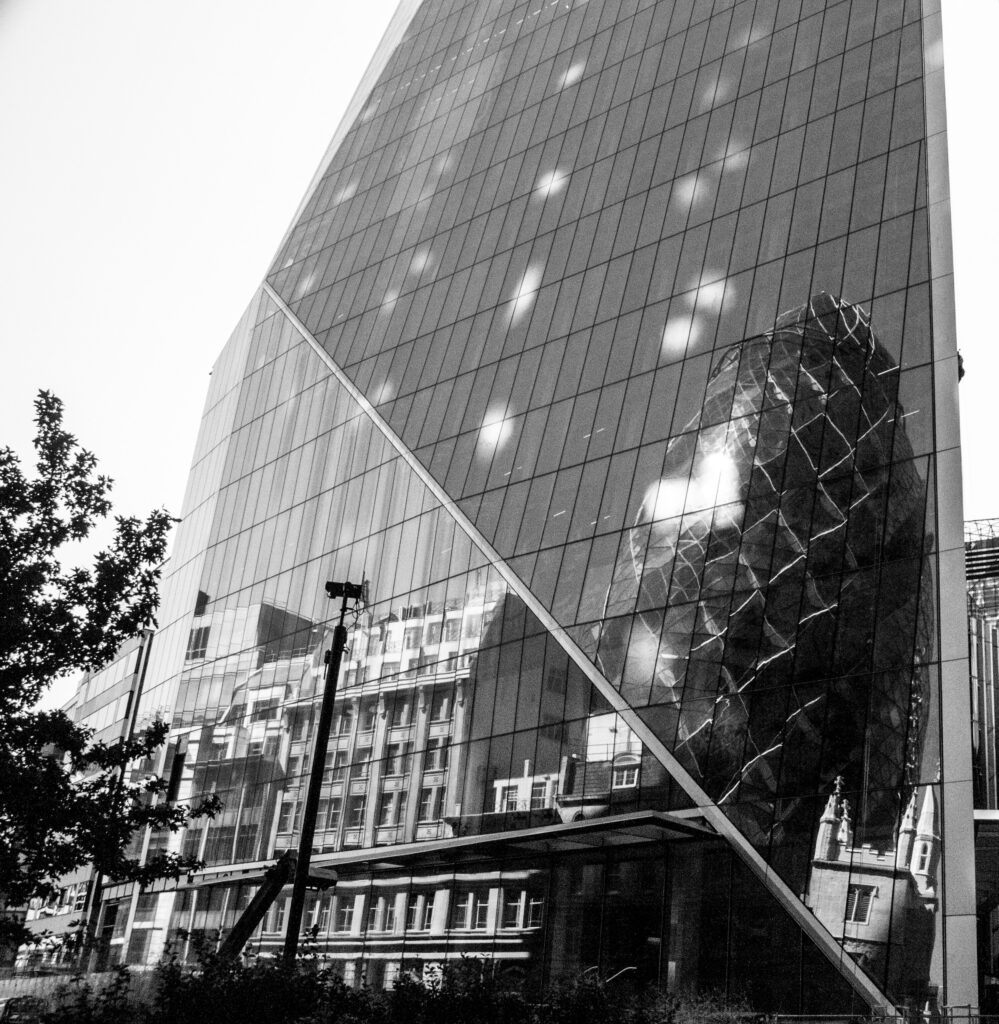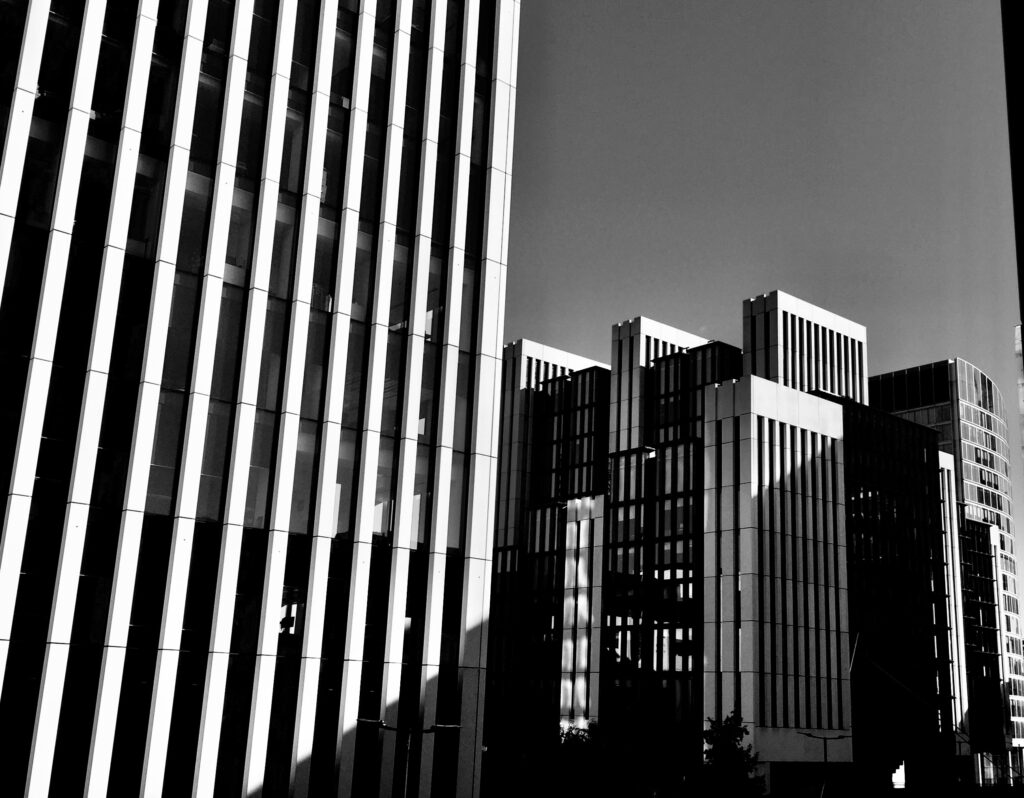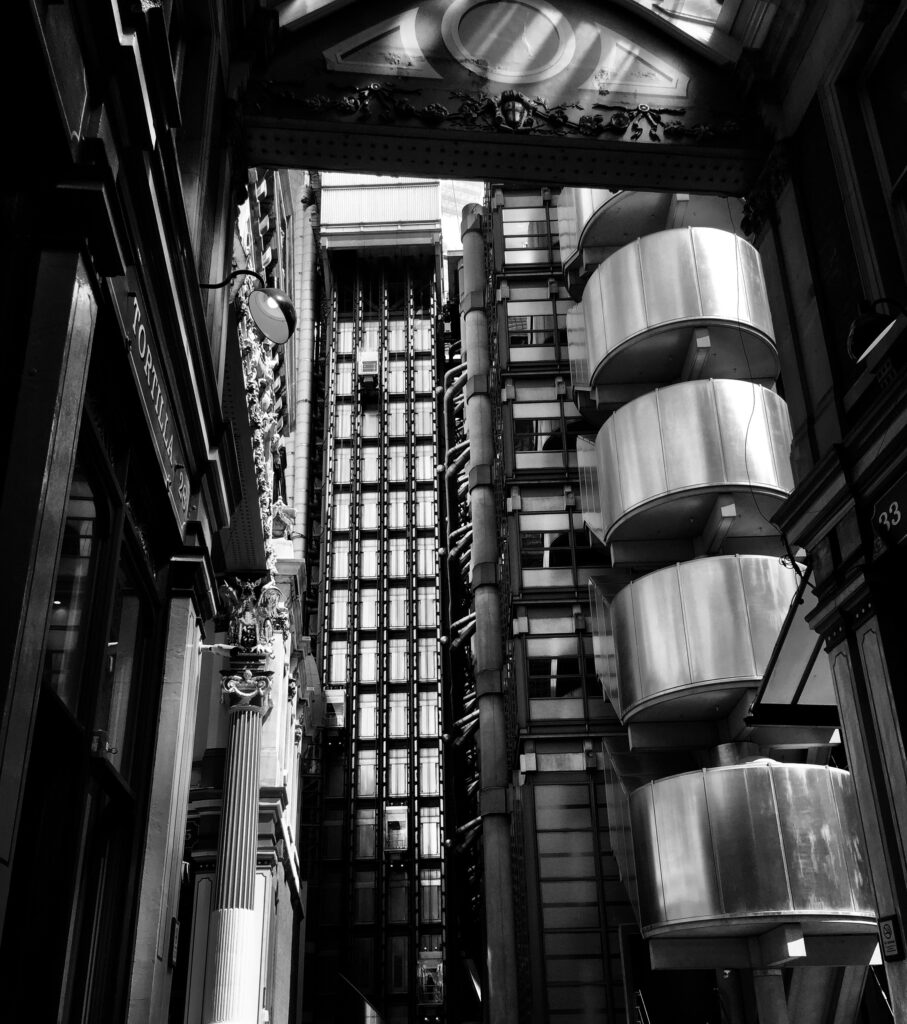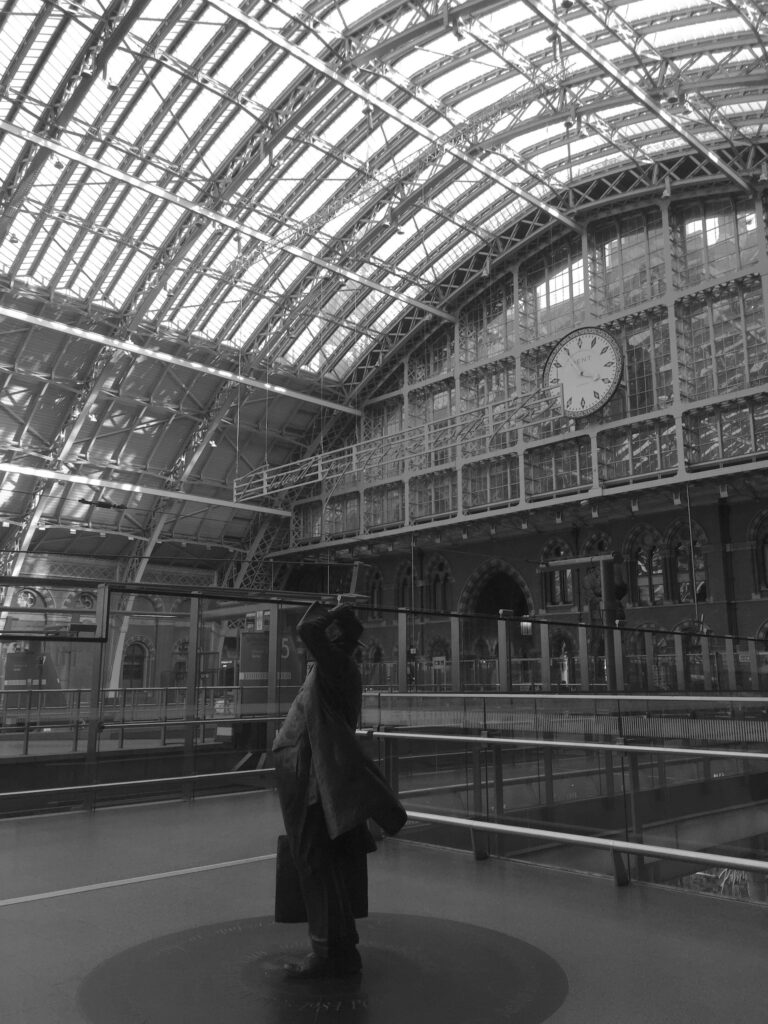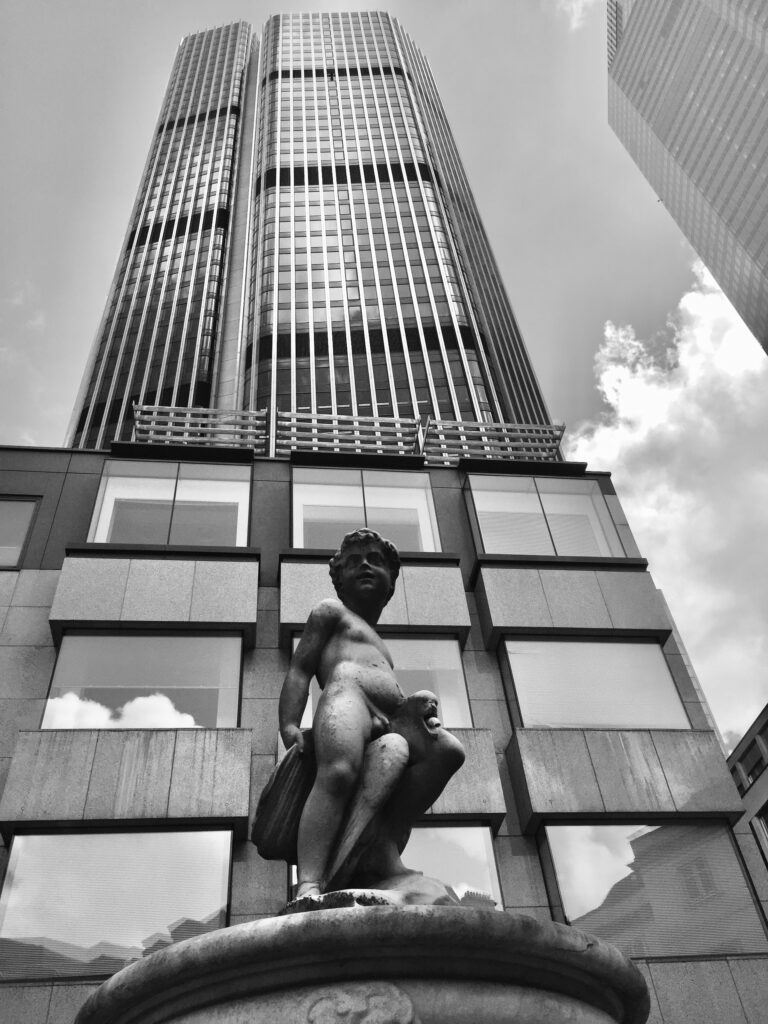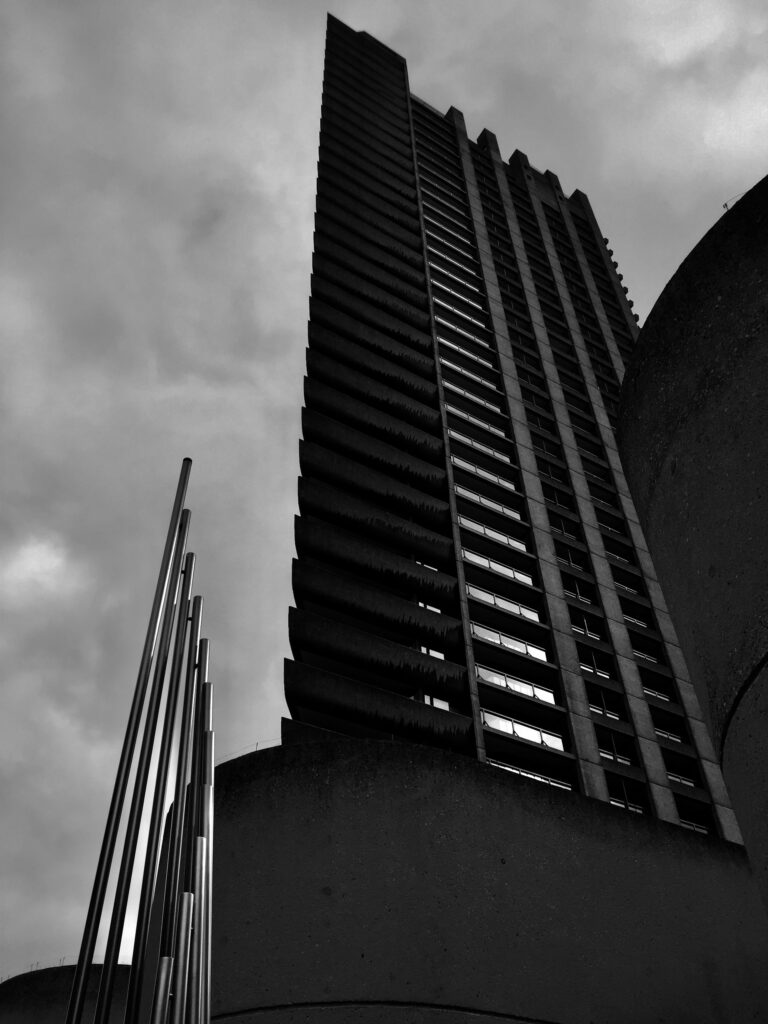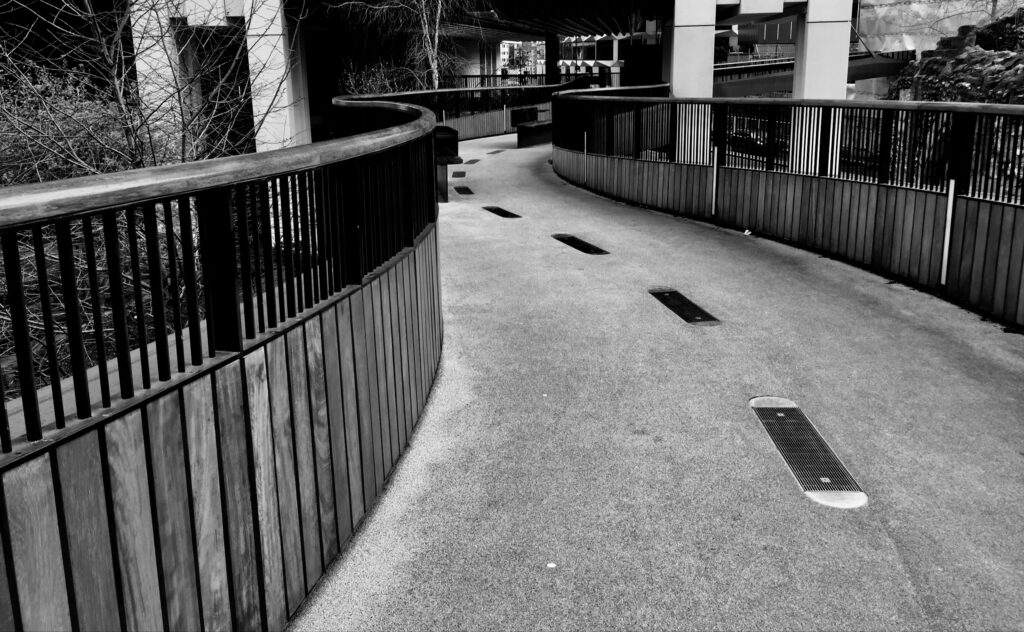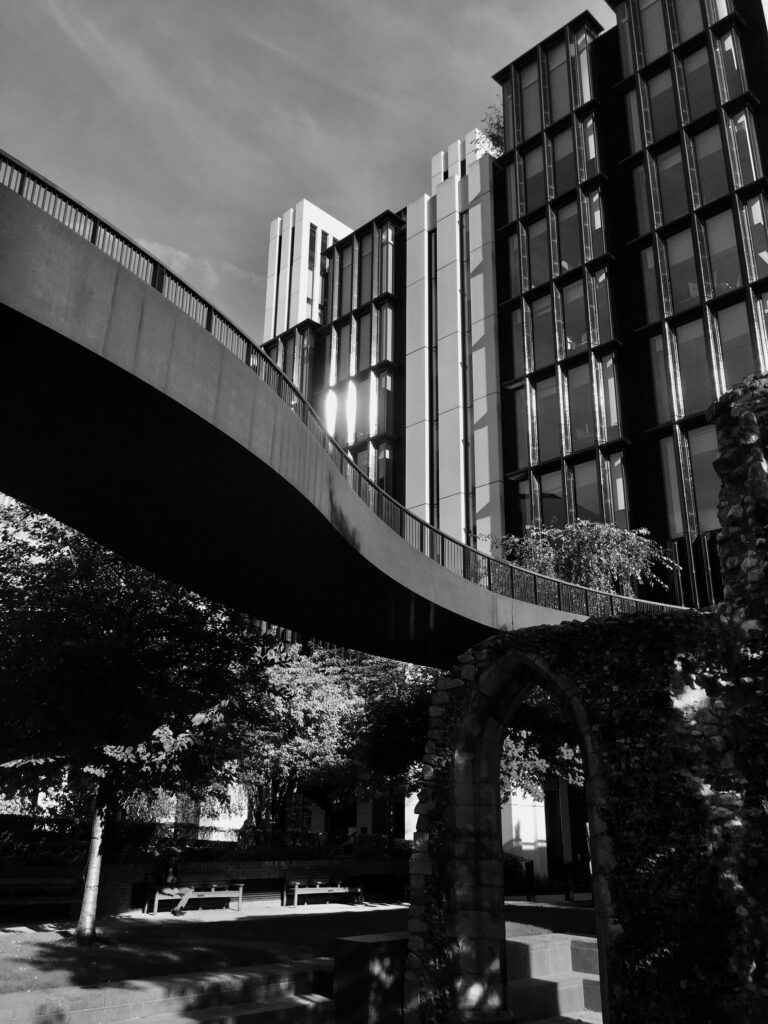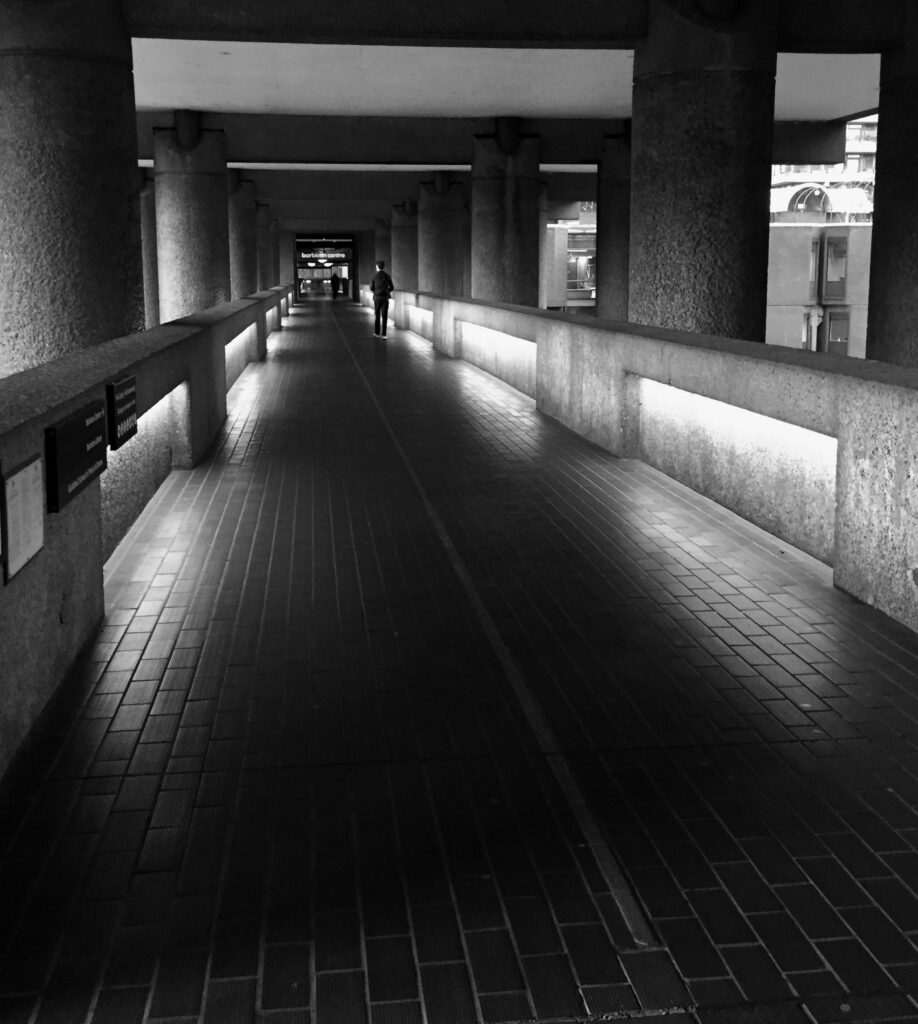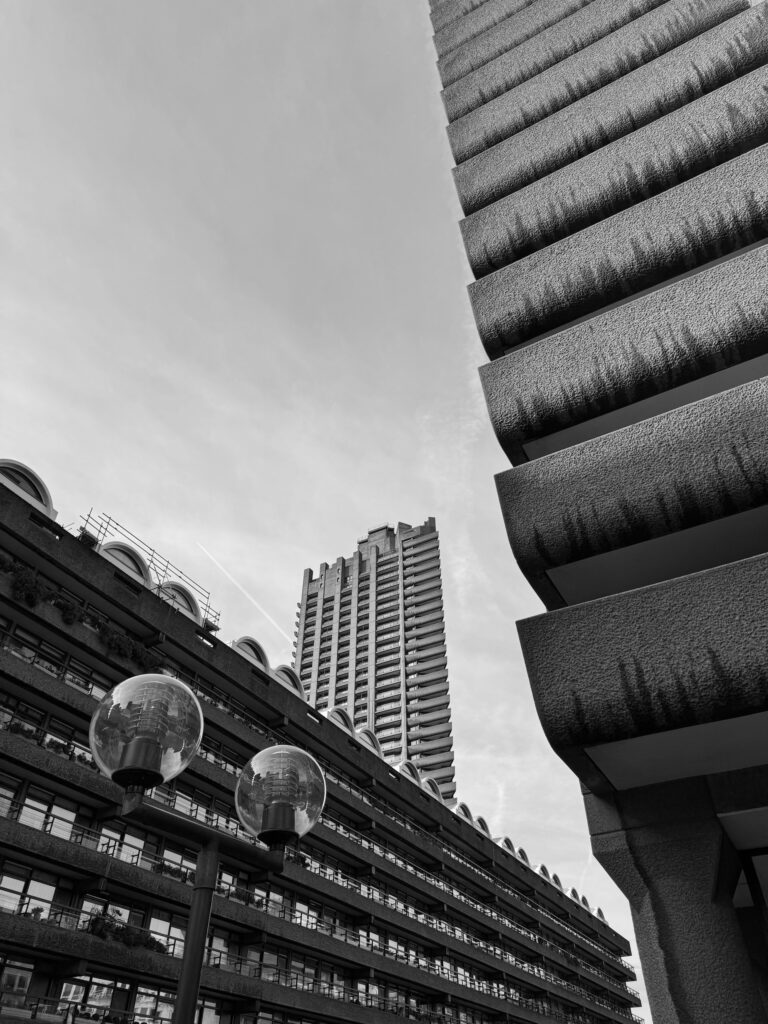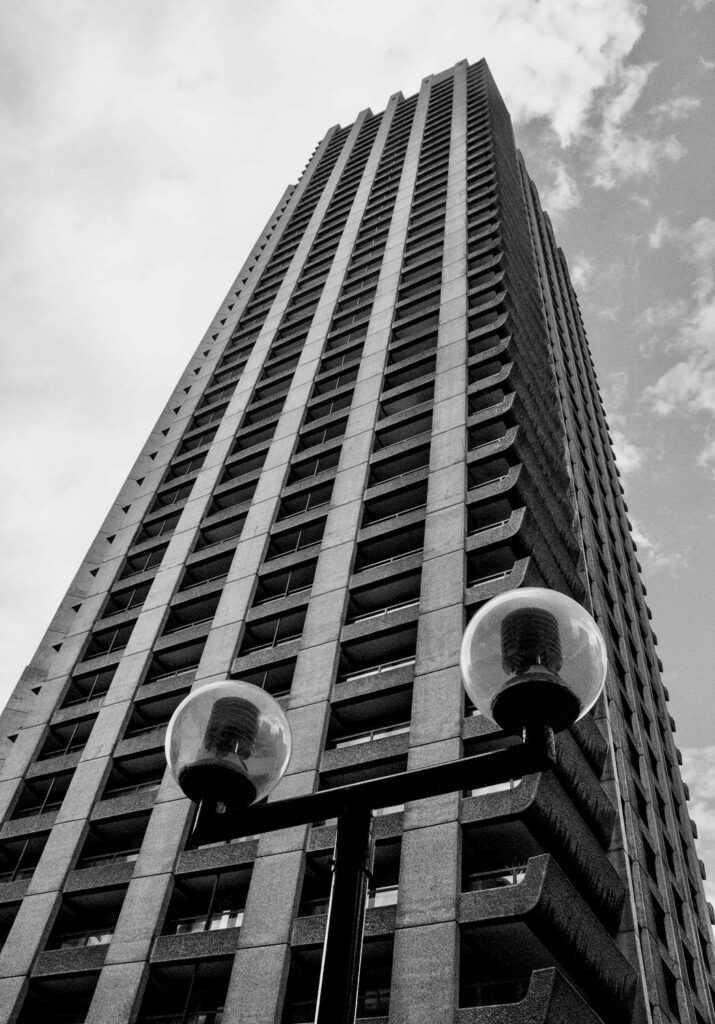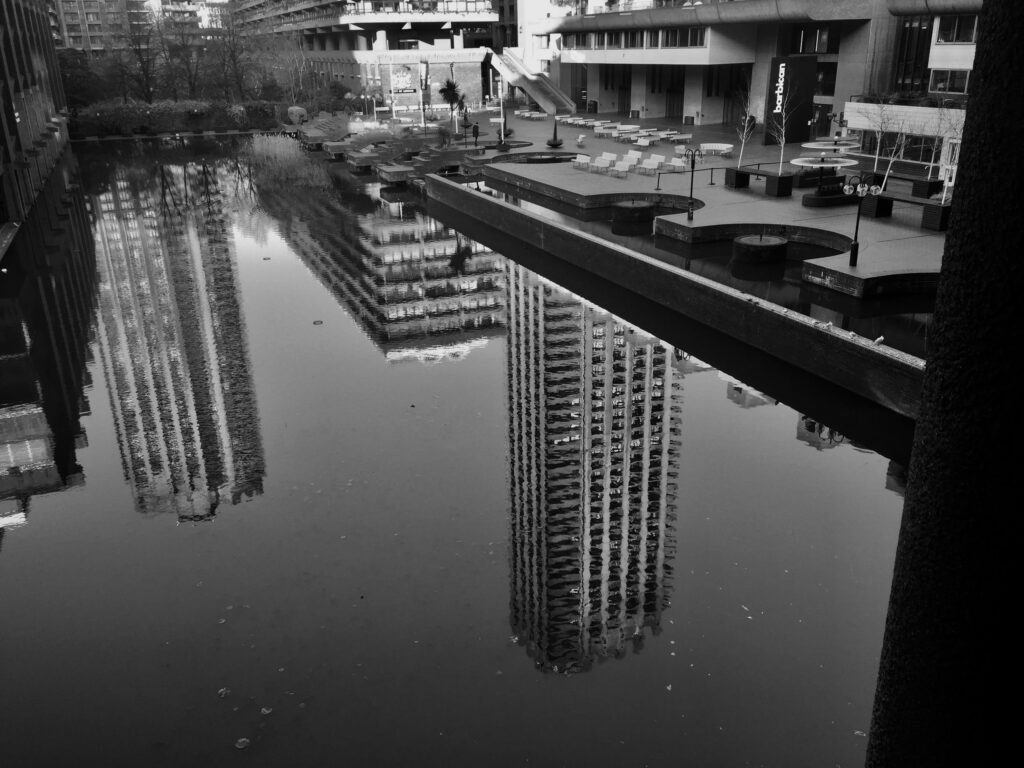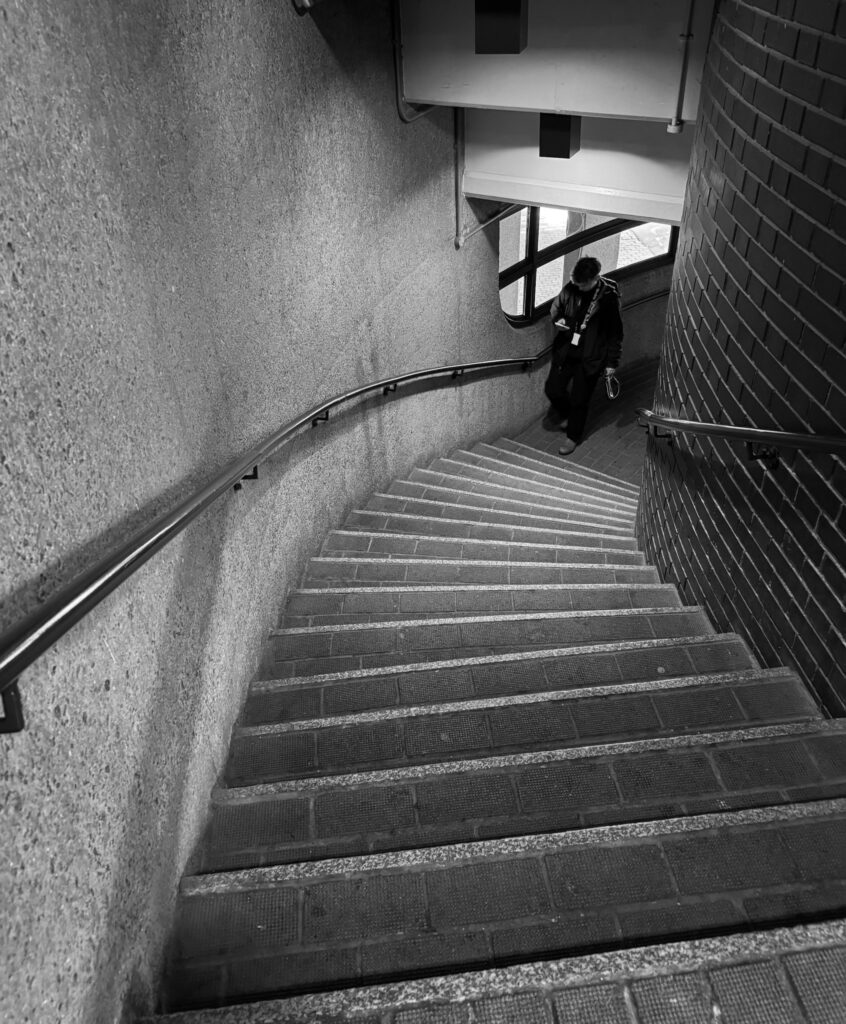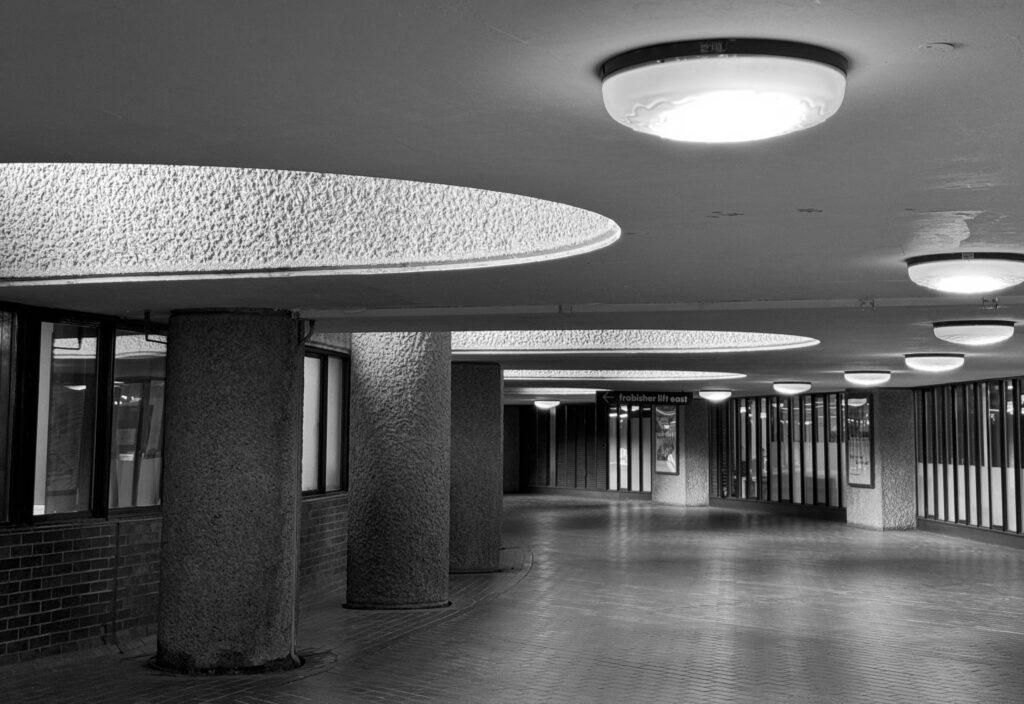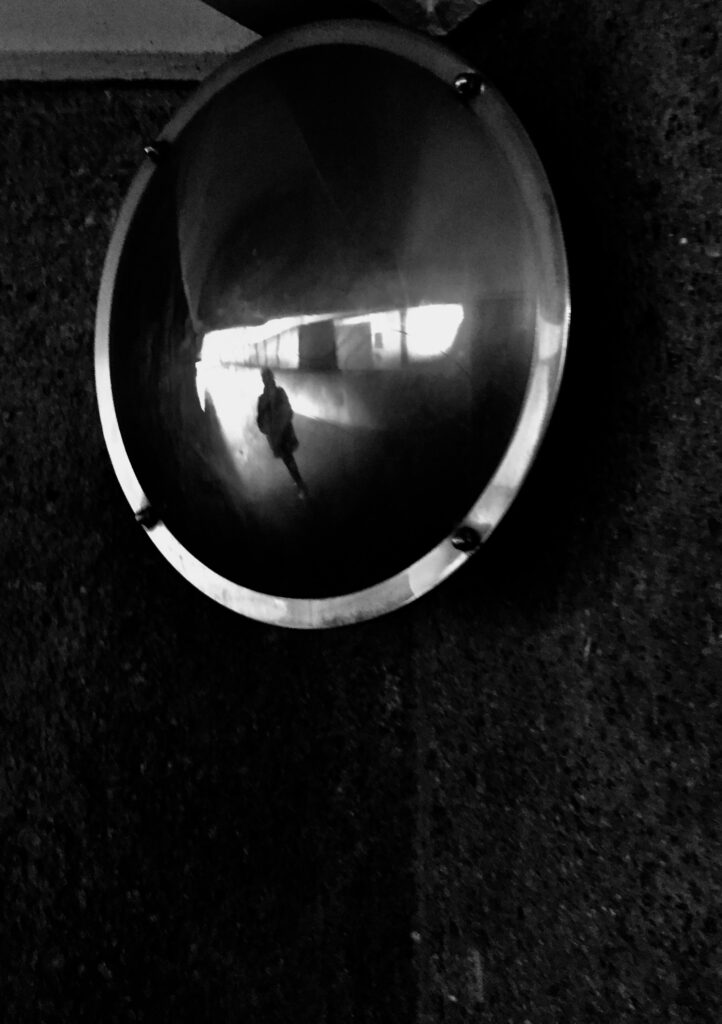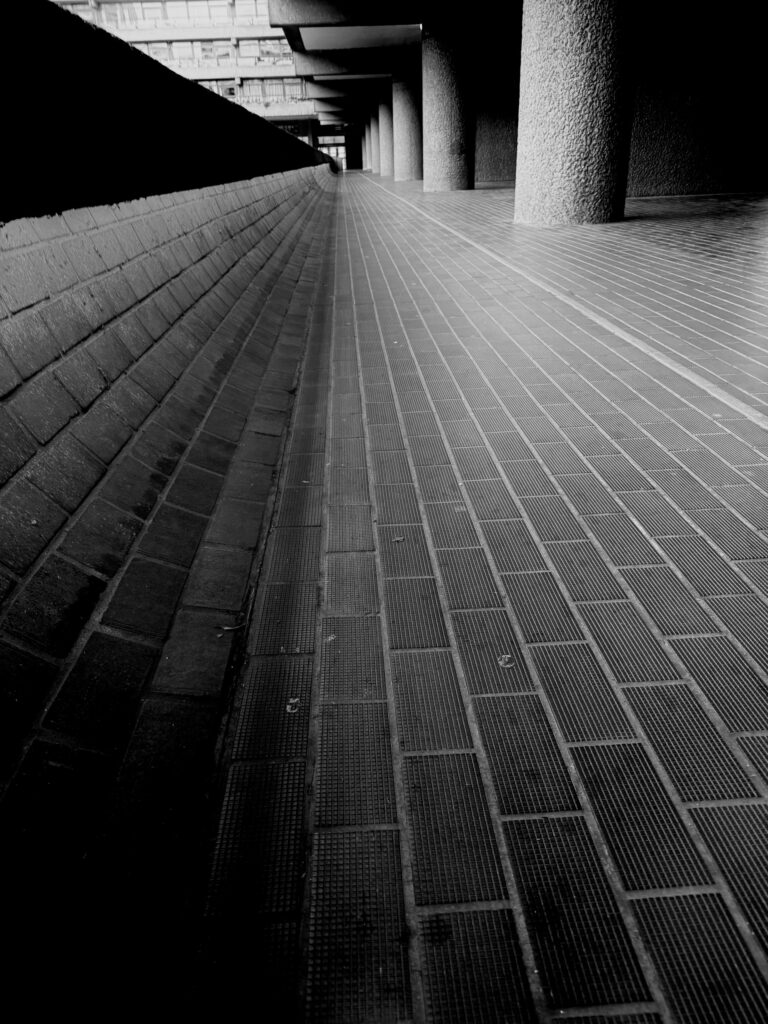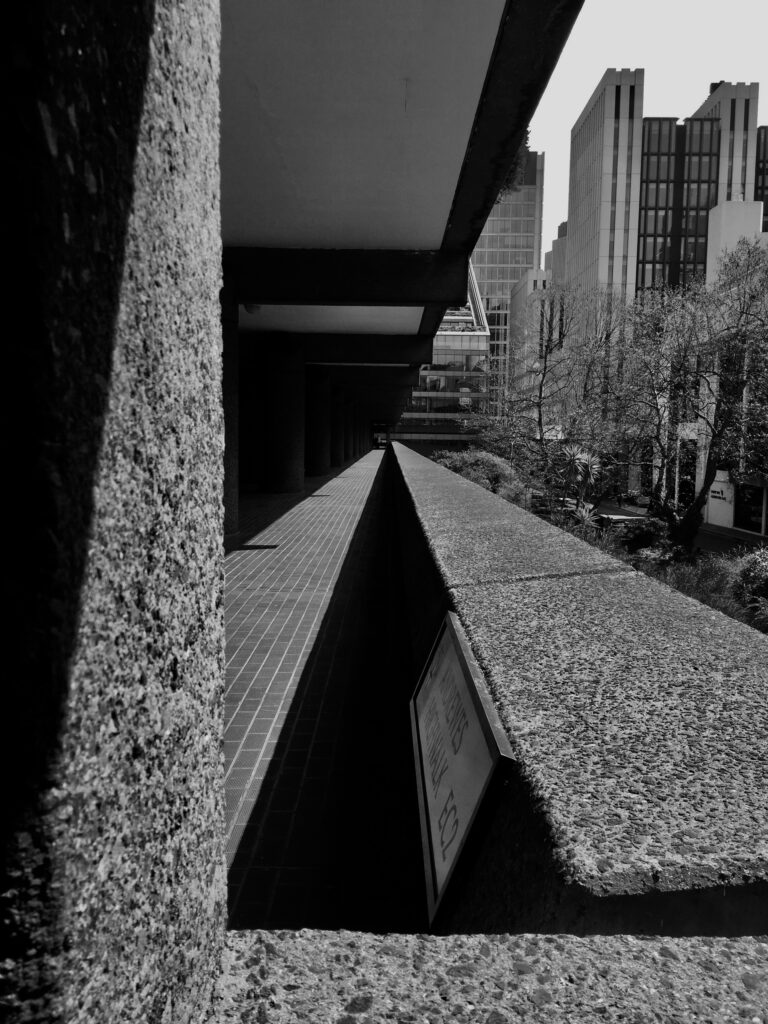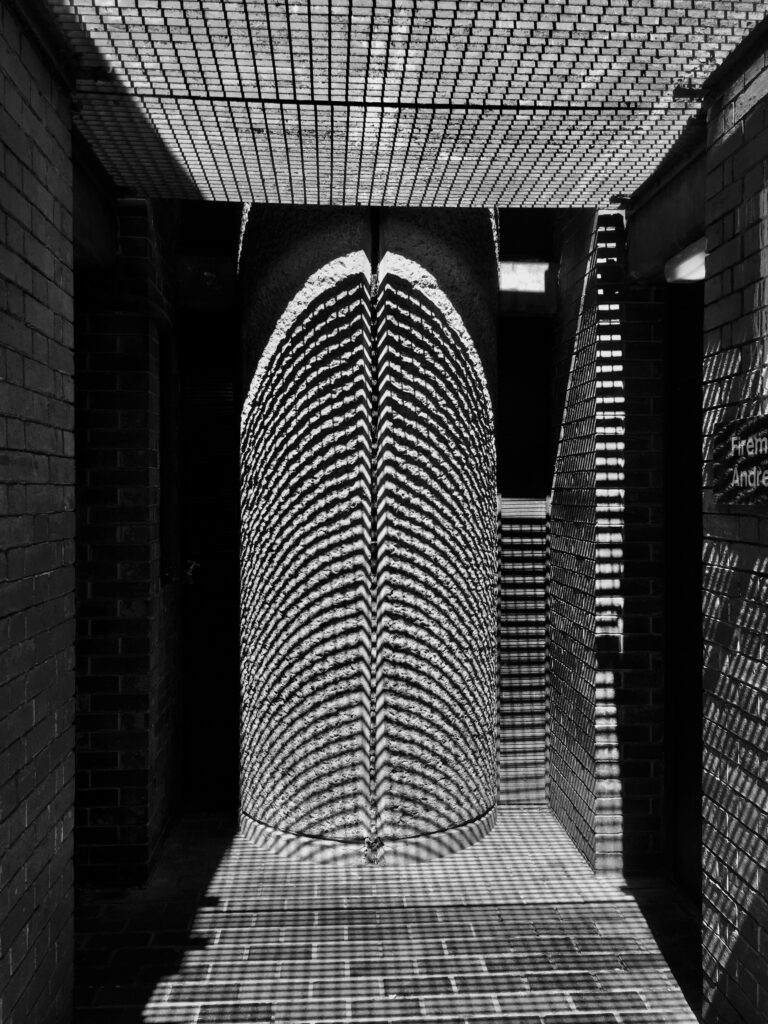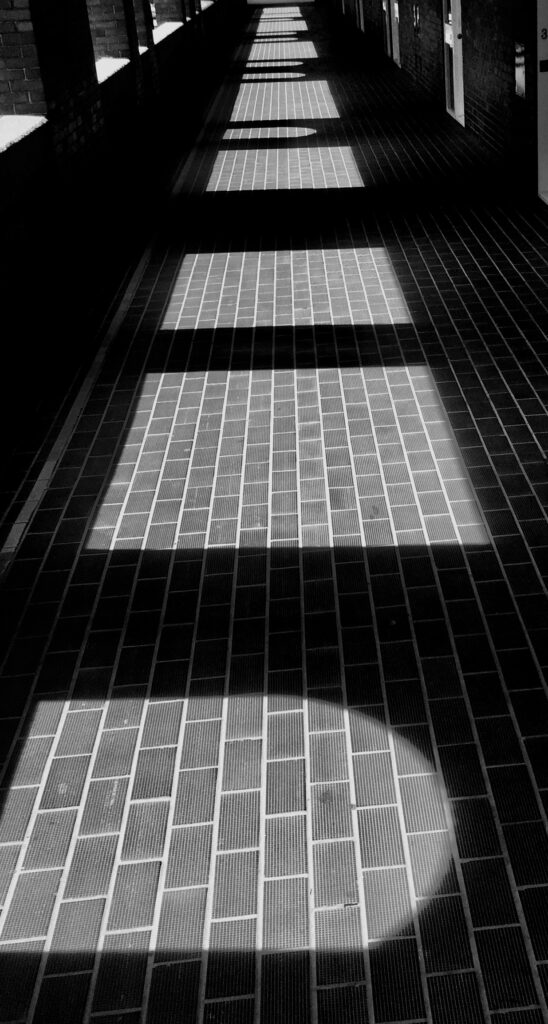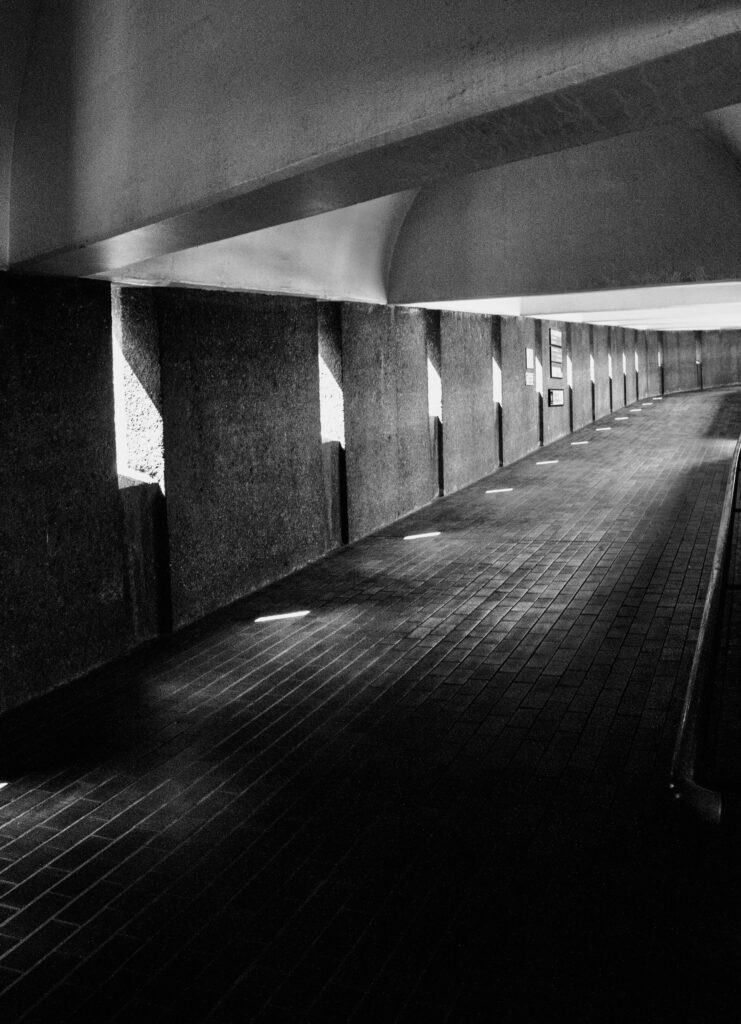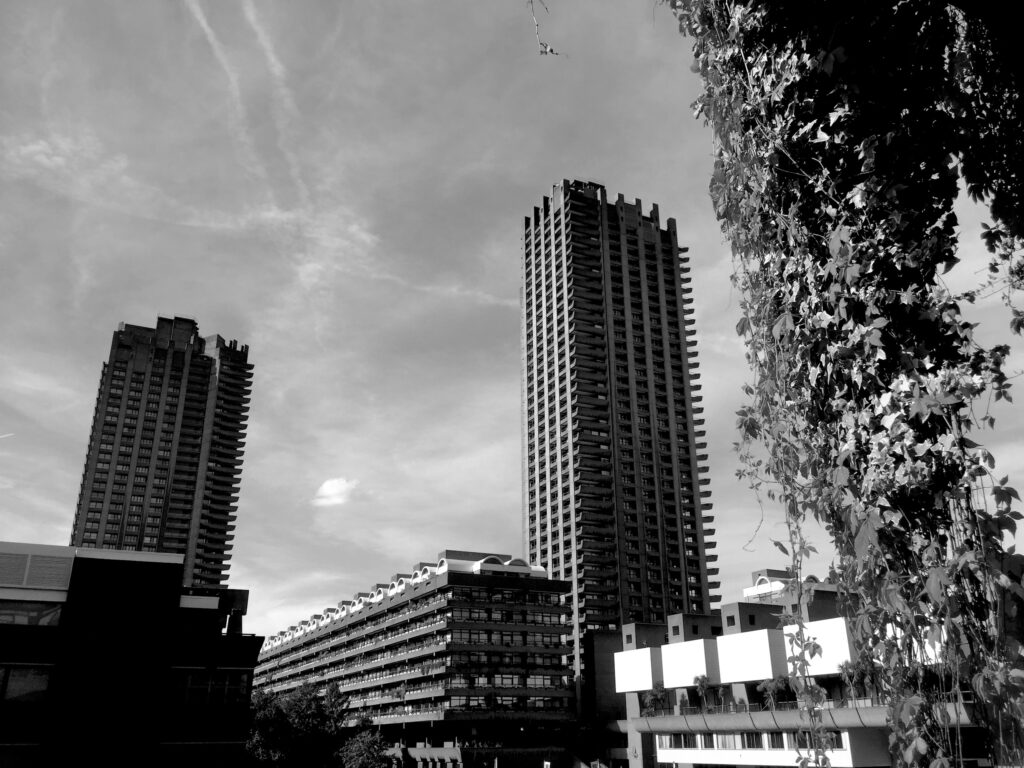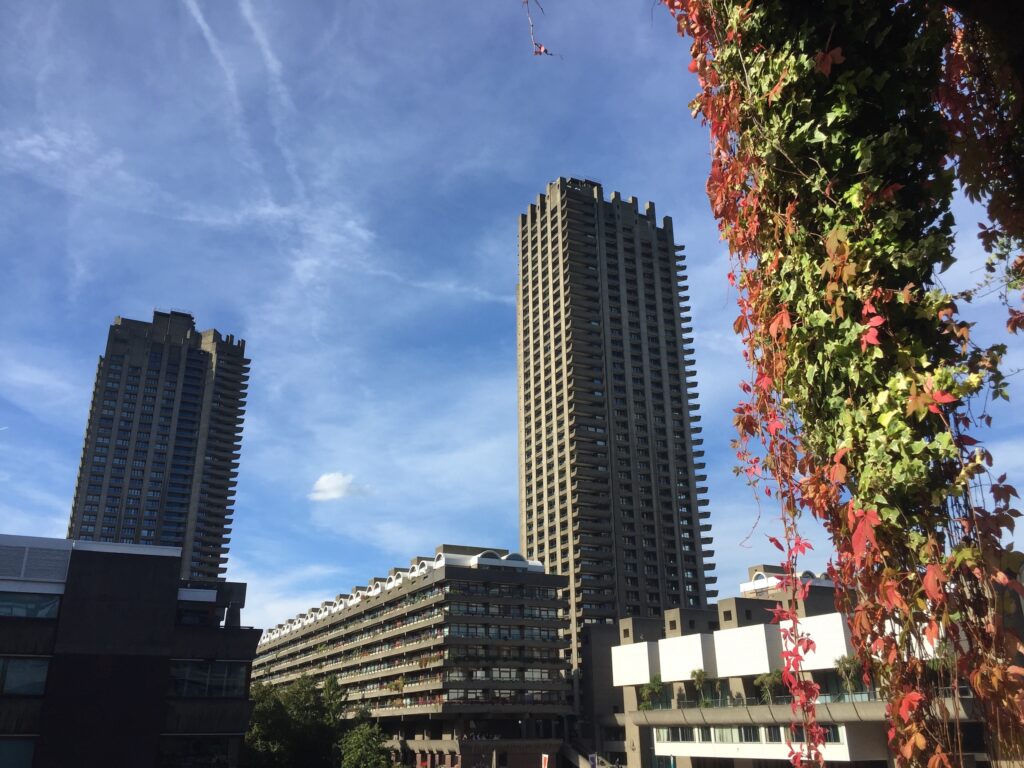Like many others, I was really sad to witness the demolition of what was usually called the Mappin & Webb building at Bank junction and see it replaced in 1997 by ‘1 Poultry’ by James Stirling. The old building a few years before demolition …

And at the turn of the 20th century …
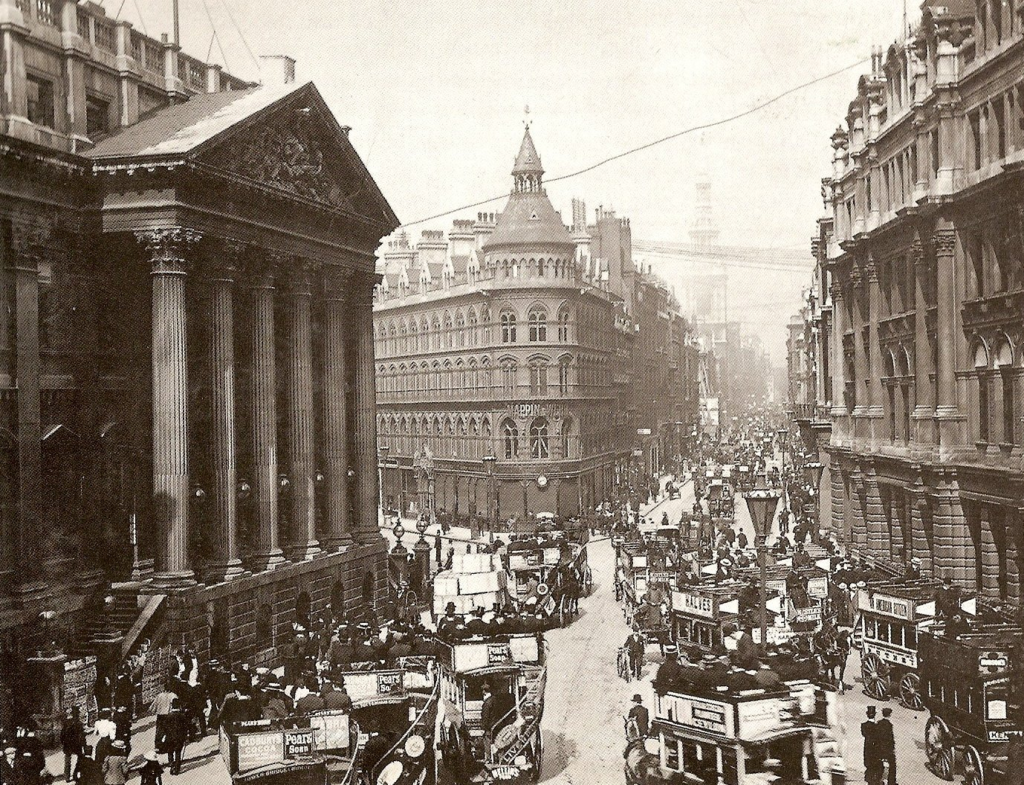
Its replacement …

However, if you look up at the north side of the new development, you will see a fascinating survivor from the original building of 1875. In red terracotta, it portrays royal progresses and shows visits to the City of (from left to right) four monarchs; King Edward VI (1547-1553), Queen Elizabeth I (1558-1603), King Charles II (1660-1685) and Queen Victoria (1837-1901) …
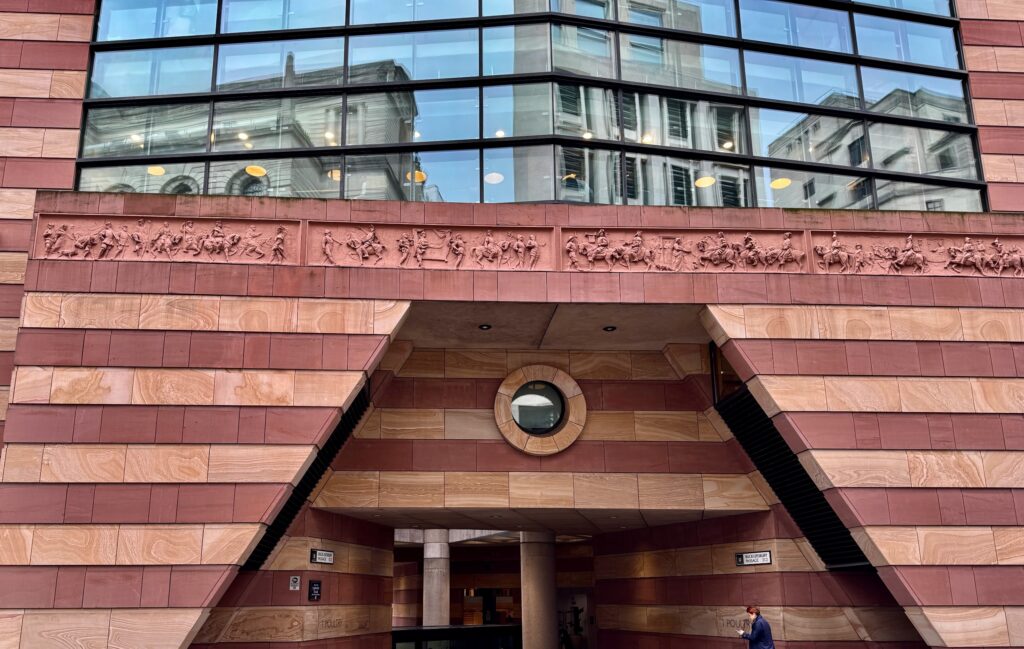
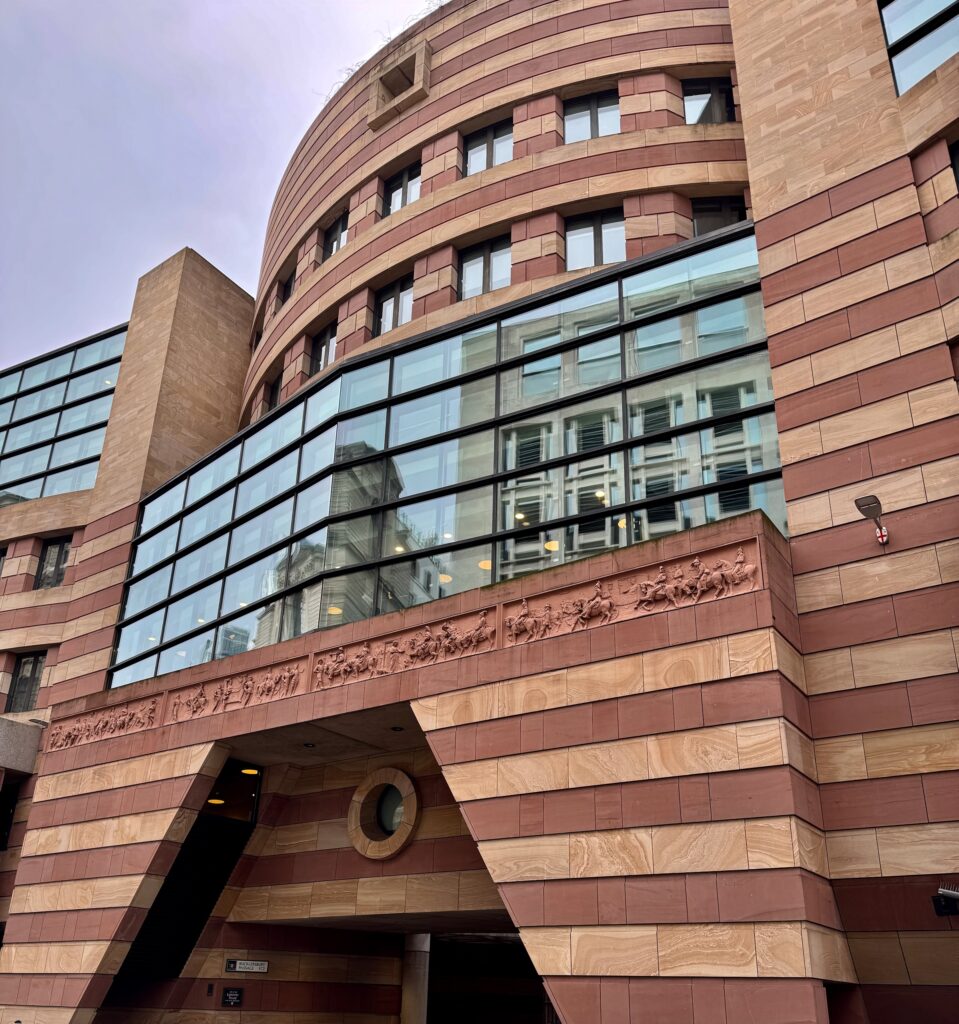
The incorporation of the panels was part of the listed building consent and we have the planning officer at the time, Tony Tugnutt, to thank for them being placed on Cheapside (where they used to be) rather than over the service entrance as originally suggested. I think they blend in with the new building extremely well.
Here are the panels from left to right. The detail, which is not really apparent from the street, is wonderful.
On the far left is King Edward VI, only son of King Henry VIII, who came to the throne aged nine. The parade seems to be being led by a monk (with a cross hanging by his side) and the entourage is being followed by a little boy and a dog. Look at the detailed figures carved in the background, and there is a great sense of movement with the prancing, trotting horses …

The handsome young King doffs his hat to the crowd …
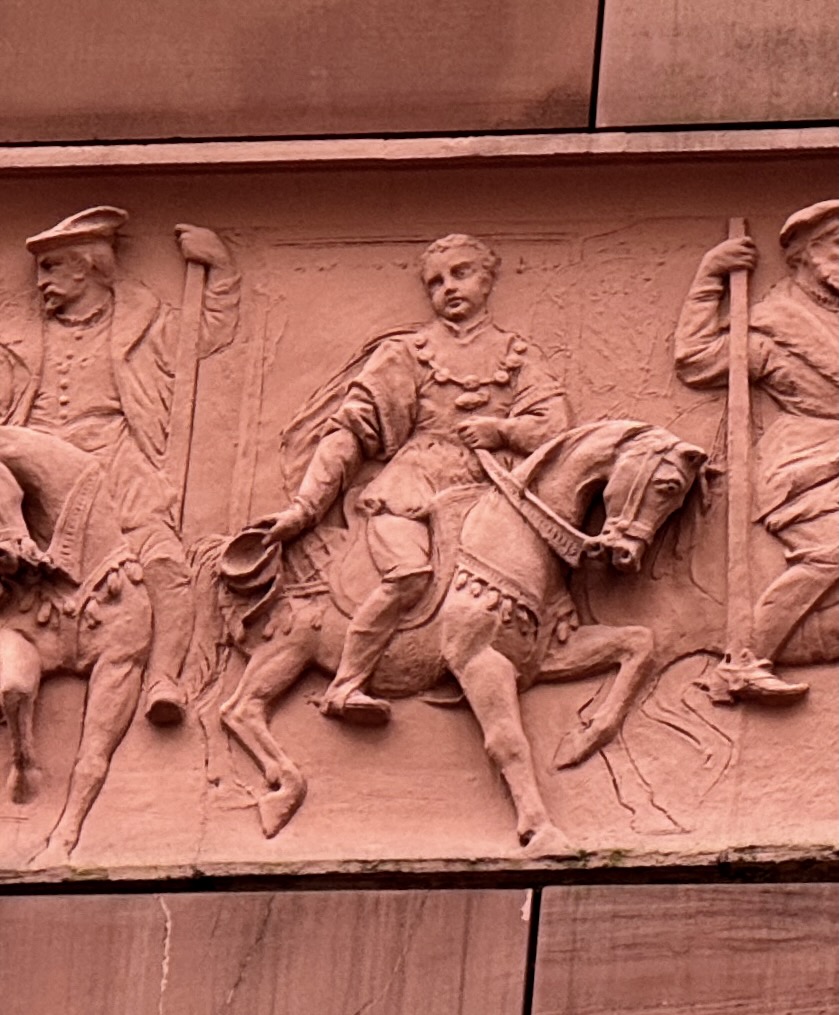
Queen Elizabeth I followed her half-brother Edward to the throne after the brief five-year reign by her half-sister Mary I. Mary was the first queen to rule England in her own right, 1553–58, and was known as Bloody Mary for her persecution of Protestants in a vain attempt to restore Roman Catholicism in England.
Elizabeth is carried in an extravagant sedan chair. Always fearing assassination, she is surrounded by well armed men …

Looking quite solemn, she is wearing her trademark pearl earrings. I like the little page boy bearing a cushion …
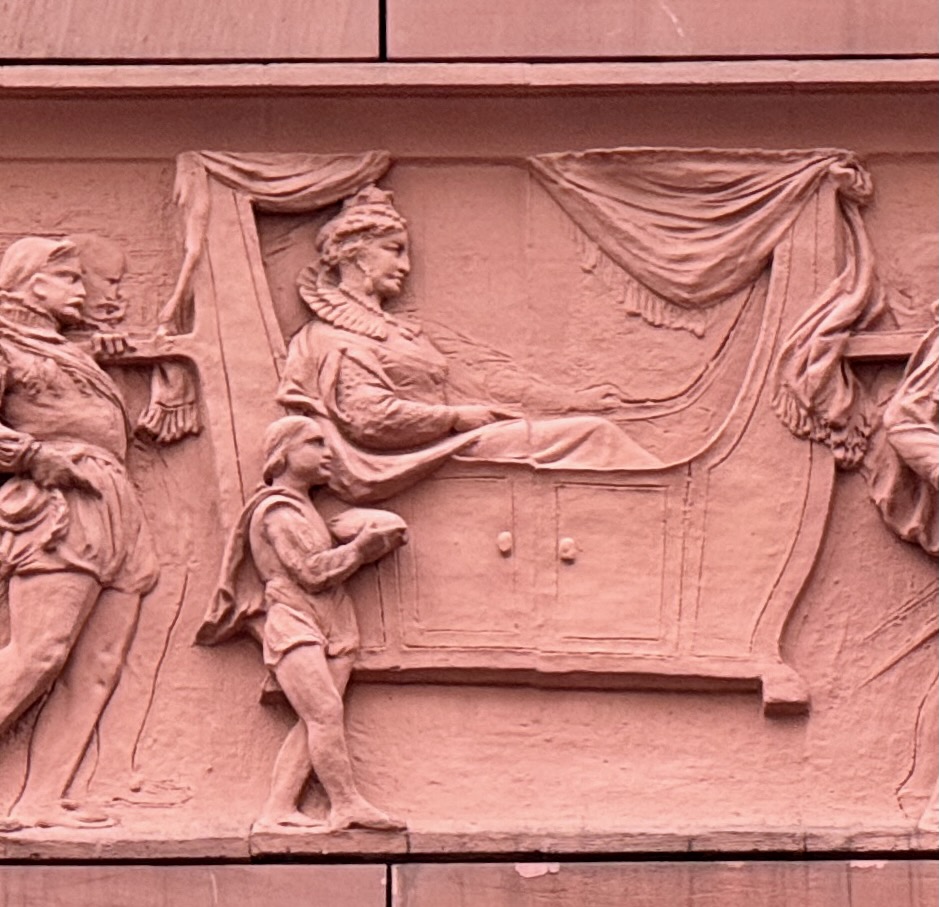
Now we skip a few kings and the Puritan times of Cromwell to get to the Merry Monarch Charles II …

He seems to be raising his hat to a lady, of course, and he’s accompanied by two of his famous spaniels. Is that a bishop smiling benevolently in a doorway?
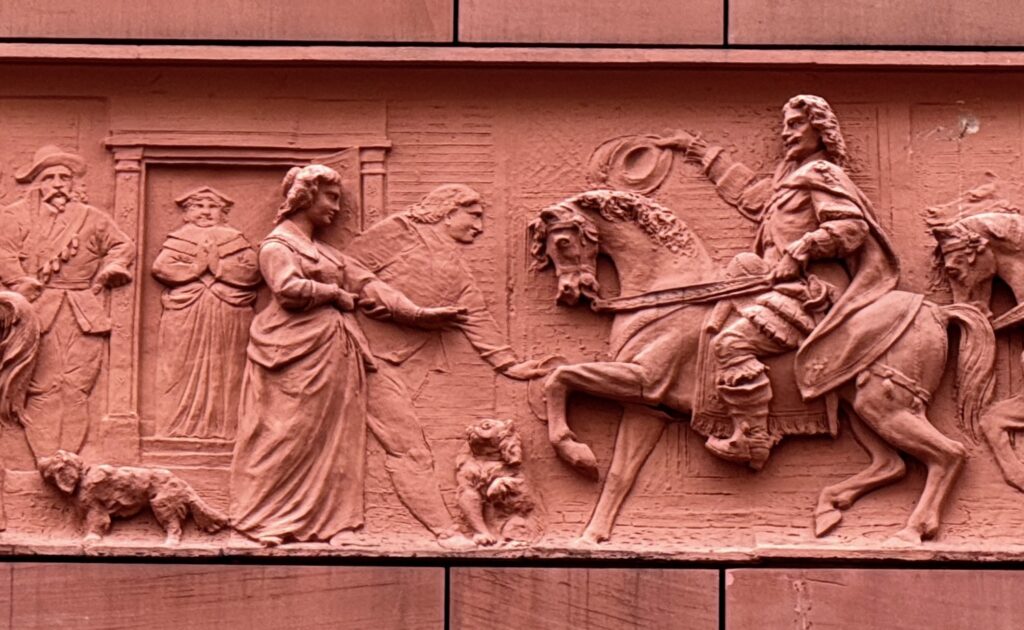
When this frieze was created Queen Victoria had been on the throne for almost 40 years, so it would have been unthinkable not to include her. It’s another scene full of animation …

The Queen leans out of her carriage making a rather odd hand gesture …
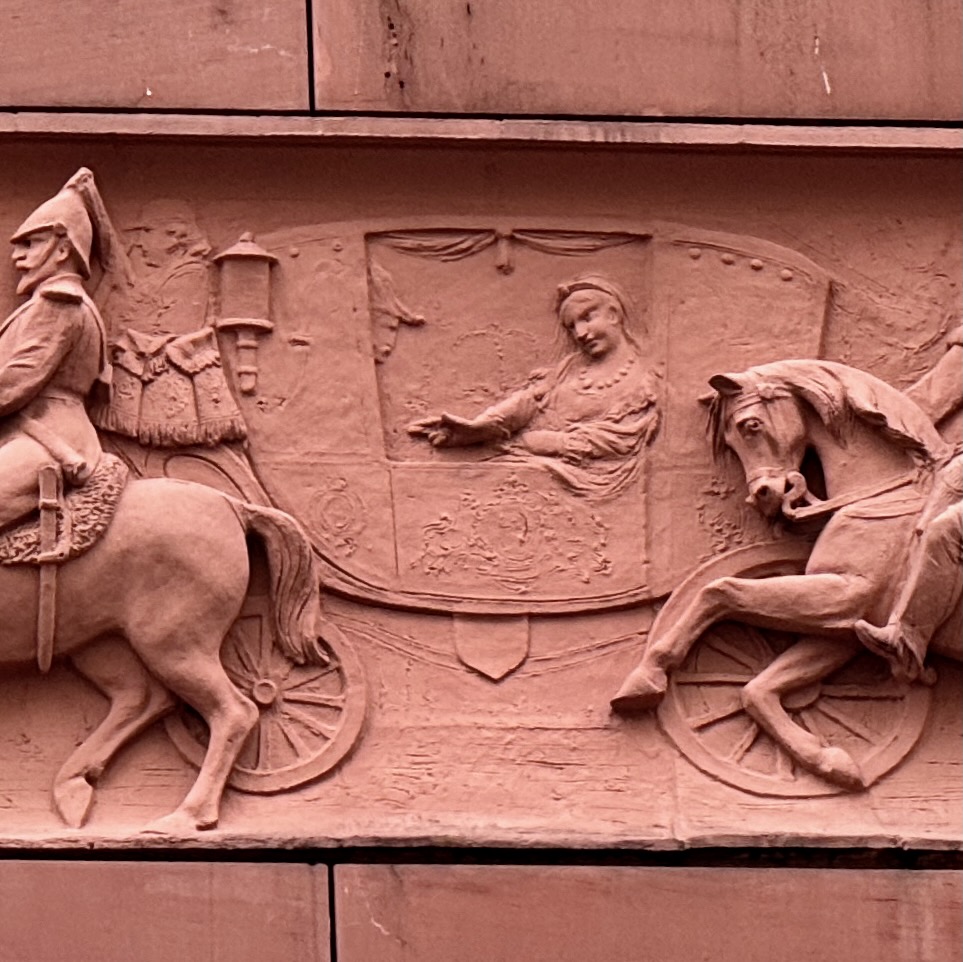
She seems to be accompanied by a man in a tricorn hat.
According to the excellent London Remembers website: ‘During the mid-Victorian era the stonemasons were the coal miners of their day and went on strike, so the panels were manufactured in terracotta rather than carved in red sandstone as the rest of the building, and in Belgium as a way of breaking the strike’. You can read more here.
If you’re not very fond of the Stirling building, remember that, also under serious consideration, was this effort by Mies van der Rohe …
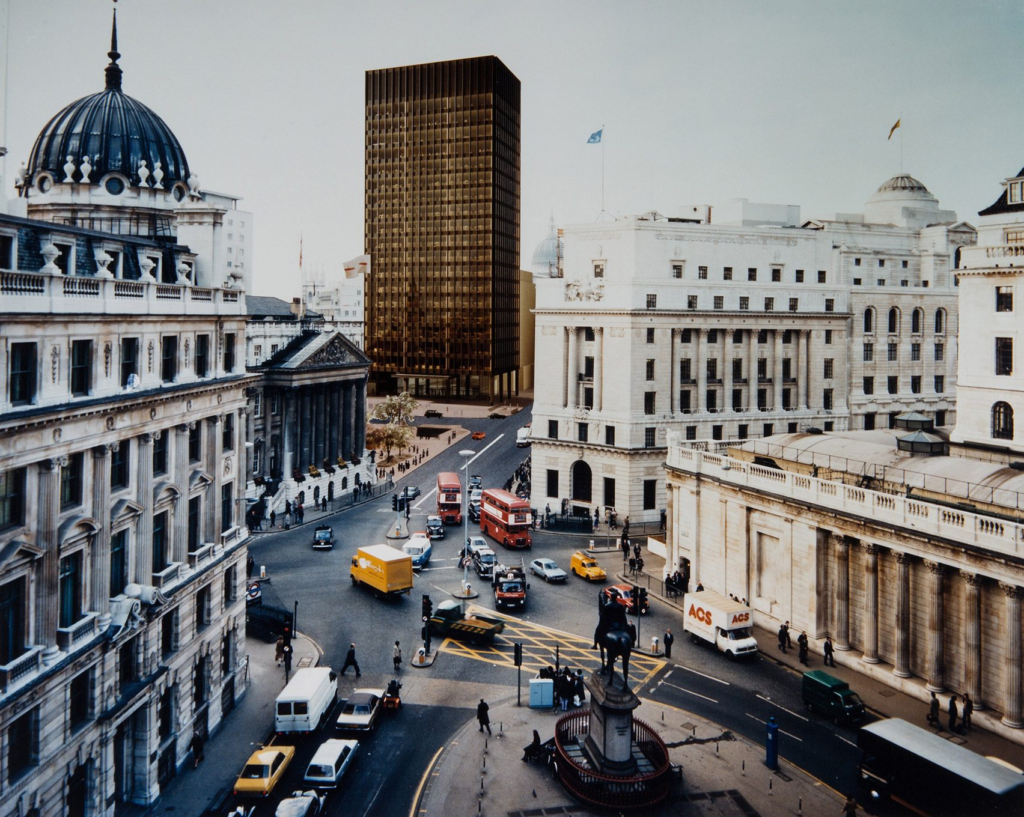
You can read a fascinating article about the proposed development of the Mansion House site here.
Inside the new building is the old Mappin & Webb clock …
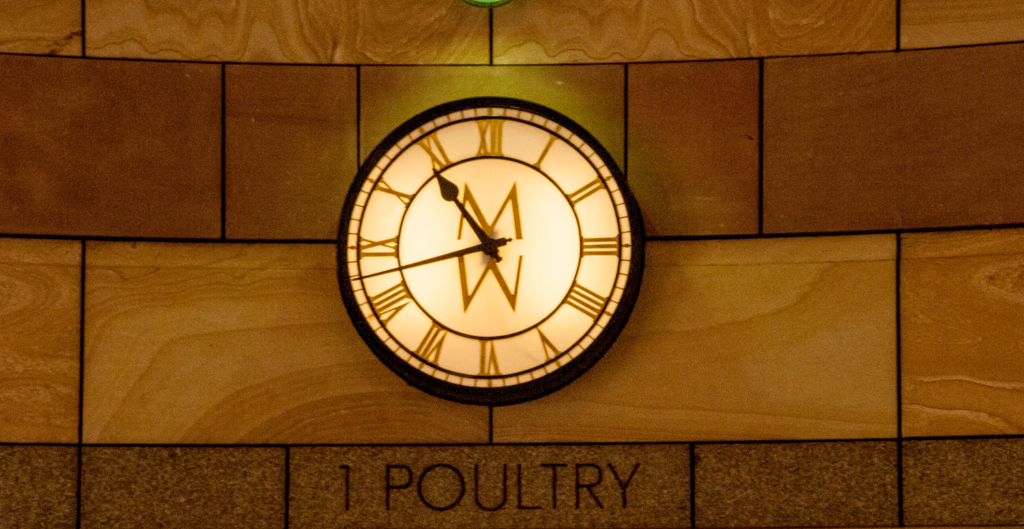
If you walk through to the lightwell and look up you’ll get a bit of a surprise …
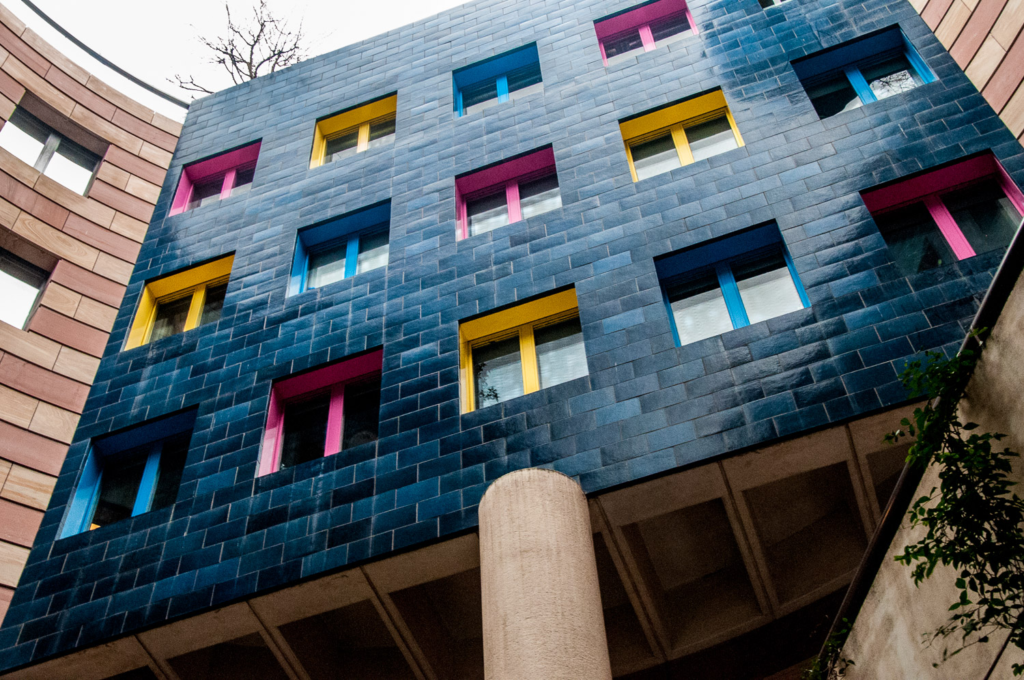
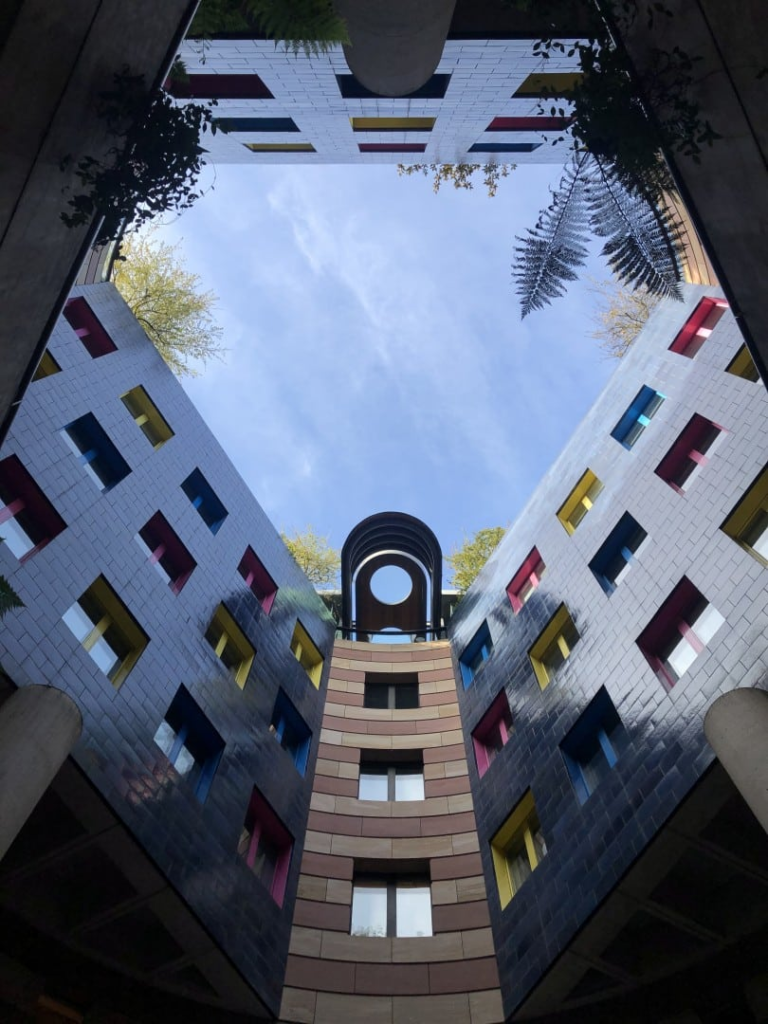
The three lightwell walls are lined with blue faience cladding enhanced by startlingly coloured window frames.
And now, a quick look at the exterior of Cutlers’ Hall (1886-7) in Warwick Lane. The ancient Cutlers’ Company’s origins go back to 1416, their business originally produced and traded in knives and swords but eventually expanded into household cutlery and domestic wares such as razors and scissors …
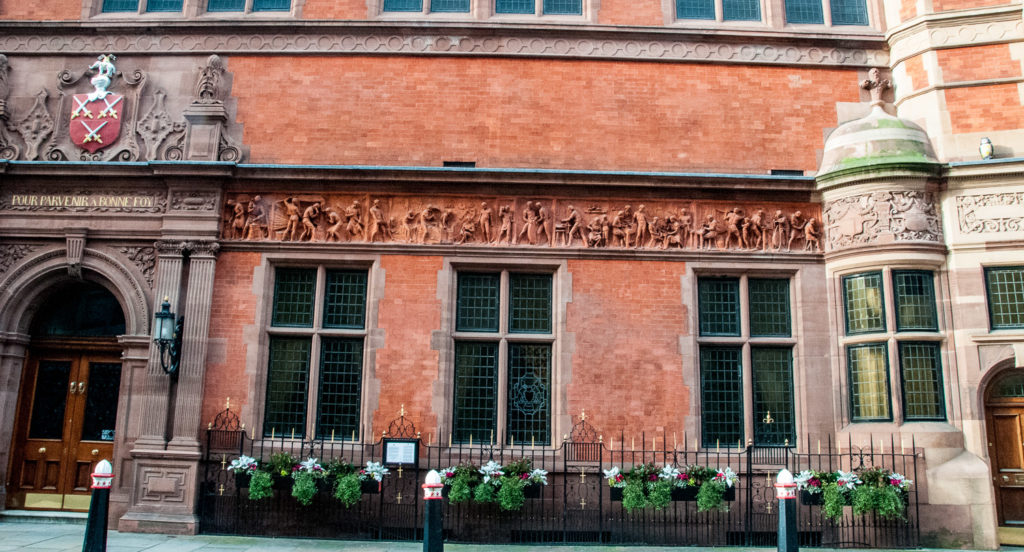
The work realistically depicts late Victorian cutlery production. This is not surprising since the sculptor, Benjamin Creswick (1853-1946) of Sheffield, was once a cutler himself. The frieze (containing 33 figures) was made by E. Goodall & Co of Manchester …

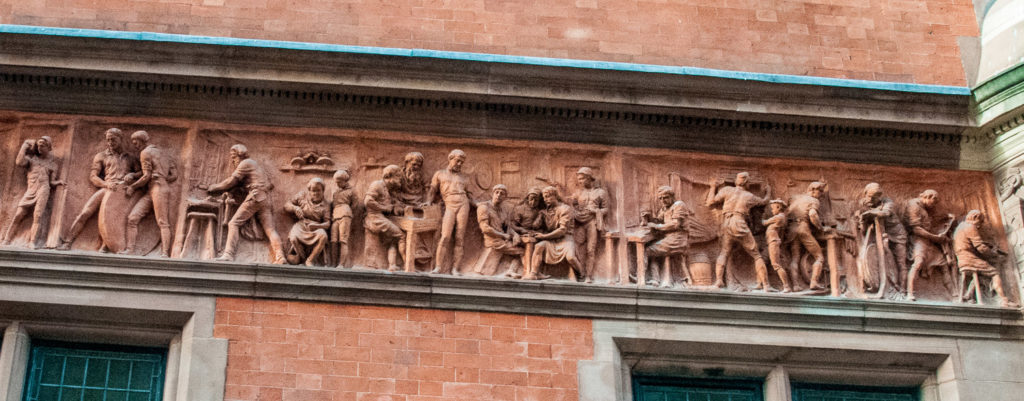
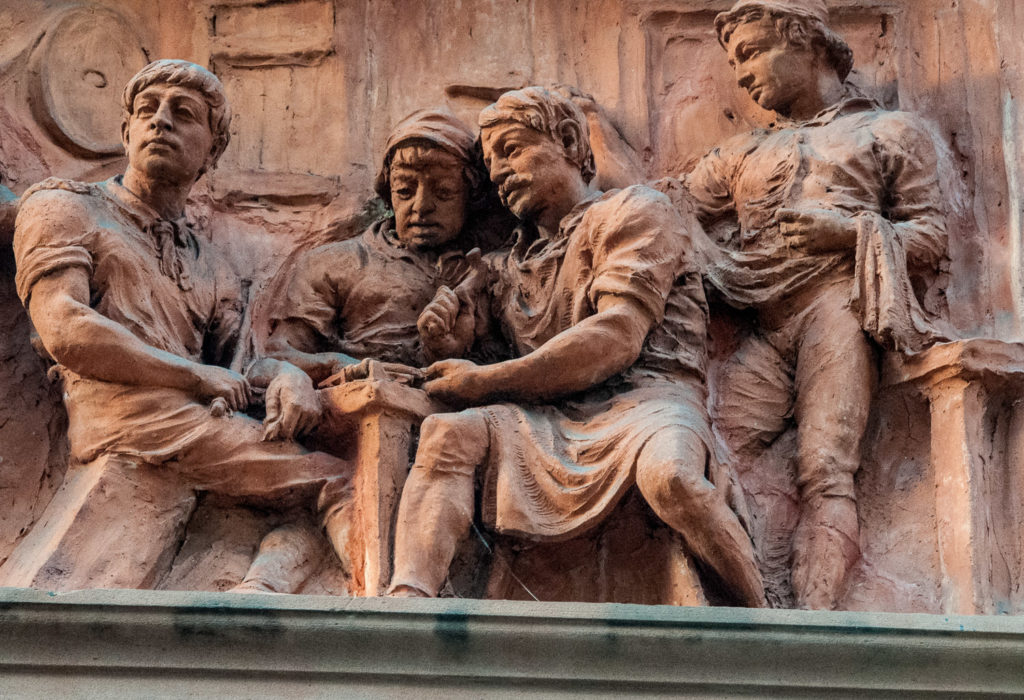
I’m going to write about this beautiful piece of craftmanship in more detail next week.
If you would like to follow me on Instagram here is the link …

